

15 Sights in One Day | A Self-Guided Walking Tour of Dublin
Dublin city centre is fairly compact and can be easily explored on foot. Knowing the Irish capital very well, I put together an itinerary for a self-guided walking tour of Dublin focusing on sights located in the city centre so you can see as much as possible in one day.
Time spent on this tour depends entirely on you. It can be completed in less than 2 hours if you plan on just getting a feel for the city. Or you can spend all day if you decide to explore further and visit some of the attractions along this walking route of Dublin .
So let’s jump right in!
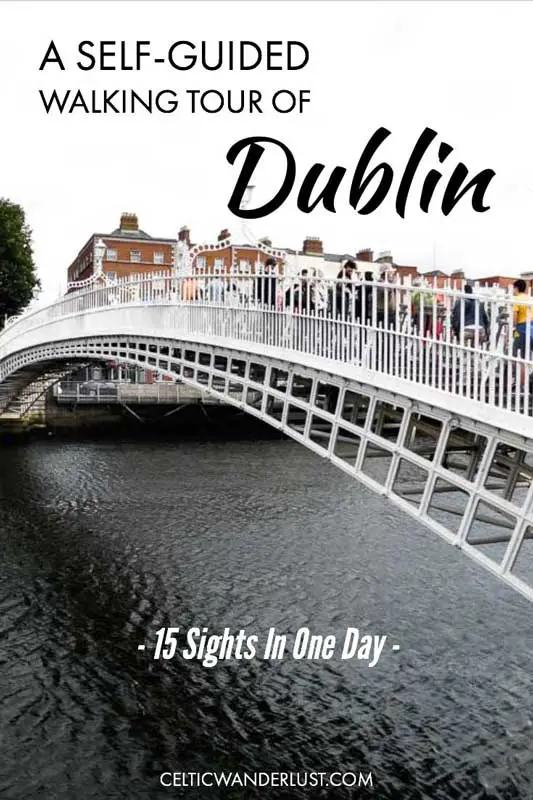
Disclaimer This post may contain affiliate links. If you click on a link, I earn a little money at no extra cost to you.
Best Online Resources to Book your Trip to Dublin
- Getting There | I would recommend Aer Lingus and Air France , two reliable and affordable airlines. If you’re travelling from the UK or France, you can also sail to Dublin with Irish Ferries and Stena Line .
- Where to Stay | You’ll find accommodation for every budget on Booking.com . Cheaper options can be found on Hostelworld .
- Things to Do | You can buy tickets, skip-the-line passes and day trips with GetYourGuide and Viator . Context Travel offers private tours led by local experts.
- Getting Around | Travel from and to Dublin airport with Aircoach or Dublin Express . Transport For Ireland free app will help you navigate the city transport network if you ever need a bus.
- Planning | Lonely Planet Dublin city guide is one of my favourite travel guides when it comes to planning a trip to the Irish capital.
- Travel Insurance | Don’t forget to buy travel insurance before visiting Dublin. Heymondo has a nifty app to help you get the assistance you need while on the go.
More Travel Resources
Self-Guided Walking Tour of Dublin – PART 1
A. O’Connell Street
Start your day on O’Connell Street . This large thoroughfare featuring statues to various Irish political leaders was in large part rebuilt after the violence of the 1916 Easter Rising . O’Connell Street has been the backdrop to several political events over the years and remains today the starting point of public protests and demonstrations.
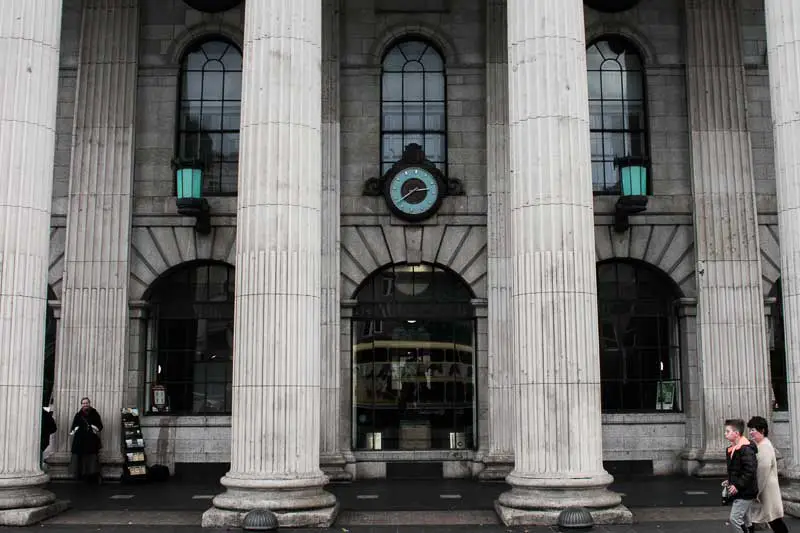
On O’Connell Street is one of Dublin’s main landmarks: the General Post Office . It is still a working post office today, rebuilt after its near-destruction during the 1916 events. Don’t hesitate to have a quick look inside, or why not check out its Easter Rising museum .
Also on O’Connell Street can be found the Spire , a controversial 121-metre-high needle of stainless steel that is now one of Dublin’s most recognisable features.
B. Ha’Penny Bridge
Taking a selfie on the Ha’Penny Bridge is a real cliché that few can resist. It is also a real challenge. Made of cast iron, this elegant but narrow 19th century pedestrian bridge over the River Liffey is a Dubliners’ favourite to cross between the North and South side of the city. Also very popular with tourists, it can become congested at times.
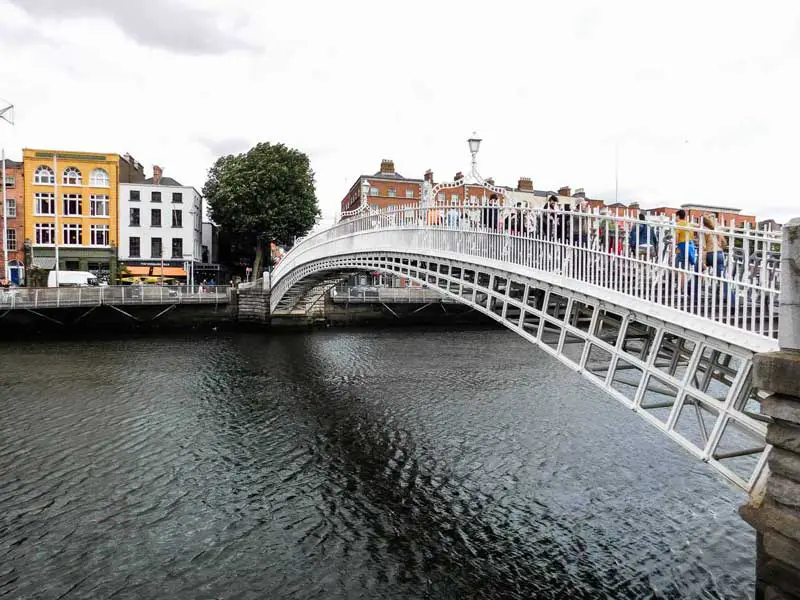
The bridge was built in 1816 to replace rickety ferries used by pedestrians to move between the North and South bank of the river. It owes its name to the toll that people had to pay to cross the river: half a penny.
You might also be interested in: – Ireland Travel Books | The Best Guidebooks to Plan your Irish Adventure – Beyond the Cityscape | The Best Seaside Towns Near Dublin – The 4 Best Distillery Tours in Dublin To Learn About Irish Whiskey – 5 Amazing Places to Visit Near Dublin Without a Car
C. Temple Bar
Once you have crossed the Ha’Penny Bridge, head straight beneath the archway and enter Temple Bar . The most photographed part of Dublin, Temple Bar is famous for its colourful pubs and Irish music pouring down its cobbled streets.
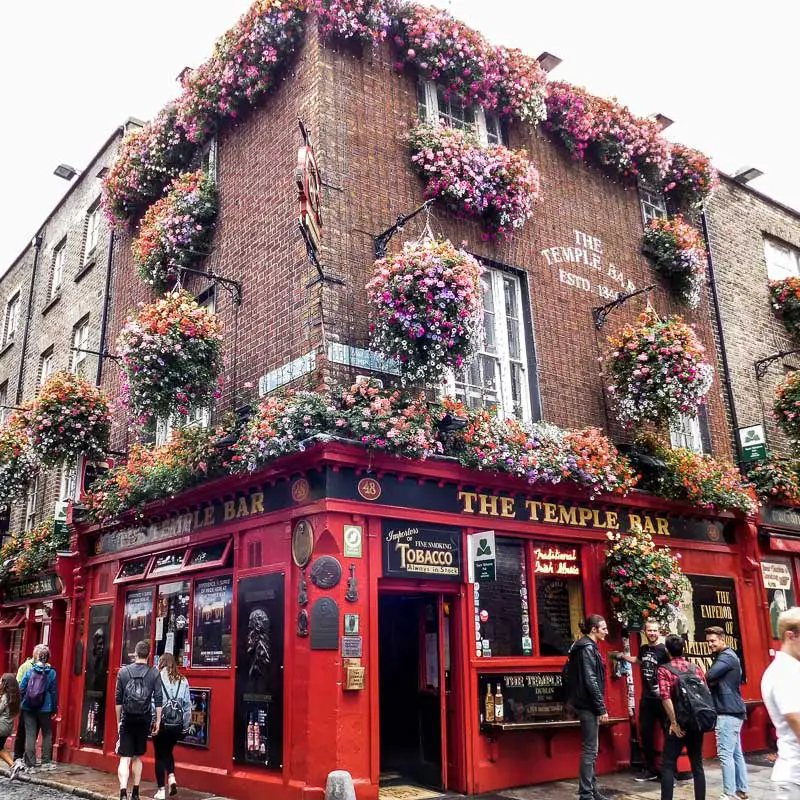
Often decried by locals as a tourist trap charging exorbitant prices for a pint of beer, Temple Bar is also Dublin’s cultural quarter , home to funky vintage shops, interesting art galleries, reputable restaurants and – a favourite of mine – a food market every Saturday.
D. Dublin Castle
Just across from Temple Bar is Dublin Castle . This wonderful piece of Georgian architecture is a must-see castle to visit on your first trip to Dublin . Dating from the 18th century, it replaced an earlier Norman fortress ravaged by a fire in 1684.
You won’t be allowed to enter the building without a ticket, but you can take a stroll around the Upper Yard for free and admire the Chapel Royal from outside.
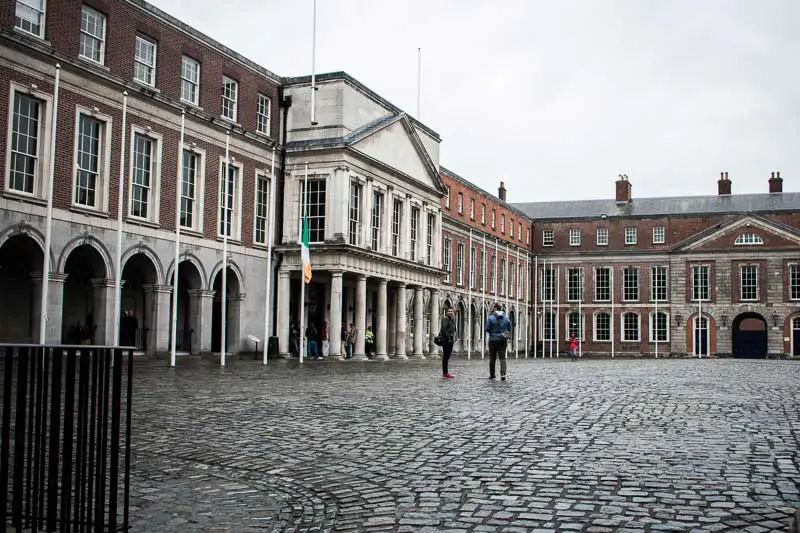
At the back of the Castle can be found the Dubh Linn Gardens , a landscaped haven of peace in bustling Dublin. It is also here you’ll discover the Chester Beatty Library . No doubt one of the best art museums in Dublin, the world renowned Chester Beatty Library is also free to visit. Your chance to take a peek at rare and richly decorated Bibles and Qurans dating back centuries ago.
E. City Hall
Next to Dublin Castle is the City Hall . Built in the 18th century, the building is a great piece of neo-classical architecture. City Hall holds temporary exhibitions and access is free.
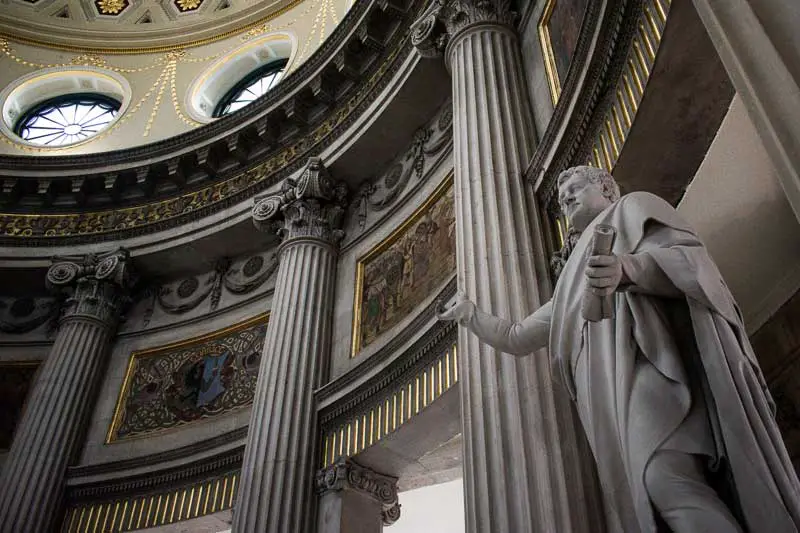
F. Christ Church Cathedral
Five minutes away is Christ Church , Dublin’s oldest cathedral. Extensively restored in the 1870s, it is an interesting mix of 12th-13th century architecture and Victorian Gothic features. Entrance is not free. If you decide to spend some time here, the guided tour will give you the opportunity to ring the bells in the belfry. Cheaper, you can also book a self-guided tour with audio guide (different languages available).
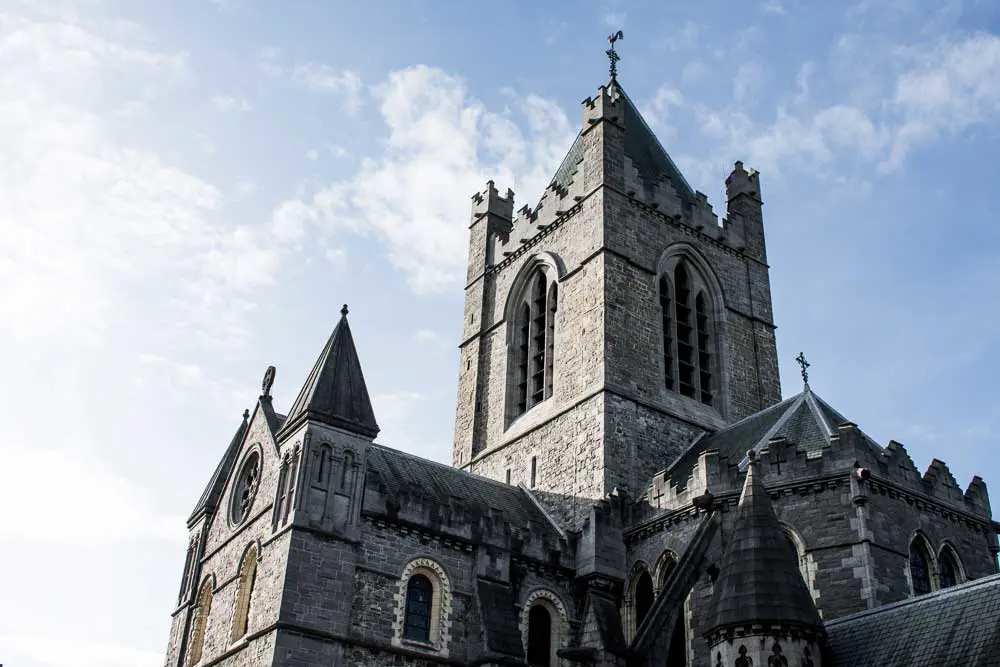
In the Synod Hall of the Cathedral across the bridge is Dublinia , a museum dedicated to Viking and Medieval Dublin that commands the access to the medieval St Michael’s Tower. Entrance is with ticket only.
G. Saint Patrick’s Cathedral
Located 5-10 minutes down St Patrick’s Street, Saint Patrick’s is Dublin’s second cathedral. Jonathan Swift, best known as the author of Gulliver’s Travels, is buried under its floor. He was Dean of the Cathedral from 1713 to 1745. Tickets must be purchased to enter the edifice.
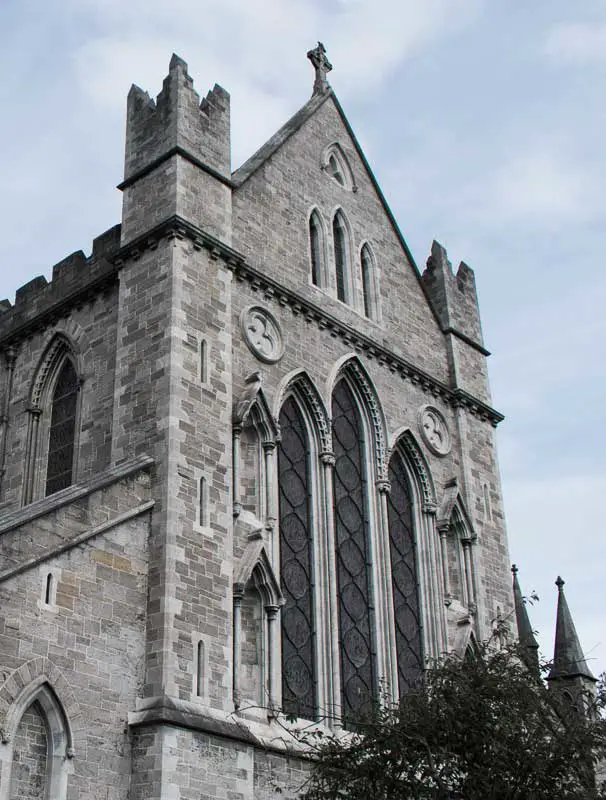
Adjacent to the Cathedral is the picturesque St. Patrick’s Park created in 1901 by Sir Edward Guinness. Around the corner from the Cathedral down St. Patrick’s Close can be found the Marsh’s Library . One of Dublin’s oldest libraries , the Marsh’s Library is a perfectly preserved 18th century library.
H. George’s Street Arcade
This walking itinerary will now take you back to the heart of the city.
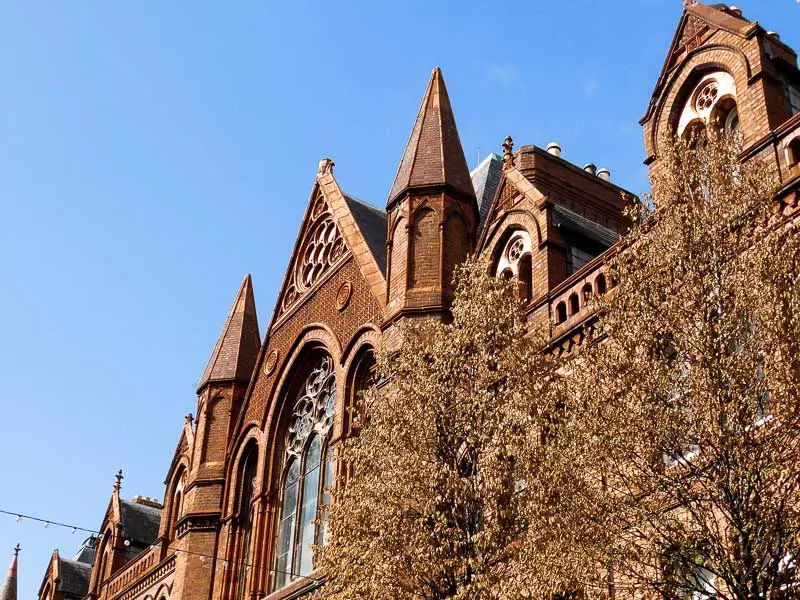
One of Europe’s oldest shopping centres, George’s Street Arcade is a Victorian indoor market home to an eclectic range of stores, stalls and cafés. Visit its vintage shops or browse drawings from local artists. Discover the unexpected in George’s Street Arcade.
I. Powerscourt Centre
In the heart of the Creative Quarter, Powerscourt Centre is a beautiful townhouse elegantly transformed into a shopping centre. Discover designer and craft shops, antique Irish brooches and rings including the famous Claddagh ring , or just take some time to relax with a coffee.
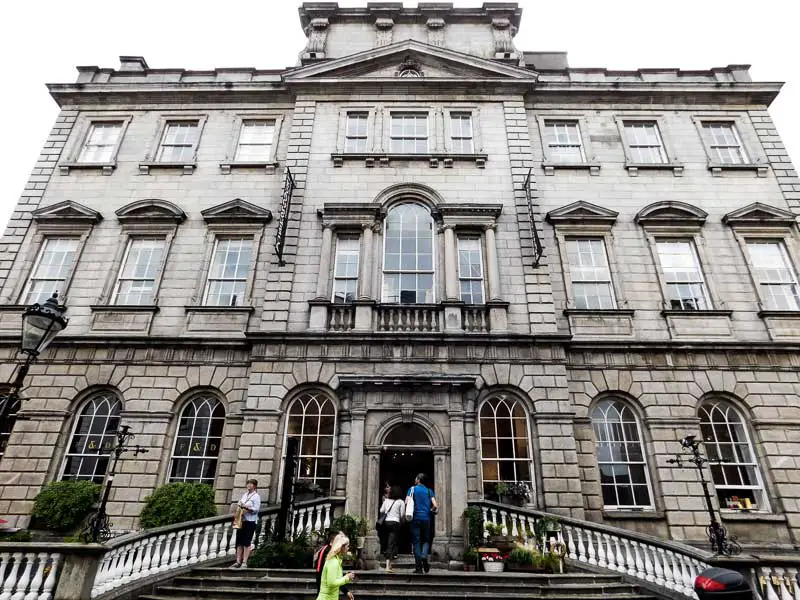
Wander through the streets of the Creative Quarter for more independent stores with locally made products and some of the best Irish craft and souvenir shops in Dublin .
J. Grafton Street
You’ve reached Grafton Street , Dublin’s main shopping district. This pedestrian-only street is home to many high-street brands, from Vans to Victoria’s Secret. On sunny days, Grafton Street is taken over by buskers and inventive entertainers. Talented or not, that’s up to you to decide!
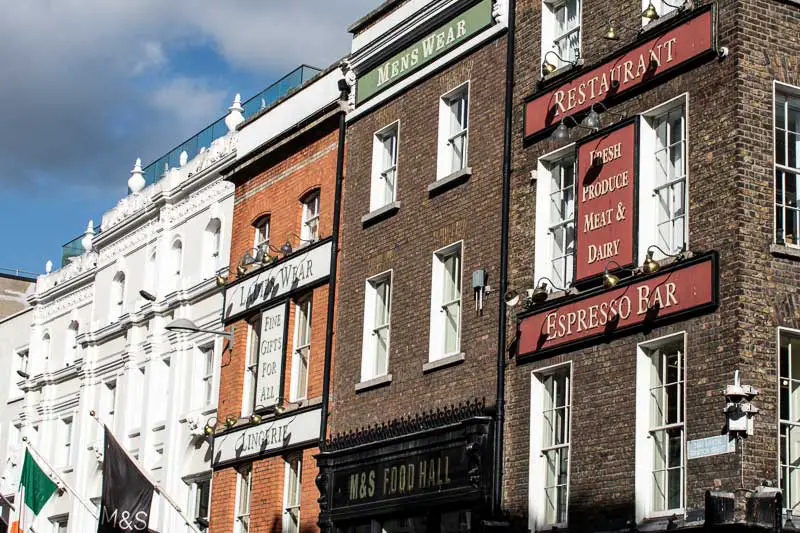
At Grafton Street’s far end sits Stephen’s Green Shopping Centre . Its impressive architecture of glass and steel should convince you to have a peek inside. Across from it can be found the Gaiety Theatre . Every summer, the Gaiety welcomes a world-renowned show: River Dance.
Feeling hungry or tired? Time to get some energy back before exploring further. Cafés and restaurants abound in Grafton Street and nearby side streets. Eat a sandwich on the go, sit on a terrace for a coffee and light bite, or enjoy comforting pub food. There’s something for every taste in and around Grafton Street.
Self-Guided Walking Tour of Dublin – PART 2
Now that you have rested your feet for a little while, let’s get back to our walking tour of Dublin .
A. St. Stephen’s Green
St. Stephen’s Green is Dublin’s largest Georgian garden square and one of the most popular public parks in the city. Donated by Sir Arthur Guinness to the people of Dublin in the 19th century, St. Stephen’s Green has been a respite from the bustling city ever since.
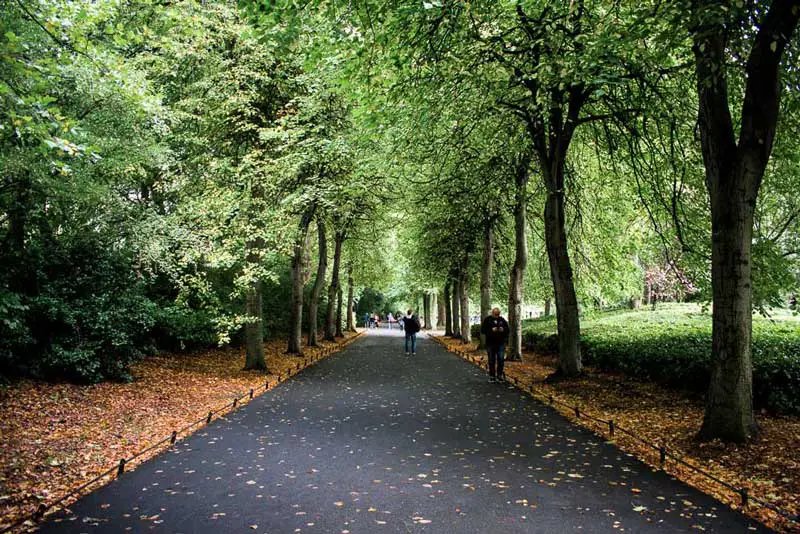
Across from St. Stephen’s Green, you might spot a 300-year-old cemetery on Merrion Row. Established in 1693, it was the burial ground for French Huguenots in Dublin , who fled religious persecution in France.
B. Merrion Square
With elegant Georgian townhouses lined up all around it, Merrion Square is considered Dublin’s finest Georgian garden square. Among other notable residents, famous writers Oscar Wilde and W.B. Yeats lived in those desirable homes, as well as Irish political leader Daniel O’Connell.
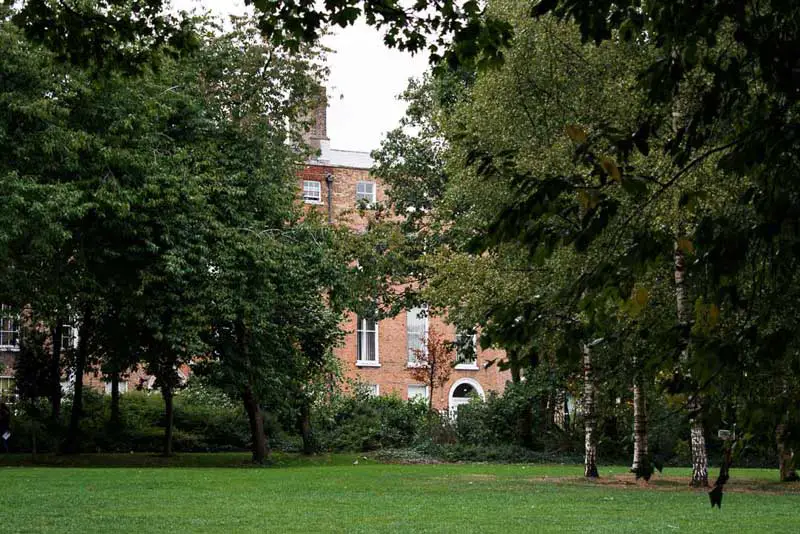
Only open to the public since the 1960s, it is worth wandering around the garden’s well maintained alleys and manicured lawns until you bump into the great Oscar Wilde himself resting on a rock.
Behind a secured gate, Leinster House and the Government Buildings can be observed at a distance from Merrion Square. If you fancy a breath of culture along your walking tour, the National Museum of Ireland and the National Gallery both have their entrances around the corner. If you are visiting the city on a budget, these free Dublin museums have to be on your do-list!
C. Trinity College
Enter Trinity College through Nassau Street. Founded in 1592 by Queen Elizabeth I, Trinity College is Ireland’s oldest surviving university and its most prestigious. You can roam the grounds freely and observe the elegant architecture of its oldest buildings harmoniously arranged in squares.
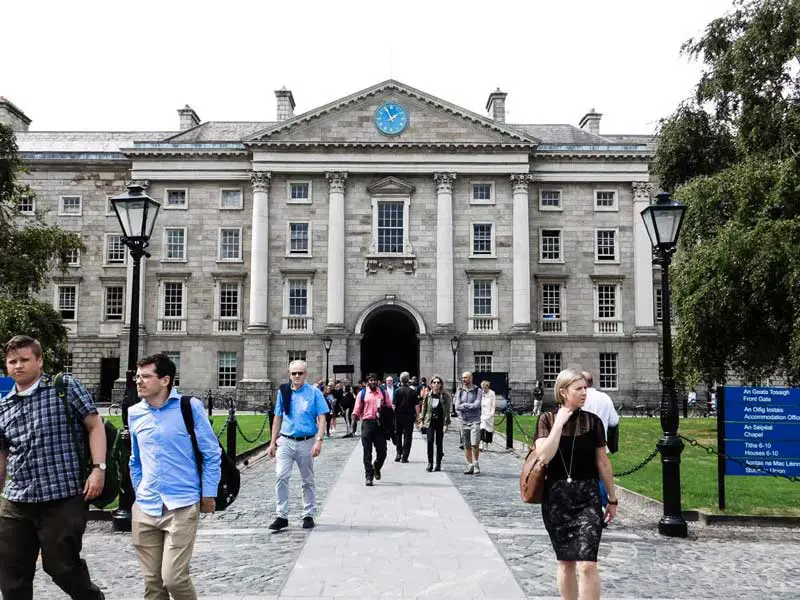
Tours are available from the main entrance on College Green, though not offered all year round. If you have some spare time, visit the Old Library (tickets only) that hosts an exhibition of the famous Book of Kells , an illuminated manuscript believed to date back to the 9th century. The Long Room with its spectacular vaulted ceiling is a must-see masterpiece.
D. Molly Malone
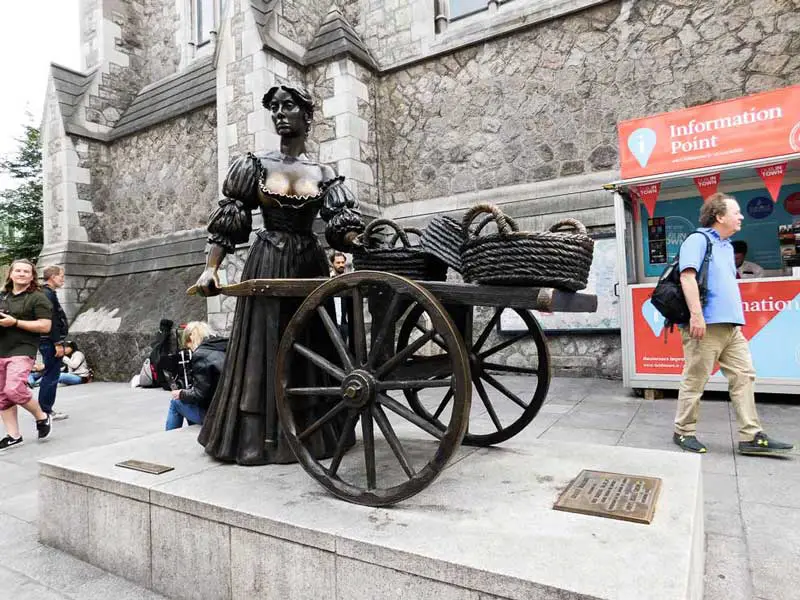
End your self-guided walking tour in front of St Andrew’s Church in St. Andrew’s Street where the statue of Molly Malone is now located. Molly Malone is a fictional fishmonger rendered famous by a popular song of the same name. The song has become the unofficial anthem of Dublin and ending a tour of the city without paying your respect to Molly Malone could be perceived as rude.
Guided Tours for the History Enthusiast
Self-guided tours are great. You can go at your own pace and decide where and how you want to spend your time.
But if, like me, you like learning about the history and interesting anecdotes of the place you visit, why not book a guided tour with someone knowledgeable?
Check out the recommendations below!
Where to Stay in Dublin City Centre
To make the most of your day, I recommend staying in the city centre to allow for an early start. Here are some recommendations of top-rated hotels with the perfect location:
- O’Connell Street: The Gresham
- Ha’Penny Bridge: Zanzibar Lock
- Temple Bar: The Hard Rock Hotel
- Grafton Street: The Westbury Hotel
- Merrion Square: The Alex
Click here for more options, or read the latest reviews on Tripadvisor . Dublin can be very pricey, especially in the summer months. Always book early to get the best deal.
I hope you will enjoy this self-walking tour of Dublin and you will get to see as many sights as possible in just one day. There is so much to see that you might want to come back and explore Dublin even more. Hopefully this Dublin city guide will give you more ideas of things to do during your next visit to this wonderful and lively city.
Disclaimer: This post may contain affiliate links. If you click on a link, I earn a little money at no extra cost to you.
RELATED POSTS
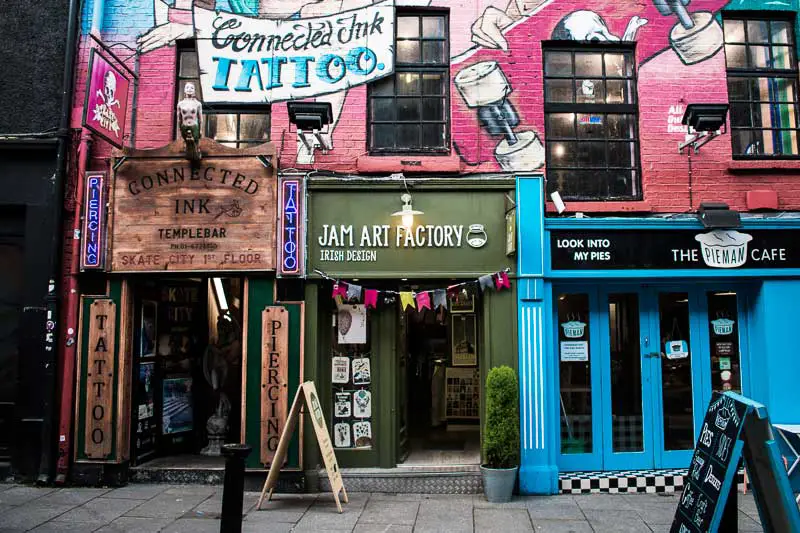
Top Things to Do in Temple Bar, Dublin, That Are Not Tourist Traps
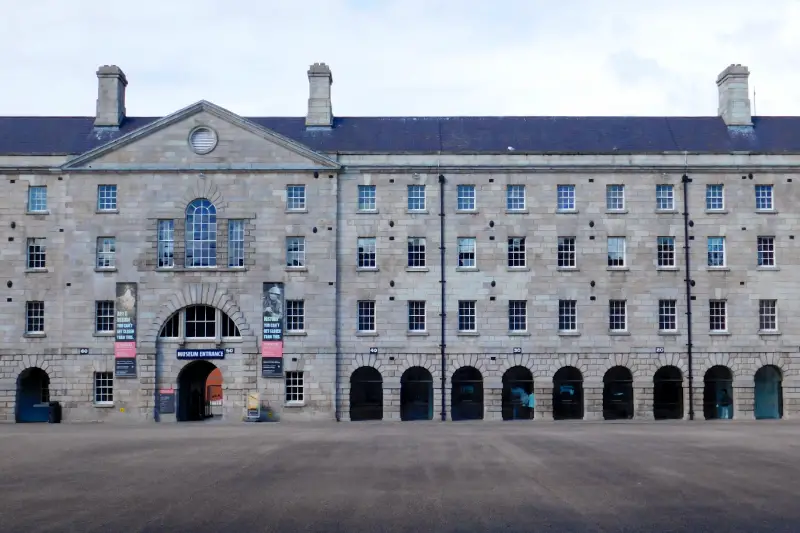
The Best Free Museums in Dublin You’ll Want to See
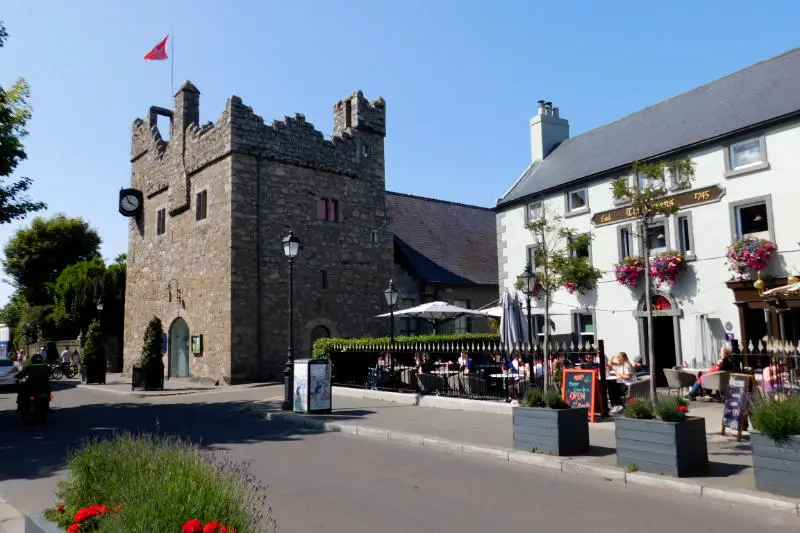
Beyond the Cityscape | The Best Seaside Towns Near Dublin
Leave a reply cancel reply.
Your email address will not be published. Required fields are marked *
Save my name, email, and website in this browser for the next time I comment.
You cannot copy content of this page

Jetsetting Fools
Travel Far. Discover More. Spend Less.
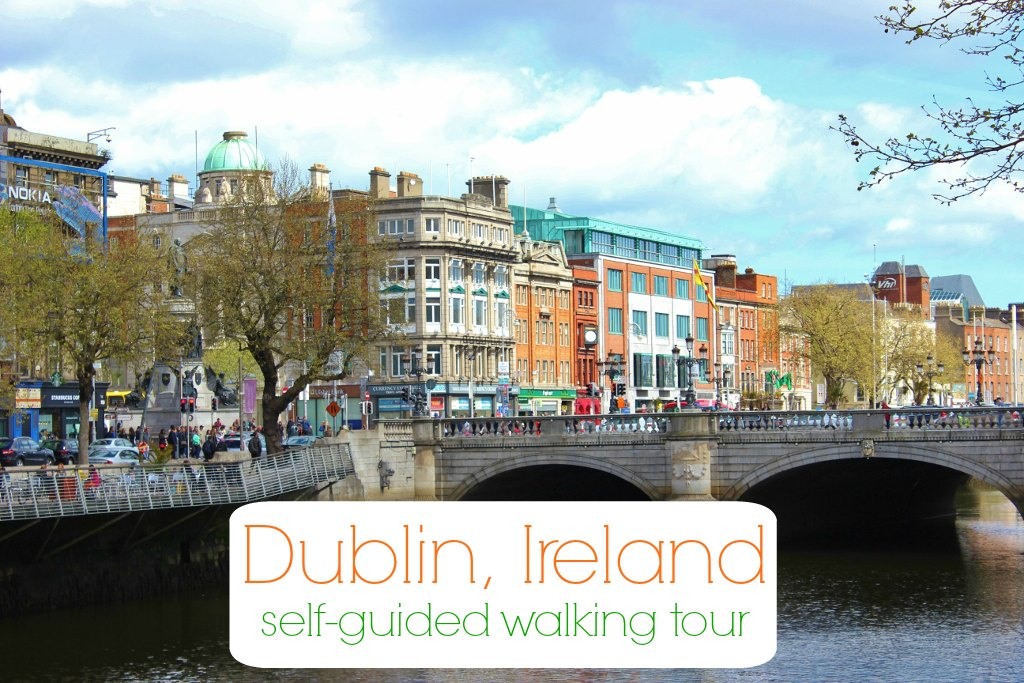
Dublin Walking Tour: A Self-Guided Walk To Dublin, Ireland Sights
Welcome to JetSetting Fools, here you will find our best travel tips for destinations worldwide. Some of the links on this site are Affiliate Links and if you use them to make a purchase, we may earn a commission. For more information, read our Disclosure Policy .
Dublin, Ireland is home to numerous iconic sights and historic attractions – and the best way to see them is on a Dublin Walking Tour. We have devised a go-at-your-own-pace Free Self Guided Walking Tour of Dublin that features the best of the city.
The top places to visit in Dublin are clustered together in the heart of the city center, which allows guests the opportunity to explore on foot. Travelers can use our easy-to-follow Self-Guided Dublin Walking Tour to navigate to the top sights… for free ! We even include a helpful Dublin Walking Tour Map to help you make your way.
Free Walking Tour Dublin, Ireland
Our free walking tour of Dublin is a self-guided adventure to top attractions. The walk focuses on downtown Dublin and is an easy, flat stroll through the city center. Our Dublin sightseeing tour, without any stops, should take about 2 hours at a casual pace.
How To Use Our Free Walking Tour Dublin
For each sight on our Dublin free tour, we provide a brief introduction, as well as some background information. Additionally, we include directions from one sight to the next. You will find our helpful map of Dublin tourist attractions – plus a printable Dublin, Ireland tour map – at the end of the article.
The route includes 15 Must-See Dublin Attractions, many of which can be entered. Some sights are free, while other require a ticket (we indicate if there is an admission fee). If you plan on entering several sights, the Dublin Pass will likely save you money and so will our article covering 50 Free Things To Do in Dublin !
Why Use Our Dublin Walking Tour Free Route
If you only have one day, this free walking tour of Dublin, Ireland will surely get you acquainted with the city, as it includes stops at all the top things to see. Visitors can complete the walk of Dublin highlights in just 2 hours, but those who are entering attractions can plan a full day of sightseeing.
Those with 2 days in Dublin – or more – can use our Free Tour Dublin Walk on the first day of their trip to get oriented. We also offer recommendations for more things to do in Dublin at the end of the article.
Free Tours Dublin: What You Need To Know
Our Free Tour of Dublin, Ireland is as advertised: absolutely free! Visitors simply follow our step-by-step tour as outlined below to the top sights. Our self-guided tour allows travelers to experience Dublin at their own pace and enter attractions as desired.
Walking Tour Dublin: Free & Guided
Visitors will see touts for many Free Tours in Dublin that are guide-led. However, it is essential to understand that a Guided Dublin Free Walking Tour is not, in fact, free. These Free Walking Tours Dublin are tip based – and guides expect (and hopefully deserve) tips.
While we have outlined our Best Free Walking Tour of Dublin, visitors may opt to join one of the many guided tours. There are many themed guided walks in Dublin, including historical walking tours, street art tours and Dublin food tours. We feature a few of the highly-rated Dublin walking tours – that are guided and require a fee – at the end of the article.
Save, Pin or Bookmark our Free Dublin Walk to use during your trip to Ireland!
Dublin Walking Tour: 15 Sights To See

Our self-guided, free tour of Dublin begins at Saint Patrick’s Cathedral. Use the provided links or the downtown Dublin Map at the end of the post to navigate from sight to sight.
#1 St. Patrick’s Cathedral in Dublin, Ireland

The first sight on our city tour of Dublin is the iconic St. Patrick’s Cathedral. It was on this site that in 450 AD St. Patrick baptized the first Irish converts. St. Patrick’s Cathedral was completed in 1191 and is the largest church in Ireland. The spire reaches 140 feet.
The cathedral is one of the top attractions in Dublin and visiting requires an entry ticket. Buy your ticket now and download it to your phone!
Map Directions from St. Patrick’s Cathedral to St. Stephen’s Green.
#2 St. Stephen’s Green

The second attraction on our Dublin, Ireland sightseeing tour is St. Stephen’s Green. The 22-acre park in the center of Dublin was created in 1664 and has been open to the public since 1880. St. Stephen’s Green features a pond, a bandstand, memorials, statues, several paths and green lawns. If you wish, you can visit the official site for more information about the park.
If there is time in your Dublin itinerary, consider having a relaxing picnic in the park. Alternatively, explore the area directly north of St. Stephen’s Green. Top attractions in the vicinity are museums (The Little Museum of Dublin, The National Museum of Ireland Archeology, The National Gallery of Ireland), the Irish parliament building (called Leinster), the historic Mansion House (the residence of the Lord Mayor of Dublin) and Merrion Square Park.
Map Directions from Saint Stephen’s Green to Grafton Street.
#3 Grafton Street

The pedestrian-only shopping district, Grafton Street, is the next stop on our tour – and one of the must-see sights in Dublin. Grafton Street leads from St. Stephen’s Green to Trinity College and features long-standing stores, recognizable brands, and historic cafes.
Sights to look for are the Brown Thomas Department Store (opened in 1849), Weir & Sons jewelry store (opened in 1869) and Bewley’s Café (opened in 1927).
Grafton Street is also popular with street performers and musicians that entertain the passers-by. In fact, even U2’s Bono has performed on Grafton. No Dublin visit is complete without strolling the iconic street.
Map Directions from Grafton Street to Irish Whiskey Museum.
#4 Irish Whiskey Museum

Whiskey is firmly part of Irish history. Today, distilleries dot the city landscape – each one offering their own story and tastings of their product. At the Irish Whiskey Museum, however, visitors get an unbiased version of the history of Irish whiskey…plus a chance to taste the product from several distillers.
The Irish Whiskey Museum is conveniently located on Grafton Street – making it a popular stop on walking tours in Dublin, Ireland.
While tickets are required for the tour and tasting experiences at the Irish Whiskey Museum, visitors are free to stop in and check out the bar and shop. If you are skipping the guided tour, brush up on your Irish whiskey history .
Map Directions from Irish Whiskey Museum to Trinity College.
#5 Dublin Trinity College

The famous Trinity College is the next stop on our Dublin walk (and it’s just across the street from the Whiskey Museum).
Established in 1592, Trinity College is Ireland’s oldest university and a must see in Dublin. The official name is College of the “Holy and Undivided Trinity of Queen Elizabeth near Dublin”, but is just called Trinity College for short.
Some of the college’s famous attendees are Oscar Wilde, Bram Stoker, Samuel Becket and Courtney Love. The 47-acre campus has buildings arranged in squares around a bell tower and the library houses the Book of Kells (buy your fast-track ticket ).
Map Directions from Trinity College to the Irish House of Parliament.
#6 Irish House of Parliament

Directly opposite the main entrance to Trinity College is the former Irish House of Parliament, and today houses the Bank of Ireland. The building is both architecturally and historically significant, which is why it is an important stop on walks around Dublin.
Built in the mid-1700s, the Irish House of Parliament was the first ever specifically designed parliament structure, in that it featured an interior with a dual chamber – one for the House of Lords and one for the House of Commons. It’s a design that is still used today in bicameral government buildings around the world.
In the year 1800, however, it was inside the building that the parliament voted (under bribery and threat of King George III) to abolish itself in order to unite Ireland and Britain under as the United Kingdom of Great Britain and Ireland. It was a relationship that only lasted 22 years.
One odd thing to note about the building is the absence of windows. While there are places for windows, glass panes were never installed as there was a Window Tax that would have driven up the cost.
Want to take a fun detour? Just around the corner from the House of Parliament is one of the most famous statues in Dublin – the Molly Malone Statue ( MAP ). Walk past the front of the Parliament House and turn left on Church Lane and walk about a block to find the famous Molly Malone. She is a character in an Irish song – a fishmonger by day and prostitute by night. The statue is often referred to as ‘The Tart with the Cart’ and visitors rub her bosoms for good luck.
Map Directions from Parliament Building to O’Connell Street.
#7 O’Connell Street and The Spire

Continue your Free Dublin Walking Tour by making your way north to the O’ Connell Street Bridge. Standing on the bridge, look up the stretch of O’Connell Street as it leads north from the River Liffey. The street has been the site of massive protests, the annual St. Patrick’s Day parades, shellings during the 1916 Easter Rising and a bombing of the Nelson Pillar in 1966.
The street is named after the influential Daniel O’Connell (who is called The Liberator for his part in the Catholic Emancipation and his efforts to repeal the 1800 Act of Union). His statue stands at the north end of the bridge.
Further along the street are many other statues featuring some of Ireland’s most celebrated figures – as well as the Spire of Dublin. Officially called Monument of Light , the Spire was built on the site of Nelson’s Pillar and reaches a height of 390 feet. The needle-like monument stands as a symbol of Dublin.
Map Directions from O’Connell Bridge to Ha’Penny Bridge.
#8 River Liffey and the Ha’Penny Bridge

The next sight on our free Dublin Tour is the River Liffey. The river runs through the center of Dublin, dividing the city into north and south. The river has been an important part of the city’s trade since the time of the Vikings.
Several bridges span the river, including three that are designated pedestrian-only, which makes for nice walks in Dublin. The most popular footbridge is the Liffey Bridge, which dates to 1816 and is better known as the Ha’ Penny Bridge for the 1/2 pence toll once required to cross it.
Map Directions from River Liffey to Temple Bar District.
#9 The Dublin Temple Bar District

Every Dublin itinerary should include one or two stops at a traditional pub! The energetic Temple Bar District on the south side of the river is chock-full of Irish pubs, restaurants and tourist shops – and is one of the Dublin areas most visited by tourists.
Enter the district through the Merchant’s Arch, directly across from Ha’Penny Bridge and turn right onto Temple Bar. It’s fun to simply roam, but Temple Bar Street is not to be missed!
The Temple Bar District is one of the best places in Dublin for a Pub Crawl ( like this one! ). Several of the bars have a line-up of live music starting mid-day and going late into the night. Our favorite pubs in the district are The Temple Bar and The Quays.
Map Directions from Temple Bar to Dame Street and the Olympia Theater.
#10 Dame Street Dublin and The Olympia Theater

The next stop on our free tour of Dublin is Dame Street, a major thoroughfare through the heart of Dublin City Centre. Lined with a mishmash of architectural styles, the street is home to numerous banking institutions, restaurants and shops.
That said, the still-operating Olympia Theater is, perhaps, the most prominent landmark on the street. Opened in 1879, The Olympia Theater is the premier theater and concert hall in the Dublin city center.
The stage has seen a slew of famous acts from Charlie Chaplin to Mumford & Sons. The theater underwent a major overhaul in the 1970s and the original iron and glass awning had to be completely restored after a truck crashed into it in 2004. For more about the history – and upcoming events – visit the official website .
Map Directions from Olympia Theater to Dublin City Hall.
#11 Dublin City Hall

Built as the Royal Exchange in the mid-1800s, the building was transferred to the city government and renamed Dublin City Hall in 1850. The building is still used by the Dublin City Council today.
It is free to visit Dublin City Hall. Step inside the rotunda, where giant columns support the domed ceiling. The murals on the walls of the rotunda tell the story of Dublin’s history, which the tiled floor mosaic depicts the city’s Coat of Arms.
Map Directions from Dublin City Hall to the Dublin Castle.
#12 Dublin Castle

Next up on our Dublin historic walking tour is the grand Dublin Castle. The Dublin Castle was built between 1208 and 1220 as the residence of viceroys.
Although the castle is now used as a conference center and event complex, the buildings of Dublin Castle represent some of the oldest architecture in the city. It remains one of the top tourist attractions in Dublin. It is free to walk on the grounds, but a ticket is required for admission inside, where they also offer tours of Dublin Castle. Get more details for you visit.
Map Directions from Dublin Castle to Christ Church Cathedral.
#13 Christ Church Cathedral of Dublin

The Christ Church Cathedral is the next stop on our tour. One of the top attractions in Dublin, Ireland, the Christ Church Cathedral dates to Medieval times.
The church was built around the year 1030 – making it older than St. Patrick’s and one of the best places to visit in Dublin for a history lesson. It was expanded in 1171, but most of the current structure was built between 1871 and 1878. An entry ticket is required for admission, unless you are there to pray. Visit the official Christ Church website for more information.
Map Directions from Christ Church Cathedral to John’s Lane Church.
#14 John’s Lane Church

Although lesser-known than St. Patrick’s and Christ Church Cathedral, we think the John’s Lane Church is one of the Dublin hidden gems, which is why we include it in our free Dublin walking tour.
The church was built on the previous site of St. John’s Hospital between 1862 and 1895. The French Gothic steeple reaches over 200 feet and is the tallest in Dublin – however, it is the colorful interior that is most striking. John’s Lane Church is one of the churches you can enter in Dublin for free.
Map Directions from John’s Lane Church to The Brazen Head Pub.
#15 The Brazen Head

Claiming to be Ireland’s oldest pub, The Brazen Head is said to have origins dating back to the year 1198. The classic Irish pub features quaint rooms, three bars and live music.
The traditional Brazen Head pub is a perfect place to stop for a pint at the end of a Dublin Self-Guided Walking Tour. For more information, read our article about The Brazen Head and be sure to also check out our Guide to Dublin’s Best Pubs !

MAP OF CITY CENTER DUBLIN, IRELAND
When embarking on Self Guided Walking Tours of Dublin, Ireland, a map is a must! We provided map links to each sight on our free Dublin walk, but we have a few more maps that will help you get from the first to the last stop!
Walking Route for Self Guided Tours in Dublin
Use this link to Google for a Dublin sightseeing map that has turn-by-turn directions for our Self-Guided Walking Tour Dublin, Ireland. Note: While the map does not list every sight, the route is inclusive of all the stops on our tour.

Interactive City Center Map: Dublin, Ireland
Use this link to a Interactive Downtown Dublin Map to help route your way to the sights and attractions listed on our Self-Guided Dublin Walking Tour.

Dublin, Ireland Self-Guided Walking Tour Map PRINTABLE
This is a printable map of Dublin. To print our Dublin, Ireland must-see map, first click on the map to enlarge it, then right-click and select Print.

More Tours and Guided Walks in Dublin
Our above outlined free tour of Dublin is a great way to see the city. In fact, we think it is the Best Free Walking Tour Dublin that allows visitors to see the city at their own pace.
However, visitors who want to learn more about the history of Dublin and meet fellow travelers may want to consider joining a Dublin tour guide for their walk.
The guided tours in Dublin range in price and duration – and focus on specific themes.
Dublin Historical Walking Tour
The history of Dublin is fascinating. Join one of the easy 2-hour walking tours of Dublin that focuses on that vibrant history. Led by a local guide, participants are guided through the city while listening to the interesting facts and information that shaped Dublin. Get the details!
Dublin Pub Crawl
When we think about things to do in Dublin, the first thing that comes to mind is drinking in pubs. We could have easily spent our days in Dublin doing nothing more than sipping pints of Guinness goodness; it really does taste better in Dublin!
However, then we would have missed out on Dublin sightseeing – and we weren’t going to visit Dublin and not see the top tourist attractions!
After a day of Dublin city sightseeing, however, visit the best pubs in Temple Bar on one of the entertaining Dublin night tours to the best bars! Book this tour!
Dublin Dark Side Walking Tour
There is a dark side to Dublin – as evidenced by gruesome stories of the past. On the Dark Dublin Tour participants will learn about the brothels and witches and the Hellfire Club while waltzing through back alleys and dark city streets. Book it…if you dare!
Ghost Tour Dublin
Join one of the Dublin guided tours to the spookiest spots in town! Learn the haunted history of Dublin on a spooky Gravedigger Ghost Tour. Note: This is a bus tour…which will give your feet a much-needed rest. Find out more!
Dublin Literary Pub Crawl
Follow in the footsteps of Ireland’s most famous writers…to the pubs, of course! On this Dublin Literary Tour, listen to stories of the great writers and learn about Dublin’s pub culture. Book the Literary Pub Crawl!
1916 Tour Dublin
The 1916 Tour is a Dublin history tour that focuses on the events of the Uprising. The 1916 Rebellion Walking Tour includes visiting key locations, re-enactments and multi-media presentations for a unique experience. Learn more!
Pro Tip: Looking for free walking tours about the Easter Rising? Use the Self Guided Dublin Walking Tour audio guide podcast for a basic intro.
Food Tour in Dublin
Join a guide for a grazing tour of Dublin on this highly rated Food Tour. Learn about the history and local cuisine while feasting your way past city sights. Reserve your space!
Alternatively, embark on a journey to experience the contemporary food culture with the best bites at a few of the top restaurants. Get the details!
Street Art Tour Dublin
The city of Dublin has a vibrant street art scene. Visitors interested in learning more about the alternative side of Dublin can join the Street Art Tour to find off the beaten path local haunts. Book it!
Dublin Private City Tour
Those who want a personal introduction can join one of the Dublin Private Walking Tours. On this private tour, visitors get to see Dublin with the help of a local guide. Get the details!
For more themed Dublin walking tours, check out these of Dublin City Tours .
More Fun Dublin, Ireland Tours
Once you have the lay of the land, indulge in a few essential Dublin experiences and tours.
- Visit Dublin’s Guinness Storehouse for a connoisseur tasting
- Head to the Jameson Distillery for a lesson on Irish whiskey
- Take a River Liffey cruise
Hop On Hop Off Dublin Tour Bus
Visitors interested in sightseeing without all the walking can catch a ride on one of the Dublin Bus Tours. The Dublin sightseeing bus routes make stops at (or near) all of the top attractions. The bus tickets also include other perks, like on-board commentary, discounts at top sights and a guided Dublin walking tour.
Sightseeing Hop On Hop Off Bus Dublin
The classic, red Hop On Hop Off Tour in Dublin has two routes that stop at 28 places of interest – plus two walking tours included in the price. Visitors can opt for a 1- or 2-Day Pass .
Green Do Dublin Hop On Hop Off Bus
Do Dublin is another tour company that offers a Hop On Hop Off Dublin, Ireland bus service. In addition to the 24- and 48-hour bus tickets , the Dublin tour company tickets also include transportation to and from the airport, as well as use of all Dublin city bus routes – plus free admission to The Little Museum of Dublin.
Top Tip : A Dublin City Bus Tour is also included in the Dublin Pass , which can save money on entry into sights, too!
Tours and Day Trips From Dublin, Ireland

Use the city as a base and explore Ireland on one of many Dublin day trips. Visitors can explore on their own or join one of the highly rated tours that explores the region outside of Dublin City Center.
One of our favorite getaways is a short jaunt to the coastal village of Howth. Visitors can easily plan their own Day Trip To Howth – or book a guided trip . Other simple day trips from Dublin include the beachside community of Bray and the lovely village of Malahide .
Visitors can also travel to Northern Ireland to see the city of Belfast . Again, plan the trip on your own or join a tour from Dublin of Northern Ireland and Giant’s Causeway .
Other popular day tours from Dublin include seeing the stunning Cliffs of Moher (with a stop in quaint Doolin ), Visiting Galway or making a trip to the Blarney Castle (and kissing the Blarney Stone, of course!).
Dublin day tours are offered by many companies. Read reviews from fellow travelers to find the best Ireland tours from Dublin on Viator !
Looking for multi-day Ireland trips? Set out from Dublin to see Ireland highlights on a five-day tour or enjoy the sights of Ireland on a six-day trip .
Travel Tips For Your Dublin Trip
We have just a few final tips for your trip to Dublin! Planning an Ireland trip can feel a bit overwhelming – so we are outlining the essentials below – like where to stay, how to get there and what to pack.
Also check out our 3 Day Dublin Itinerary and 7 Day Ireland Itinerary for even more things to do! If you are coming from abroad, read our advice on Planning a Trip to Europe .
As you make your plans, you will find that staying organized is key. To stay on top of all the details, use our Printable Travel Planner , which includes 25+ pages of travel organization!

Where To Stay in Dublin, Ireland
We think the best place to stay in Dublin, Ireland is in the center, where it is easy to access the top sights and attractions on foot.
That said, during the summer tourist season, top value hotels book up quickly – so you will want to make sure you secure Dublin accommodations in advance of your trip. Before you start your search, read our tips for Booking the Best Hotels .
Two of the highly-rated Dublin hotels are Leonardo Dublin Christchurch and Temple Bar Inn . Budget travelers can search for Dublin Hostels – like Garden Lane Backpackers . Finding a vacation rental through Airbnb is another option on your vacation to Ireland.
Getting To Dublin, Ireland
Dublin can be reached by plane, train, bus, or ferry. Our preferred method of getting anywhere is by flying, we are JetSettingFools, after all! When we do need to purchase cheap plane tickets , we start our search for the best deals on airline fares on Skyscanner .
Flying to Dublin from the US is easy, with direct flights from DC , Philadelphia , Boston , NYC , Chicago , and SFO . Additionally, DUB is well-connected with all major European hubs like London , Frankfurt , Paris , Madrid , Lisbon and Amsterdam !
To get between destinations when flights are not possible, we usually rely on public transportation and take trains or buses. Dublin Bus and Bus Eireann provide bus transportation services in Ireland.
We aren’t keen on driving abroad, but renting a car can often save time and money (especially when traveling with more than two people) – and having a car rental allows for greater discovery.
Dublin Walking Tours: What You Will Need
Now that you know all about the Best Walking Tours of Dublin – plus other fun activities and essentials – it’s time to get ready for your sightseeing!
Make sure you are prepared by bringing the following items along with you. You can find all of our packing hacks and advice on our Packing Page – and grab your FREE packing checklist !
Travel Shoes
Although Downtown Dublin, Ireland is a very walkable, travelers will want to ensure they pack comfortable city walking shoes . I like to wear lightweight, rubber-soled shoes, like Columbia shoes or NB Trainers . Kris prefers wearing Merrell trail shoes, even in the city!
Ireland Weather Attire
The weather in Dublin is always unpredictable. It’s best to bring along a packable raincoat or travel umbrella for your free walking tour of Dublin. For those sunny moments, don’t forget sunglasses , sunscreen and a wide-brimmed travel hat .
Whether you travel with a backpack or a suitcase , you will also want to have a great day bag to organize all your daily travel essentials . When we explore a city on foot, we like to wear small backpacks where we can stow our wallets, keys, map, jacket and umbrella.
Travel Camera
On walking tours of Dublin, Ireland visitors see heaps of top sights. While many travelers use their phone, we believe it is best to invest in an actual travel camera that will take high-quality photographs. We carry a Canon Rebel with a 18-135mm lens . This DSLR is a perfect budget camera for beginner photographers – as it comes bundled with heaps of accessories and is easy to use!
WiFi Connection
In our free Dublin Walking Tour, we include map links to get from sight to sight. However, in order to use those links, you will need a WiFi Connection . While many US cellphone providers offer temporary international data packages, they can be expensive! Instead, we recommend purchasing a WiFi Mobile Hotspot .
Not only can we connect up to ten devices at one time (which is perfect for families or friends traveling together), but we purchase an eSIM in advance and are connected the minute we touch down off that long-haul flight . We would be lost without it – literally! That said, we still think it is also a good idea to carry a paper Dublin map and/or guidebook .
Ireland Travel Insurance
Travel insurance may help in the case of cancelled flights or lost luggage – as well as illness or injury while abroad. Consider traveling protected with World Nomads .
Start planning your trip to Ireland ! Search for the lowest airfares , the best accommodations and fun things to do …then start packing ! Want more travel advice? Head over to our Travel Planning Page for more tips on traveling – and for country-specific information, take a look at our Travel Guides Page !

Pin it! See all of our travel pins on our JetSetting Fools Pinterest Board .

Share This Story!
- Click to share on Pinterest (Opens in new window)
- Click to share on Facebook (Opens in new window)
- Click to share on Twitter (Opens in new window)
- Click to share on LinkedIn (Opens in new window)
29 thoughts on “ Dublin Walking Tour: A Self-Guided Walk To Dublin, Ireland Sights ”
Pingback: Wanderlust: Adventures in Ireland, Part 1 – Not So Subtly Sam
Pingback: Ireland: Some Do’s and Don’ts | Telltale Blush
Pingback: Madeline On Earth – Dublin, Ireland – Many Adventures of Madeline
Pingback: Ireland Frugal Travel - Dublin Part 2 - MoneyAhoy
Pingback: Planning our trip to Dublin - Adventitious Violet
Comments are closed.
Dublin: A Walking Tour of the Main Sights
:max_bytes(150000):strip_icc():format(webp)/reflectivemood-56a3c66b5f9b58b7d0d3ad64.png)
Ready to explore Dublin on foot? Follow this guide to cover the compact Irish capital and see all of the main sights without needed to hop on a guided Dublin tour.
Starting Out on O'Connell Bridge
TripSavvy / Jamie Ditaranto
A walking tour of Dublin, self-guided, does it need a lot of preparation and map-work? Actually, it does not, as Ireland's capital is ideal for a leisurely stroll that will take in most of the top attractions too.
Most of the best sights of Dublin are situated in a comparatively small area. To get a good impression of this lively and historic city you only need to take a walk. And you can travel light as shelter from rain and refreshments can be found virtually everywhere. The whole tour of Dublin's Fair City should take anything between two and six hours - two hours for energetic walkers and without lingering too long at any place, six hours including stops, the Trinity College tour and a pause or two in a café. So put on your walking shoes and off we go ...
Start your walk on O'Connell Bridge, the nearest equivalent of a central place Dublin can boast. Reputed to be one of the only bridge in the world that is wider than it is actually long, this is the heart of Dublin, admire the view for a few minutes, then start walking up O'Connell Street . Cross over to the central reservation and have a good look at the O'Connell Memorial with its magnificent statues full of allegory. See an angel crushing a serpent, spot the faithful Irish wolfhound and notice some bullet holes. These were caused by gunfire during the fighting in 1916 and have never been repaired.
O'Connell Street and the General Post Office
Further statues and "The Spire of Dublin" await you—the latter was erected to mark the millennium and is also known as "The Stiletto in the Ghetto."
Of the impressive buildings on O'Connell Street, the General Post Office takes pride of place. This was the central fighting area of 1916 but has been lovingly restored - it is open to the public during daytime as it still is Dublin's GPO. Have a look around and maybe buy some commemorative stamps in the Philatelic Office. Then continue up O'Connell Street, past the trompe d'oeil Carlton Cinema and on to the Parnell Statue.
Charles Stewart Parnell is remembered more low-key than O'Connell but his monument is among the most beautiful in Dublin. Walk around it and read the names of all 32 counties ... including pre-independence "King's County" and "Queen's County". Carry on past the "Ambassador" (a former cinema converted to a rock venue) for a walk around Parnell Square. You will pass a small monument with a broken chain and an Irish inscription commemorating the founding of the nationalist Irish Volunteers in 1913 on your left.
The Garden of Remembrance and Moore Street Market
Continue towards the magnificent Presbyterian Church and reach the Garden of Remembrance . These were established to honor all the victims of the fight for Irish independence - at all times. The theme is mythical. The large pond, forming a cross, has representations of discarded bronze age weapons at its bottom. The focus of attention will almost invariably be on the massive statue showing the transformation of the "Children of Lír", an evocative and fitting memorial.
When you leave the Garden continue the walk by turning left and then left and left again, passing the historic (and still very busy) Rotunda Hospital and the low-key headquarters of Sinn Fein until you hit Parnell Street. Turn right and then left again into Moore Street , noticing how Dubliners have elevated jaywalking to an art form. Moore Street itself is a semi-pedestrian zone and a collision of Dublin old and new. Traditional street traders hawk their wares from barrows and you might jostle for a place with a horse looking for a snack. The modern ILAC-Centre is on your right, countless Asian, African and East European "supermarkets" are on your left. Smuggled tobacco and cigarettes are sold next to butchers who do a mean breakfast roll. Take some time to enjoy this truly cosmopolitan and colorful area and then take a right into Henry Street to see South Dublin's premier shopping street.
Ha'penny Bridge, Temple Bar and the Bank of Ireland
TripSavvy / Jamie Ditaranto
Now turn left into Liffey Street and walk down to the river of the same name. You will see the "Hags with the Bags" on your right just before having to cross the river using Ha'penny Bridge (officially "Liffey Bridge"). Dublin's most photographed river crossing was originally financed by a toll of one Halfpenny, hence the name. Today crossing is free.
On the south bank, a small (and sometimes very smelly) thoroughfare will take you straight into the "bohemian" Temple Bar area, the hub of Dublin's trendy nightlife. Assuming you will make this walk during the daytime you may wonder what the fuss is all about - especially in the mornings Temple Bar is near deserted. Most of the action would be in the streets to the right - have a look and judge for yourself whether to come back later.
For now, you may well walk straight on past the looming Central Bank until you reach Dame Street. Take a left here and walk to College Green. On your left is the stately building that once was Ireland's parliament and now is the Bank of Ireland - take a look at the slightly dated security measures including small cannons. The Irish parliament is known as the only democratic representation that voted itself out of existence, effectively accepting direct British rule at the start of the 19th century.
Trinity College and Environs
TripSavvy / Kathleen Messmer
Exactly opposite to the Bank of Ireland, the entrance to Trinity College can be found - do not, under any circumstances, attempt to cross the road without using the regulated crossings. Even hardened Dubliners only attempt this in utter desperation!
After the crossing, you will want to enter the inner courtyard of Trinity College through the arch. It will be a revelation - a wide-open space with the impressive campanile at its center awaits you. The effect can be stunning, so watch out for fellow visitors stopping dead in their tracks right in front of you. Also, watch out for the more daring students trying to cycle through the narrow entrance! Immediately after coming out into the open again you will be invited to join the tour of Trinity College for a fee of € 10. As this includes the entrance fee for the library and the Book of Kells it is a worthwhile option. Should you have no time or restricted funds just have a look around the college grounds and then exit through the same gateway again.
After leaving Trinity College and turning left you will have to brave throngs of people waiting to catch a bus. On your right, you will see a statue of Molly Malone in a very kitschy music hall style. Nearly every tourist has his or her photo taken here and some scurrilous street "performers" regularly frequent the site. Watching for a few minutes before continuing to Grafton Street can be very amusing.
Grafton Street, Stephen's Green and Merrion Row
Further on you will then find the pedestrian zone of Grafton Street, Dublin's "posh" shopping area. Do some window shopping but also have a look at the magnificent details to be found on the upper facades of the buildings themselves.
At the upper end of Grafton Street, some excellent buskers can occasionally be found performing on the streets for tips. Don't miss the life-size statue of Phil Lynott in a street to the right. The singer of "Thin Lizzy" was Ireland's rock hero long before Bono.
At the end of Grafton Street, the magnificent Stephen's Green Shopping Centre will dazzle you - the faux-Victorian metal and glass building holds dozens of shops plus a good food court and is the perfect place for a quick refresher.
Opposite the shopping center, you'll then notice the Fusilier's Arch, the grandiose entrance to Stephen's Green proper. Take a leisurely stroll through the park and also take in the surrounding areas. In the park, you will find a number of monuments, a garden dedicated to W.B.Yeats (won the Nobel Prize in Literature in 1923) with a cryptic piece by Henry Moore, a quaint lodge and numerous ducks on the lakes. You will also find shop assistants, office workers and students having their lunch al fresco .
Exit the park at the Wolfe Tone Memorial (commonly called "Tonehenge" for obvious reasons) in the northeast corner and then turn into Merrion Row. Here you will find the picturesque Huguenot Cemetery on your left and O'Donoghue's Pub on your right - where the seminal folk group "The Dubliners" started their rise to worldwide fame.
Merrion Square and Kildare Street
When you reach Merrion Street turn left and walk past the impressive Government Buildings, the Natural History Museum (the "Dead Zoo") and the National Gallery . You are now in the center of Georgian Dublin and near the Center of Irish politics. Merrion Square is on your right and in the northwest corner, the strange monument to Oscar Wilde is to be admired - opposite his childhood home. If you are feeling energetic take a stroll around the park, originally earmarked for construction of a cathedral. As the Catholic Church ran out of funds and steam for this project the park was presented to the citizens of Dublin. Today it hosts memorials, flowerbeds, pleasant walks and the buried remains of a bomb shelter.
From Oscar Wilde's statue carry on into Clare Street and then straight on to Leinster Street. At the corner of Kildare Street, the former Kildare Street Club can be admired - look at the curious carvings at the windows, from squirrels playing the lute to monkeys playing pool. Today the French Cultural Institute and the Heraldic Museum are based here. Walk up Kildare Street past the National Library and have a look at Leinster House and the National Museum . On a normal day, you will see protesters in front of Leinster house proclaiming worthy or simply bizarre causes. The gardai on duty seem to have seen it all and are usually visibly bored.
Dawson Street, Burgh Quay and the Custom House
Carry on up Kildare Street and at Stephen's Green take a right and then a right again down into Dawson Street. On your right Mansion House, the official residence of the Lord Mayor of Dublin is seen. A palatial building with the Dublin coat-of-arms on display and frequently used for official functions.
Walking on you cross the road at the bottom of Dawson Street and then bear left, following the footpath right past Trinity College, finally taking a right onto College Street. There you have to cross the street opposite D'Olier Street. Admire the gothic Pearse Street Garda Station to your right, the romantic D'Olier-Building in front and the charming bronze sculpture showing the way to the "Screen" cinema in-between. Walk down Hawkins Street towards the Liffey, passing the faux-Tudor building of the Dublin Gasworks on your left. At the end of the street, you will find a nice memorial to a policeman who died saving the lives of Victorian workmen trapped underground.
You are now at Burgh Quay and will have to bear right to walk downstream along the Liffey. Do not worry if the Liffey seems to flow in the opposite direction, this will be just a strong tide coming in. After a short walk, you will have a splendid view of the faithfully restored Custom House on the north bank of the river. Cross over to the Northside using the modern Talbot Memorial Bridge and you will see the International Financial Services Centre on your right, dwarfing the moving Famine Memorial just beside the river.
Back to O'Connell Bridge ... or Further?
From the bridge, you might also see the replica "famine ship" Jeanie Johnston lying at berth in the redeveloped Dublin Docklands to the right. Have a closer look if you like, then head back westwards (or upstream) along the quays, passing Custom House until you come to the unashamedly ugly Liberty Hall (the Trade Union Headquarters) and turn right. Tucked away under the railway overpass and facing Liberty Hall is a memorial to James Connolly, the Irish-American socialist who fought and died with his small Irish Citizen Army in 1916.
Near the tram tracks take a left turn into Abbey Street and you will be guided towards the Abbey Theatre - Ireland's national theatre founded by W.B.Yeats. Unimposing on the outside but still putting on top-notch productions, though the scandals of O'Casey's days seem to be truly a thing of the past. Just a few yards more will bring you to O'Connell Street and O'Connell Bridge is to your left.
Your walking tour of Dublin has ended.
If you still feel energetic (maybe after a coffee and some cake) you could hop on a LUAS tram going westwards. This will take you to the Four Courts, the National Museum in Collins Barracks and on to Kilmainham Gaol. You will also be able to see the sprawling Guinness brewery and could even walk up to the Phoenix Park .
Dublin in 1 Day Itinerary
Walking Through Dublin Along the Liffey
20 Best Things to Do in Dublin
How to Spend 5 Days in Ireland
How to Visit Dublin on a Budget
Boston Irish Heritage Trail
Dublin Guide: Planning Your Trip
Dublin's Must-See Architecture
Sightseeing on the Number 11 London Bus
15 Best Pubs in Dublin
One Day Los Angeles Self-Driving Tour
The 10 Neighborhoods You Need to Know in Dublin
Romantic Dublin, Ireland's Sights and Attractions
Parks and Gardens in Central Dublin
20 Best Things to Do for Free in Dublin, Ireland
Dublin's Temple Bar District

18 Of The Best Walks In Dublin To Try This Weekend (Mountains, Cliffs + Forest Walks)
By Author Keith O'Hara
Posted on Last updated: January 3, 2024

If you’re in search of the best walks in Dublin, you’ve landed in the right place.
Although there are heaps of Dublin walks to tackle, it’s easy to find yourself doing the same ones over and over again.
The purpose of this guide is to help you discover walks you’ve never tried before, while offering detailed trail guides for you to follow, with info on parking, difficulty etc.
In the guide below, you’ll find everything from cliffs and mountains to hills and forest walks in Dublin to try this weekend. Dive on in!
Table of Contents
The best walks in Dublin (our favourites)

Click to enlarge
The first section of this guide is packed with what we think are the best walks in Dublin. These are trails that we’ve trodden along time and time again, and never get sick of.
Below, you’ll find popular Dublin walks, like Ticknock and Poolbeg. Later in the guide, you’ll find some walks you’ve hopefully never come across before, like Bohernabreena.
1. Ticknock Fairy Castle Loop
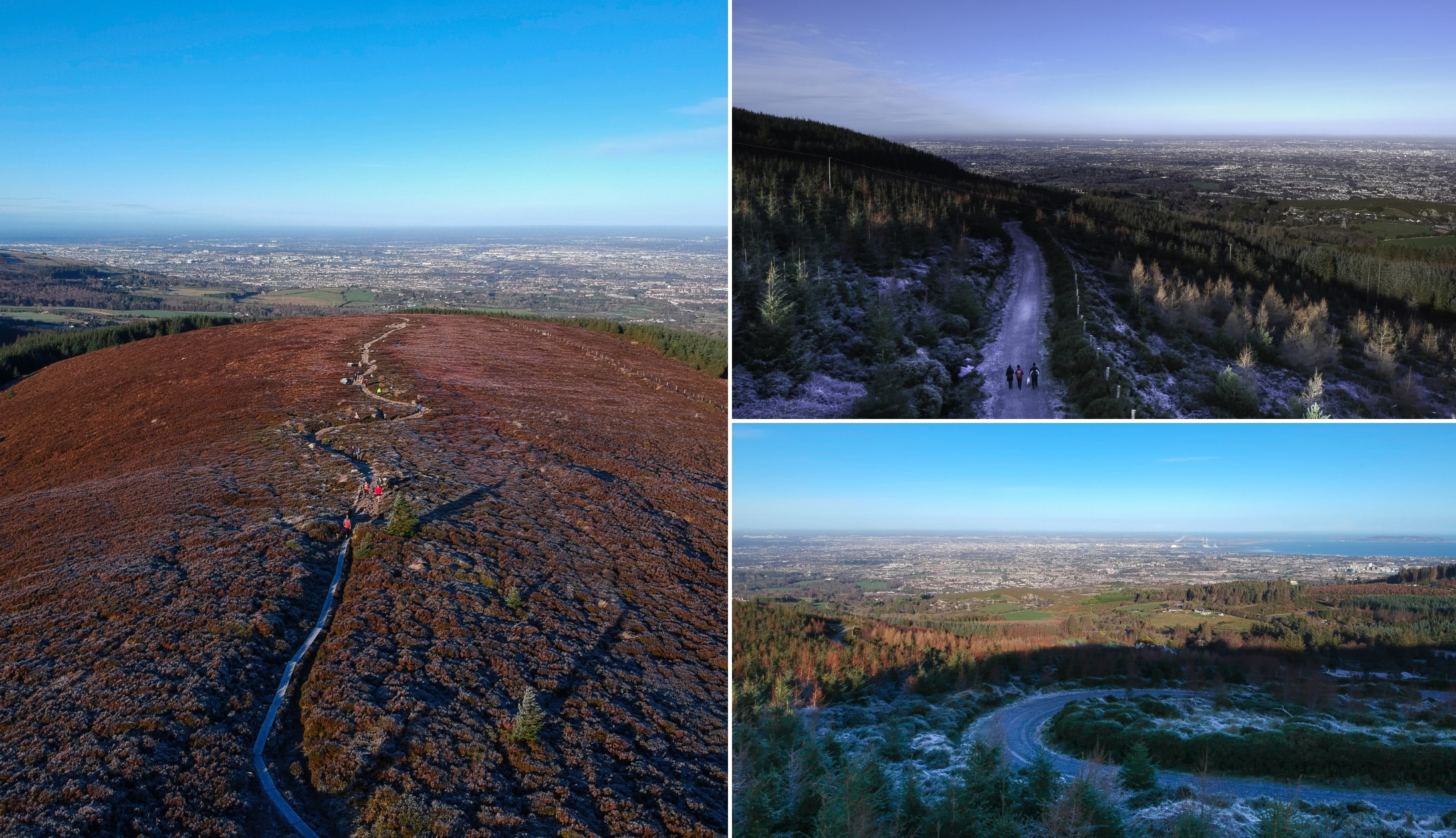
Photos via Shutterstock
The Ticknock walk is easily one of the best walks in Dublin, however, this also means that it gets insanely busy at the weekends, and parking can be a disaster (so arrive early !).
There are several different trails to tackle around Ticknock, but it’s hard to beat the peach that is the Fairy Castle Loop. This is a walk with a lot of inclines, so prepare to be huffing and puffing for a while.
However, the views from the top make it worth it, with glorious views of Dublin City on offer and plenty of places to perch yourself for a bit.
The need-to-knows
- Walking time : Roughly 1 hour and 45 minutes
- Difficulty: Moderate
- Parking: Numerous car parks (see this guide )
See our guide to the Ticknock Walk
2. The Howth Cliff Walk
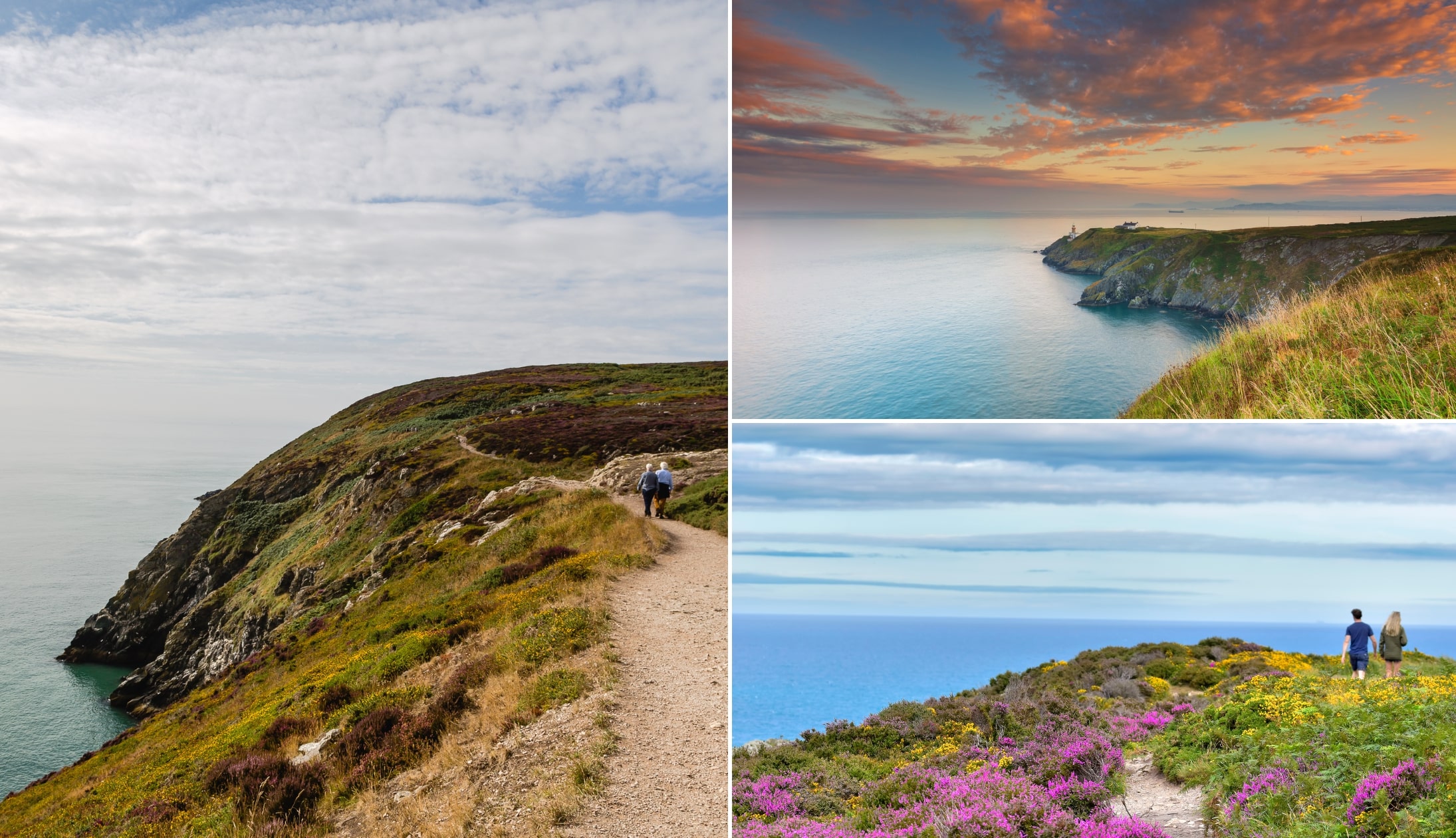
The Howth Cliff Walk , like Ticknock, is one of the more popular things to do in Dublin so, if you’re planning to do it at the weekend, try and get here early.
There are a couple of different ways of tackling this walk: you can start it from the DART station for a longer stroll or you can kick it off from the car park at Howth Summit.
Those that head off on this one will be treated to incredible coastal views throughout. If you’re looking to escape Dublin without actually leaving Dublin, Howth is a solid option.
- Walking time : 1.5 to 3 hours (depending on route)
See our guide to the Howth Cliff Walk
3. The Poolbeg Lighthouse Walk
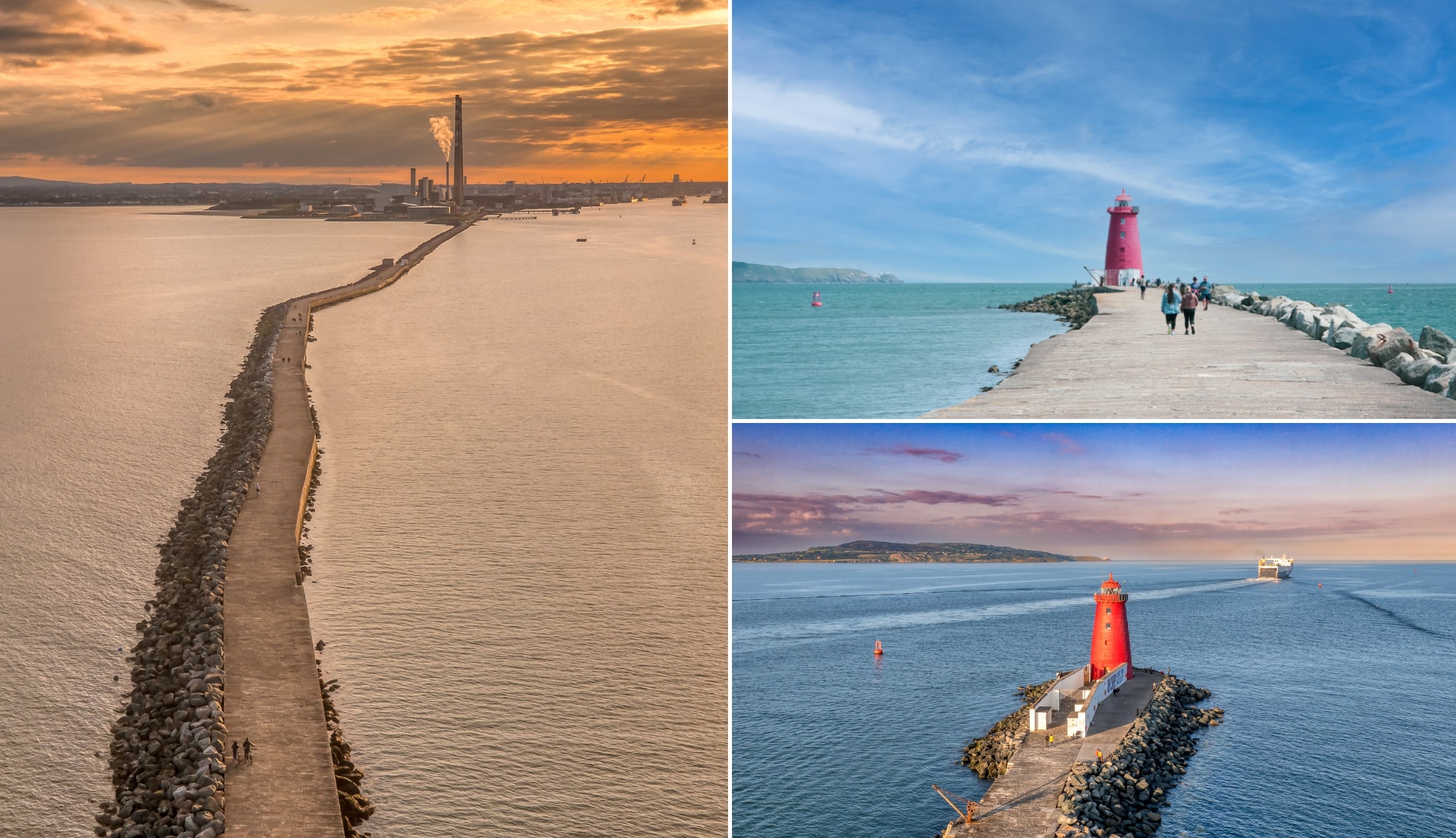
Yes, the Poolbeg Lighthouse walk is the one that takes you out to the fat red lighthouse! This is a mighty coastal walk that’ll blow off the clingiest of cobwebs.
There’s a long (2 hours – starting from Sandymount) and a short (40/50 minutes – starting near Pigeon House Road) walk here, depending on how energetic you’re feeling.
Expect stunning views of Dublin Bay, Howth Head, Dun Laoghaire Harbour and the Dublin and Wicklow mountains. Just make sure to dress appropriately – it gets very windy here.
- Walking time : 40 minutes to 2 hours (depending on route)
- Difficulty: Easy
- Parking: There’s parking at the start (info here )
See our guide to the Poolbeg Lighthouse Walk
4. The Killiney Hill Walk
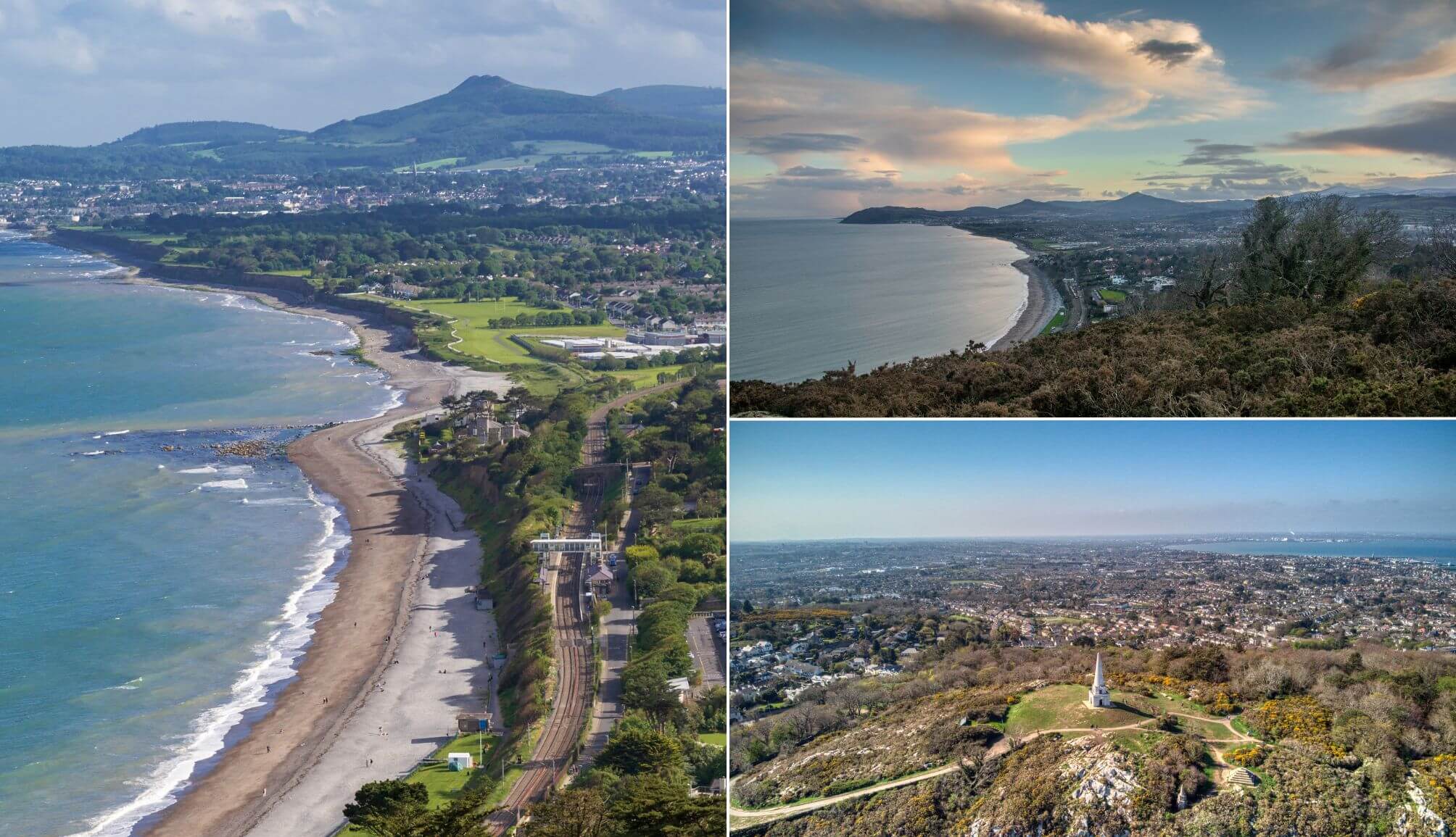
If you’re in search of some handy Dublin walks that’ll treat you to some mighty views without taxing your legs too much, give the Killiney Hill Walk a lash.
There are two different routes to the top that you can take: if you’re after a short walk, drive up as far as the car park on Killiney Hill.
If you fancy a longer ramble, start from the bottom of the hill (there’s an entrance just past the Vico Baths , before you reach Killiney Beach ) then walk up to the summit of the hill from there.
- Walking time : 20 to 45 minutes (depending on route)
- Difficulty: Easy to moderate
- Parking: Various (info here )
See our guide to the Killiney Hill Walk
5. Bohernabreena Reservoir
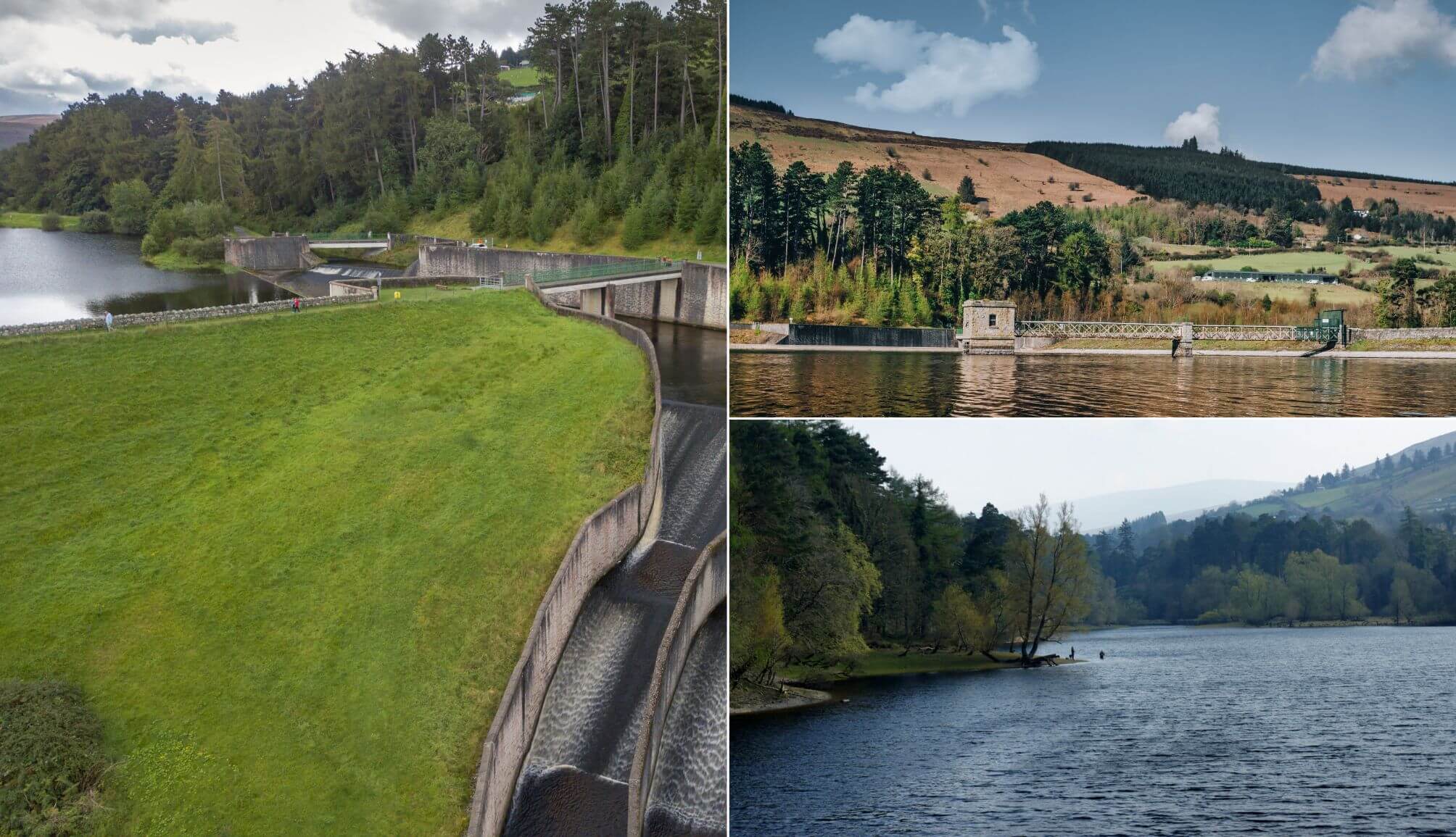
Bohernabreena Reservoir is arguably the most overlooked of the many Dublin walks, and it’s well worth doing if you’re looking for a change from the norm.
You’ll find Bohernabreena around 15km southwest of Dublin in the Glenasmole Valley. There are two reservoirs here which are surrounded by evergreen and deciduous trees.
Known as the Upper Reservoir Loop, this ramble starts and ends at either of the car parks (it’s a looped walk) and takes 60-90 minutes, covering around 8.5km.
If you’re looking for nice walks in Dublin that aren’t as packed as the likes of Ticknock, this is well worth considering (there’s even a new ish car park).
- Walking time : 60 to 90 minutes
See our guide to the Bohernabreena Walk
Forest walks in Dublin
Now that we have what we think are the best walks in Dublin out of the way, it’s time to see what other walks around Dublin are worth heading off on.
Below, you’ll find a clatter of forest walks in Dublin for those of you that fancy escaping the hustle and bustle for an hour or 3.
1. The Carrickgollogan Forest Walk

Our next ramble, the Carrickgollogan Forest Walk , in our Dublin walks guide takes us 2.5km south of Kilternan village on the Dublin/Wicklow border.
Although Carrickgollogan is home to some of the shorter Dublin Mountains walks , they pack a punch, and you’ll be treated to magnificent views of the Dublin and Wicklow countryside.
The scenery that you can soak up from the viewing rock is what makes this one of the best walks in Dublin. On a clear day, you’ll see everywhere from south Dublin to north Wicklow
- Walking time : 30 to 40 minutes
See our guide to the Carrickgollogan Forest Walk
2. The Tibradden Wood Walk

The Tibradden Mountain Trail is another that tends to get overlooked quite a bit. To be honest, I hadn’t heard of it until last year. Then we gave it a crack one Sunday morning and I’ve been back three times since.
Tibradden lies between the Cruagh and Kilmashogue mountains (about a 40-minute drive from Dublin City and a stone’s throw from Johnny Fox’s Pub).
At the highest point on Tibradden, you’ll find an open cairn and kist burial site. When you reach here, take a breather and admire the views that surround you.
- Walking time : 2 to 2.5 hours
See our guide to the Tibradden Wood Walk
3. The Cruagh Woods Walk

The Cruagh Woods Walk is one of the more popular forest walks in Dublin, and it’s the perfect ramble for a fine Saturday morning.
You’ll find Cruagh Woods 16km south of Dublin, not far from Rockbrook Village, and around a 5-minute drive from both Tibradden Wood and the Hellfire Club.
At just 4km in length, this is one of the shorter Dublin walks in this guide, however, it’s a rewarding one, especially on those quiet days when you have the woods all to yourself.
- Walking time : 1 hour
See our guide to the Cruagh Woods Walk
4. The Hellfire Club Walk

The Hellfire Club Walk (officially known as ‘the Montpellier Loop Trail’) is one of the most popular hill walks in Dublin, and it treats those that conquer it to panoramic views of Dublin City.
Now, as was the case with some of the Dublin walks above, this place gets crazy at the weekend, and the car park gets packed, so arrive early if you can.
From the car park, it’s a nice, steep climb to the top through reasonably dense forest. When you reach the top, you’ll see the haunted club house and views as far as the eye can see.
- Parking: Next to starting point
See our guide to the Hellfire Club Walk
Family-friendly Dublin walks
The next section of our guide to the best walks in Dublin focuses on family friendly rambles. These are walks that you could do with a buggy, and that follow a flat trail.
Below, you’ll find some of the best parks in Dublin , like St. Anne’s, to a lovely coastal walk in Dublin that’s often overlooked.
1. St Anne’s Park

You’ll find St Anne’s Park finely plonked between Clontarf and Raheny, a stone’s throw from the coast and easily accessible via public transport from the city.
St. Anne’s is the second largest public park in Dublin (after the Phoenix Park ) and it covers an impressive 240+ acres.
There’s an almost endless number of trails to tackle here, depending on which entrance you come through, along with plenty of unique features along the way.
If you’re looking for nice walks in Dublin that aren’t challenging and that are perfect for buggies, give this a crack.
- Walking time : 1 to 1.5 hours
- Parking: Sometimes tricky (info here )
See our guide to St Anne’s Park
2. Ardgillan Castle

I’d argue that Ardgillan Castle , like nearby Newbridge House , are two of the most overlooked walks Dublin has to offer.
You’ll find Ardgillian between Balbriggan and Skerries , just off the M1 Motorway. The grounds here are huge, well maintained and there’s beautiful sea views.
There’s also plenty of places to grab coffee on the way along with castle tours, if you’re looking for things to do.
- Difficulty: Easy (although there’s some inclines)
- Parking: Decent bit of space
See our guide to Ardgillan Castle
3. Malahide Castle
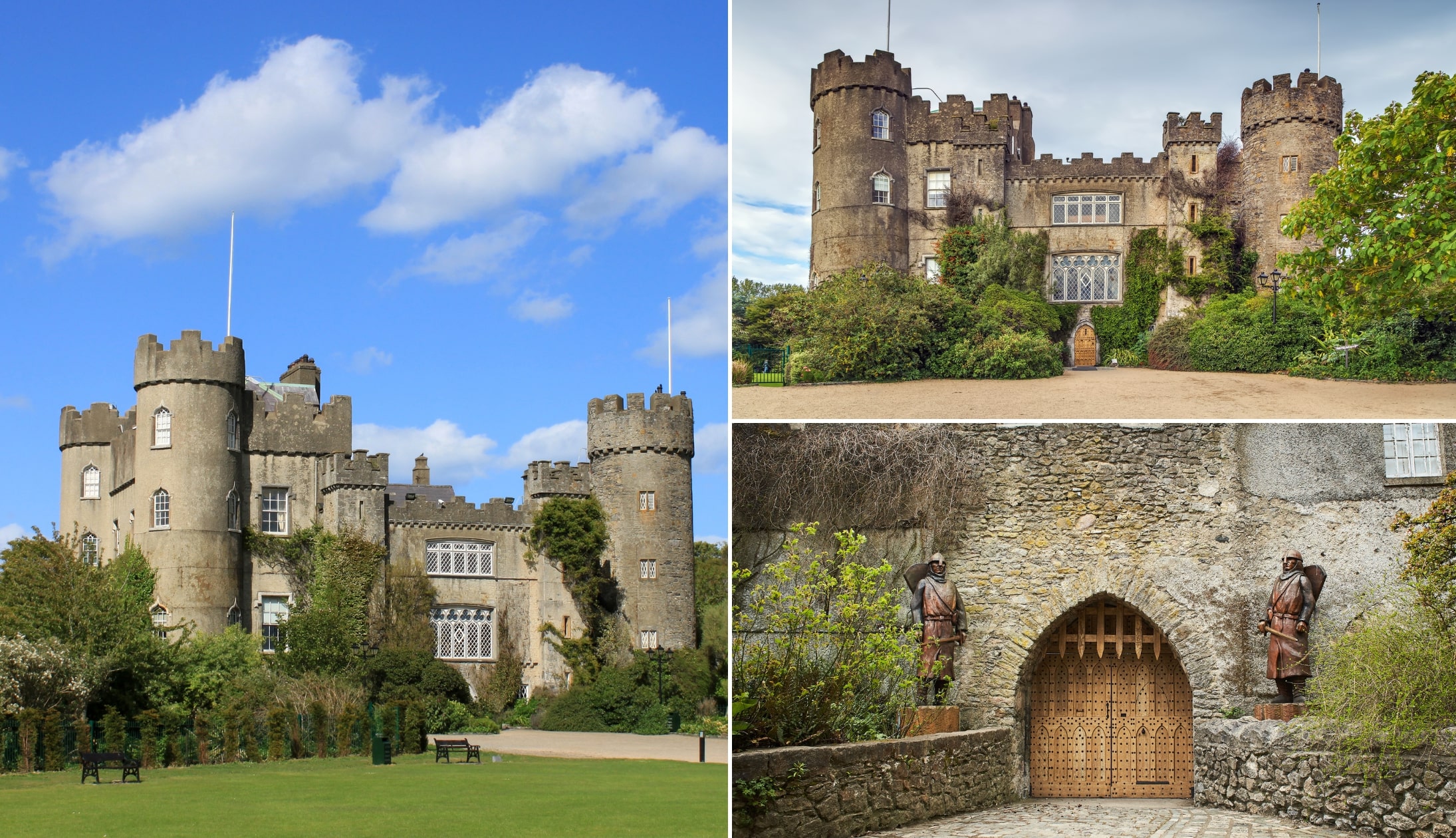
Malahide Castle and Gardens is home to some of the best walks in Dublin for families, thanks to their well-maintained trails, great parking facilities and array of amenities.
You can park in the first car park and enjoy a forest walk, before reaching the castle, or you can head to the second car park for a shorter stroll (this is near the playground, if you’re visiting with kids).
There’s also toilets on-site, a cafe, a fairy trail and castle tours, too. The trails are flat and should be reasonably doable for most fitness levels.
- Walking time : 45 minutes to 1 hour
- Parking: Lots of it
See our guide to Malahide Castle
4. Fernhill Park

Photos via DLRCoCo
Fernhill House and Gardens is the newest public park in Dublin and it’s home to some very handy walking trails, a playground and beautiful gardens.
Set on a large estate that dates back to 1723, Fernhill House boasts finely kept gardens, a stream, mature rhododendrons and ancient oaks.
Now, although a visit to Fernhill will last no longer than an hour, if you’re looking for short, family friendly Dublin walks, you can’t go wrong here. There’s also a playground on site for the kids.
- Walking time : 25 to 35 minutes
- Parking: On site
See our guide to Fernhill Park
5. The Phoenix Park
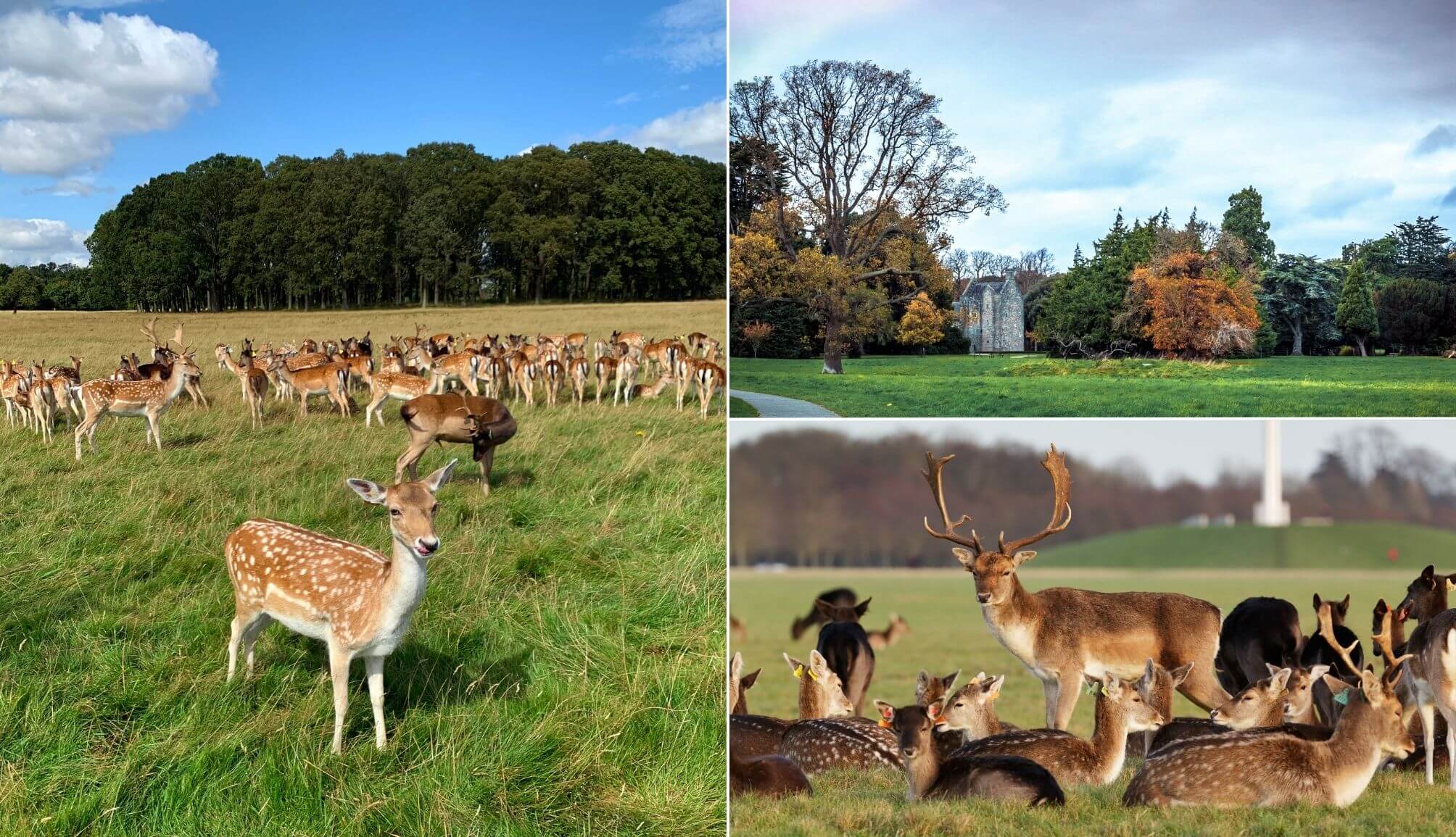
When you see guides to the best walks in Dublin online, you’ll rarely see the mighty Phoenix Park left out, and for good reason.
Europe’s largest city park is home to endless trails, with a little bit of something to suit every kind of walker (you can even combine your walk with a visit to Dublin Zoo !).
Whenever I head here, I tend to park at the Papal Cross, and just head off on a loop through the fields. However, you can always follow the paths, if you’ve a buggy.
- Walking time : 30 minutes to 1.5 hours
See our guide to the Phoenix Park
Beach walks around Dublin
The next section in our guide to the best walks in Dublin takes a look at the various beach walks around Dublin, for those of you that fancy sucking down some fresh sea air.
Below, you’ll find strolls on many of the best beaches in Dublin , with a couple of ‘gems’ thrown in, like the brilliant Burrow Beach in Sutton.
1. Burrow Beach

If you’re looking for nice walks in Dublin that won’t be as mobbed as many of the other beaches near the city, get yourself to Burrow Beach in Sutton.
Boasting great views of Ireland’s Eye and decked in soft golden sand, the 1.2 km Burrow Beach is a fine spot for a leisurely stroll (walk takes around 45 minutes).
Overlooked by some very fancy houses, the beach here is one of Dublin’s finest, and, even though parking can be tricky, it’s well worth a visit.
- Walking time : 30 minutes to 1 hour
- Parking: Can be a hassle (info here )
See our guide to Burrow Beach
2. North Bull Island

You’ll find North Bull Island in Clontarf, not far from St Anne’s Park. This one, like the Poolbeg Lighthouse Walk, is best done with several layers of clothes, as it gets insanely windy.
If you’re driving, park on the Bull Wall and grab a coffee from Happy Out before heading down onto Dollymount Strand (you’ll get some great views of Dublin Bay en route).
You can do a loop walk here that takes you out to the coast road and then back along to the Bull Wall. This is one of the more popular Dublin walks as you can pair it with a post-walk feed in one of the restaurants in Clontarf .
- Walking time : 1 to 2 hours
- Parking: Bull Wall
See our guide to North Bull Island
3. Portmarnock Beach
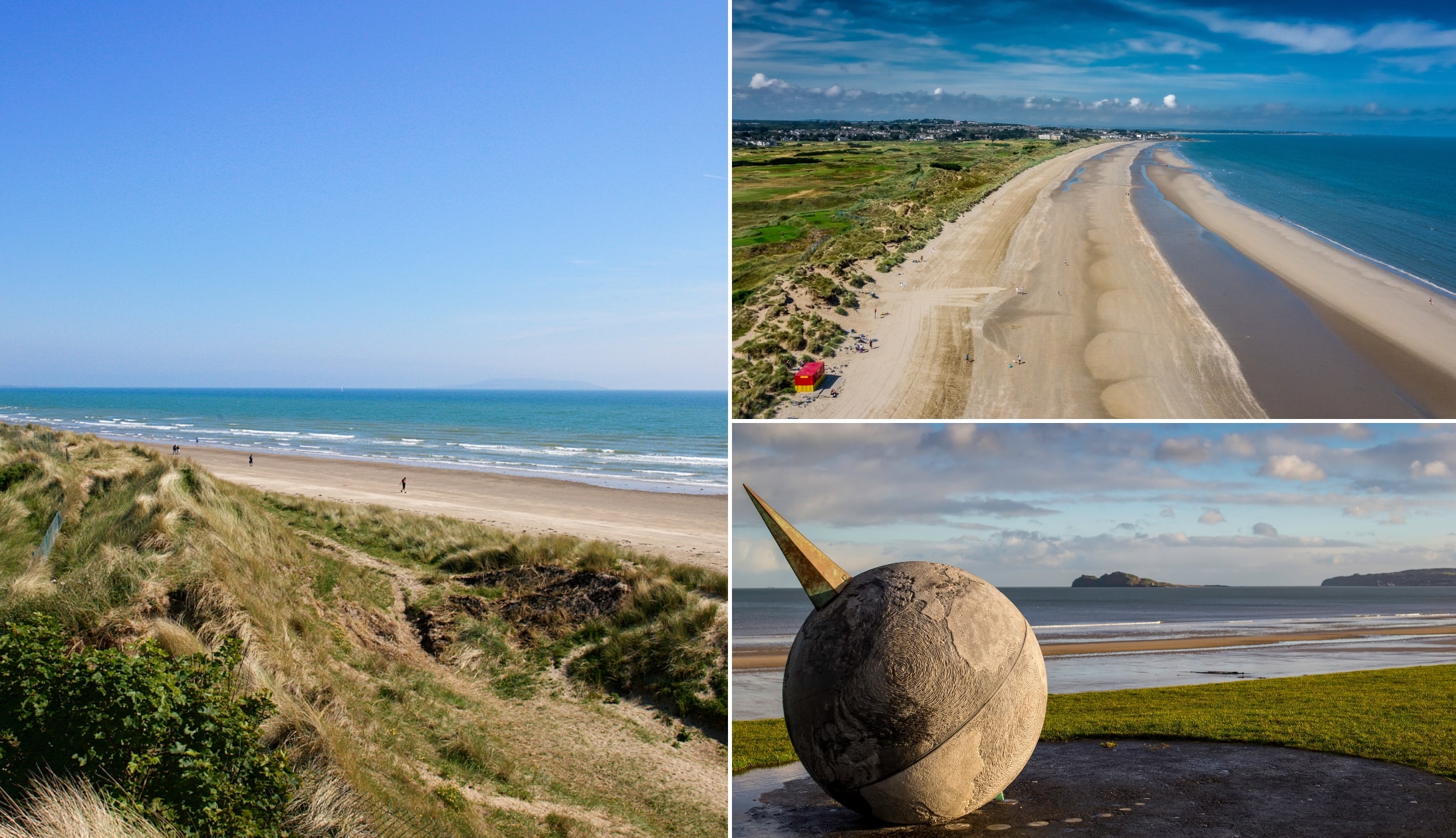
Also known as the Velvet Strand (thanks to its silky smooth sand), Portmarnock Beach is a solid option for those of you looking for beach walks around Dublin.
The beach here is around 5 km in length and, as you stroll, you’ll be treated to glorious views of Ireland’s Eye and Howth.
Now, if you want to do one of the more popular coastal walks in Dublin, you can walk from Portmarnock Beach to Malahide Beach and either walk back or grab a bus.
- Walking time : 45 minutes to 1.5 hours
- Parking: Car park near beach
See our guide to Portmarnock Beach
4. Killiney Beach
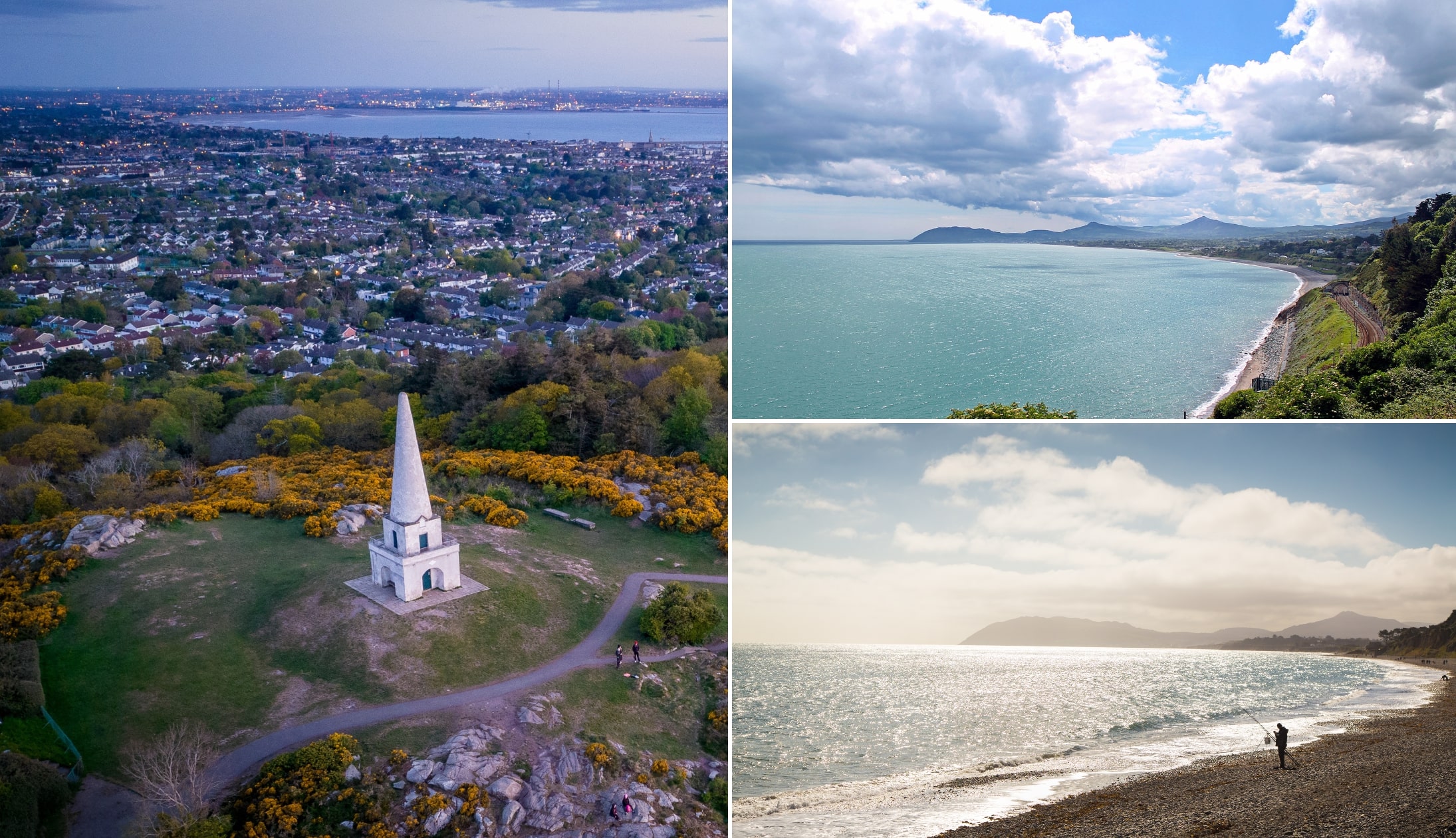
The last of our beach walks around Dublin takes us to the south of Dublin, to the brilliant (albeit stoney!) Killiney Beach .
Kick-start your visit with a coffee from Fred and Nancy’s (on the beach) and then head off on your merry way. The beach here stretches around 2.5km, but I’ve heard people say you can walk to Bray from here…
As you stroll, you’ll be treated to gorgeous views of the Wicklow Mountains . The only issue here can be parking ( here’s info on where to get some).
- Walking time : 30 to 45 minutes
See our guide to Killiney Beach
Walks near Dublin
Now that we have the best walks in Dublin out of the way, it’s time to see what walks near Dublin are worth tackling.
Below, you’ll find a clatter of rambles a short spin from the capital, with a mix of forest walks and tough hikes on offer (see our guide to hikes near Dublin for more).

You’ll find some of the most popular walks in Dublin in nearby Wicklow (roughly a 1 hour drive from the city). There’s an endless number of walks in Wicklow , with something to suit every fitness level.
And, although it’s the various Glendalough walks that tend to get a lot of the attention, there’s plenty more trails to tackle in Wicklow. Here are our favourites:
- Ballinastoe Woods
- Djouce Mountain
- Lough Ouler
- The Great Sugarloaf
- Djouce Woods
- Bray to Greystones Cliff Walk
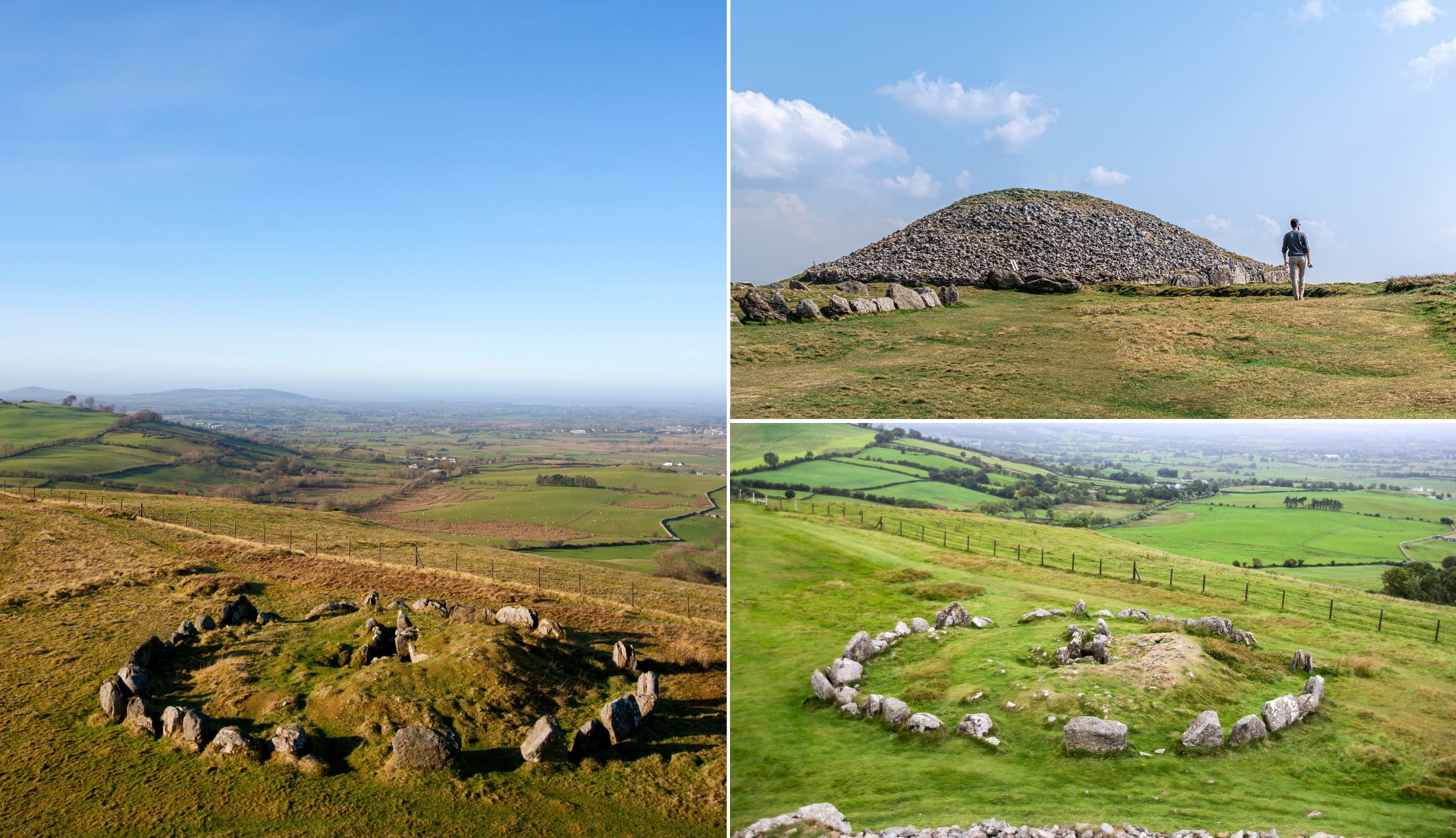
There’s plenty of other mighty walks near Dublin in County Meath. Personally, I think it’s hard to beat Loughcrew Cairns and Balrath Woods, but there’s loads of trails out this way.
The likes of Mullaghmeen Forest and the Girley Bog are two popular spots for a ramble, as is the mighty Hill of Tara.

Photos by Tom Archer via Tourism Ireland
Louth is another great option if you’ve exhausted the various Dublin walks. The Carlingford to Omeath Greenway and Slieve Foy (Carlingford) are two that draw the crowds.
However, Rathescar Lakeside Walk, the Clogherhead Cliff Walk, Townley Hall Woods and the Annaloughan Loop Walk are great options, too.
The best walks in Dublin: Where have we missed?
I’ve no doubt that we’ve unintentionally left out some brilliant Dublin walks from the guide above.
If you have a place that you’d like to recommend, let me know in the comments below and I’ll check it out!
FAQs about Dublin walks
We’ve had a lot of questions over the years asking about everything from ‘What are the handiest Dublin Mountains walks?’ to ‘What are scenic walks that make good Dublin date ideas ?’.
In the section below, we’ve popped in the most FAQs that we’ve received. If you have a question that we haven’t tackled, ask away in the comments section below.
What are the best walks in Dublin to try this weekend?
In our opinion, the best Dublin walks are the Fairy Castle Loop, the Great South Wall Walk, the Killiney Hill Walk and the Howth Cliff Walk.
What are some nice walks in Dublin that are family friendly?
The Phoenix Park, Fernhill Park, Malahide Castle and Ardgillan Castle are all home to handy, family-friendly Dublin walks.
Keith O’Hara has lived in Ireland for 35 years and has spent most of the last 10 creating what is now The Irish Road Trip guide. Over the years, the website has published thousands of meticulously researched Ireland travel guides, welcoming 30 million+ visitors along the way. In 2022, the Irish Road Trip team published the world’s largest collection of Irish Road Trip itineraries . Keith lives in Dublin with his dog Toby and finds writing in the 3rd person minus craic altogether.
This site uses Akismet to reduce spam. Learn how your comment data is processed .
Arulmozi varman
Friday 2nd of September 2022
Wwwww! Absolutely very helpful information, made many walks around Dublin, your information made me realize ahhh you still have to go bro... 😎 - cheers!
Monica Lillis
Sunday 17th of April 2022
Hiya. Donadea Forest walk in Co.Kildare is stunning. There is a beautiful lake, ruins of a Castle, a Graveyard, and a quirky Chalet type Coffee Shop. The Autumn colours are wonderful.
Niamh Holohan
Sunday 9th of January 2022
What are the best dog friendly walks that you would recommend
Keith O'Hara
Monday 10th of January 2022
Hey Niamh - I'm actually in the middle of trying to figure that out for myself, as I've over-walked every trail near where I live with my own dog. One I've tried a few times recently is St Anne's. There's a great dog enclosure there too (one for big dogs and another for small to medium).
Helen O'Connor
Sunday 16th of May 2021
Fabulous information and so detailed. Thank you so much
Mary. Mokdad
Wednesday 30th of September 2020
Donabate to Portrane Loop Walk
This website uses cookies to improve your browsing experience and analyze the use of the website. Learn More

Self-Guided Dublin Tour

This post is a self-guided tour of Dublin that covers all the iconic sites on the city's south bank as well as some lesser-known haunts.
The tour should take approximately 1.5 hours or just a bit less than that. The walk is approximately 1.5 km (just over 1/2 a mile).
Don't forget that you can also book a pay-what-you-like live-guided tour of the city centre with us!

- Start: Viking Longboat Statue
- End: St Stephen's Green
Click the map to enlarge it or to download it to a smartphone.
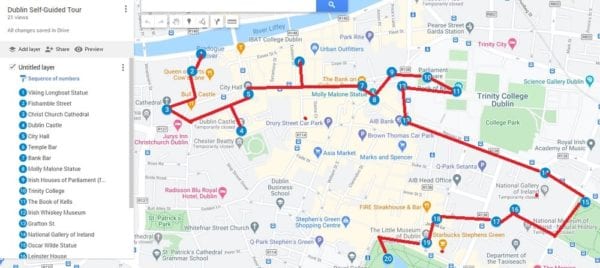
GPS-Enabled Audio Tour
We also offer an audio tour of historic Dublin, researched, written, and recorded by one of our own tour guides.
Here’s a sample.
Book the Dublin audio tour .
1. Viking Longboat Statue
We’ll see a lot of monuments in the course of the walk, and this one wins the prize for the most useful.
It doubles as a bus stop. If you have it to yourself, pretending to row is a classic photo opportunity.

It surprises many visitors, but Vikings are a major part of Dublin’s story.
Initially raiders, in 841, some of them decided to settle down in Ireland, and they established towns along the coast.
2. Fishamble Street
Today, Fishamble Street is lined with modern buildings today, but its history was discovered starting in 1974 when the Dublin City Council decided to move its offices to a four-acre site here.
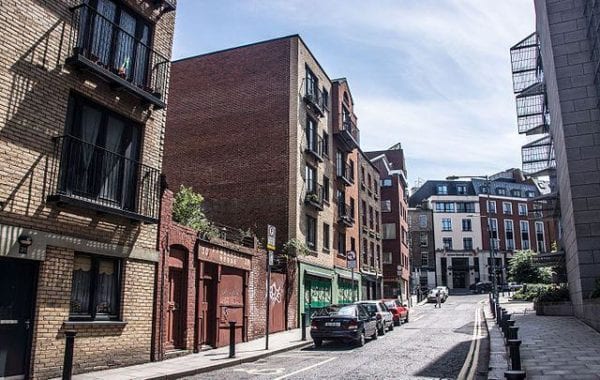
When archaeologists spoke up to say they’d found one of the most intact sites of its age in Europe, residents rallied around the idea of preserving it.
Those artifacts are mainly on display at the National Museum of Ireland, and the sidewalk here has little nods to them.
On the left side of the street, you can find five bronze markers with the shapes of artifacts unearthed here.
3. Handel’s Messiah
Also on the left, as the street begins to bend to the right, is a short, narrow white wall with a decorative arch.
This is the former entrance to the New Music Hall, wherein in 1742 the premiere of Handel’s Messiah was performed.

Messiah is a fixture across the English-speaking world during the Christmas season, and no less so here – except the annual tradition here happens on April 13 th , the same date as the original performance.
And since this is no longer a music venue, it takes place outside.
4. Christ Church Cathedral
There’s a lot to see on the grounds of Christ Church Cathedral – the stunning exterior, a labyrinth in the courtyard if you need somewhere to clear your head, and the interior, available to explore with either a guided or self-guided tour.
Inside, you’ll discover impressive stained glass windows and a mosaic floor, and sacred objects from the building’s history as both a Catholic and a Protestant church.
You'll also find a tower with a world-record-setting number of bells – 19 – and a crypt with the preserved remains of a saint as well as of a mummified cat and rat.
All that inside the oldest structure still in use in Dublin.

The story of this church is long and interesting but you’ll need to learn more with the PDF and/or audio tour version.
If you’re interested in exploring inside, the church hosts services, tours, and music events.
Prayer services are held weekday mornings at 10 and evenings at 5, except on Wednesdays when they hold a choral evensong at 6. Sunday Eucharist is at 11 am.
Tours are available Thursday through Sunday, with first admission at 10 am and last admission at 4:15 pm.
Tickets are 7 Euros and fifty cents for adults with various discounts available.
The tour includes access to the bell tower and crypts, both of which involve stairs.
Tickets: https://www.mytoptickets.com/?3B041324-155D-D234-0AA684C0D2E68919
5. Dublin Castle
For more than seven centuries, Dublin Castle was the center of government in Ireland.
While there are still some older elements under the castle, most of what you can see dates from after a major fire.
It took place in the 17 th century, so the castle was rebuilt in the heyday of Dublin’s famous Georgian style of architecture.
Dublin Castle was built near the meeting of two rivers: the Liffey, where our tour started, and the Poddle, which still merges into the Liffey here, but today flows underground.

If you’d like to visit the castle, it’s open from 9:45 am to 5:45 pm daily, with final admission at 5:15 pm.
Self-guided and guided tours are available. Guided tours are an hour long and cover the State Apartments, the undercroft, and the royal chapel; tickets are 12 Euros with discounts for students, seniors, and children.
Self-guided tours offer access only to the State Apartments and exhibitions; these are 8 Euros, with the same discounts.
6. City Hall
City Hall is open to the public and free to enter.
Right through the door is a vast, impressive, echoing entrance hall with a massive dome, plus a glass elevator so you can see the whole thing from above.
All this opulence comes from the fact that when this was built in the 18 th century, it was the royal stock exchange and custom house.
But, when the city bought it in the 1850s for its current function, they added a floor mosaic with the city seal.

There’s also a rotunda, which is available to visit when it isn’t rented out for events.
And the basement is home to a small gallery with a broad exhibition of artifacts from Dublin’s history.
There’s also a café inside if you’re due to rest a while. The building is open Monday through Saturday, from 10 am to 5:15 pm.
7. Temple Bar And The Irish Rock ‘N’ Roll Museum
Curved St, Temple Bar, Dublin 2
The area you’ve been walking through is called Temple Bar. For newcomers, the name can be confusing – it’s the name of a neighborhood, not a drinking establishment.
For the “Bar” part of the name, think sandbar rather than whiskey bar. It was named for the riverbed it borders.

Today, the bars are of the whiskey rather than the sand variety, and the neighborhood has become a place where art meets nightlife.
The highlight of the neighborhood is its live music venues, and the Irish Rock N Roll Museum was built right in the middle of the action.
Within a few blocks, you’ll find art galleries, theaters, festivals, and lots of bars, more often than not with live music.
There are lots of other things to do in Temple Bar, and it’s well worth exploring this area at more leisure.
It’s also tourist central for Dublin, so scoping things out and making plans during the daytime can save you time after nightfall.
8. Bank Bar
The Bank is a bar and restaurant today, but it started out as a bank.
If you looked inside City Hall earlier, you’ll have gotten an impression of what Irish institutions of commerce looked like in the 18 th century.
This building takes that atmosphere into the late 19 th century.
The current interior was designed in the 1890s, and it was given the stained-glass ceilings, mosaic floors, and generally over-the-top décor that would inspire confidence in investors.

All that grandeur is still there – if you’re here during open hours, you’re welcome to step inside and get a look at the place, whether or not you plan to patronize it.
And if you did decide to stay awhile, you could also see the bank vaults, which are in the basement near the restrooms.
Another treasure on offer is a full replica of the Book of Kells – the main tourist attraction of Trinity College, a couple of stops ahead.
The Bank Bar is open from 11 am to 10 pm daily.
9. Molly Malone Statue
This is Molly Malone. She’s the subject of a song called “Cockles and Mussels,” which is famous to the point of cliché among Irish people.
The title comes from the line “cockles and mussels alive, alive, oh,” which is a cry that street vendors selling mollusks actually used in the 19 th century when the song probably originated.

But its origins are mysterious, and its main character may or may not have been a real person.
Molly Malone is one of the most stereotypical Irish names you could think of.
The character, real or not, meets a tragic end.
After taking up the family business of selling seafood from a cart, she meets the song’s narrator and leaves a strong impression, but then dies of fever and haunts the streets, hawking shellfish for eternity.
And you actually can hear Molly’s voice today.
This is one of the Talking Statues of Dublin – twelve monuments that can talk to you through your phone with the help of a QR code on a plaque located nearby.
10. Irish Houses Of Parliament (Former Location)
We’ve already seen a couple of examples of transformed houses of commerce, a stock exchange turned into a city hall and a bank turned into a bar.
This is a house of parliament turned into a bank.
It was built in 1729 when Ireland was dominated by an English upper class but still had its own legislature.
Like the English Parliament, it was a bicameral or two-house parliament, with a House of Lords and a House of Commons.
They had no permanent home and met where they could, often in religious spaces or private homes, where it could be difficult to even fit all the members, much less do their work gracefully.

This building was commissioned to solve that problem.
The architect was himself a member of parliament, and he designed the first building in the world meant to serve exactly the purpose of a two-house legislature.
In 1800, the Acts of Union, passed by both the English and Irish Parliaments, formally joined the two lands into the United Kingdom.
The Irish Parliament was dissolved. Three years later, the Bank of Ireland acquired the building.
11. Trinity College
What you’re seeing now is the oldest part of Trinity’s campus, mostly consisting of 19 th -century buildings.
Trinity is the single college that makes up the University of Dublin. Similar universities in the UK contain many colleges.
And that was the model the founders had in mind in 1592 when a Church of Ireland archbishop asked the English crown to grant land that had once belonged to a monastery for the creation of a university.

The bell tower, called the Campanile, is the centerpiece of this area – it’s from 1853, so it’s been here long enough to develop some lore.
Trinity is one of the most respected universities in the world, and its alumni can be found in many corners of the present and of history, including the Irish separatist movement.
Several Irish presidents went here, and it’s particularly known for its literary graduates.
James Joyce unsurprisingly wasn’t one of them, but Oscar Wilde, Jonathan Swift, Samuel Beckett, Bram Stoker, and lots of others were.
And when it comes to literary significance, Trinity also has an undeniable claim to fame: the Book of Kells , located in a stunning library just a few steps away from the Campanile.
It’s the university’s main attraction for visitors, but not the only one: the campus is also home to a zoological museum (only open during the summer), a science museum, an art gallery, and a theater.
12. The Book Of Kells
If you don’t know the Book of Kells, it isn’t the kind of book you sit and read.
No one is allowed to touch it, it’s in Latin, and even if you know the language, it’s written so elaborately that it’s almost unreadable.

But the decoration is the point: the Book of Kells is an illuminated manuscript.
It's a copy of the four gospels of the New Testament of the Bible written so artfully that it’s considered Ireland’s single foremost cultural artifact, and one of the greatest works of art of Europe’s Middle Ages.
The word “Kells” comes from the Abbey of Kells, which was where the book was kept for centuries and probably where at least part of it was made.
The building where it’s located is called the Old Library, built in 1712, and the part that houses the book is the Long Room, a 65-meter room that’s remarkably beautiful on its own.
It’s also home to a 15 th -century wooden harp – an instrument that was as essential at one time to Gaelic music as the fiddle is today.
This one is the basis for the harp design seen on the Irish emblem and on the logo of Guinness.

Because abbeys were wealthy, they were targets for Viking raids, and that disruption probably destroyed many works of Insular Art and ended the era of their creation.
Given how fragile the book is, its survival is remarkable, and it’s had some close scrapes.
It was stolen once, probably less for the book itself than for a jeweled cover; the cover was torn off and the book was thrown away, but somehow it was recovered.
13. Irish Whiskey Museum
Famous as Irish whiskey may be, it’s on its way out of a dark age.
After a heyday in the 18 th and 19 th centuries, when there were many hundreds of distilling companies on the island, by 1972 the number was down to one.
That company was Irish Distillers Limited, which produces well-known brands like Jameson, and in 1988, that single company became a subsidiary of a beverage giant based in France.
But 1988 also saw the opening of the first new distillery in Ireland in many decades. And today, there are 32.

This museum opened in 2014 and tells the story of that rise and fall and rise again, going all the way back to the drink’s origins.
The word “whiskey” comes from the Irish phrase “uisce beatha,” which means “water of life” – a straight translation of the Latin “aqua vitae,” which was the medieval name for any kind of solution involving alcohol.
The museum offers tours, a whiskey blending experience, and a brunch.
Of course, it has a bar, which has around 100 whiskeys and hosts live music and other events Friday through Sunday evenings, closing at 10:30 pm.
14. Grafton Street
Grafton Street is Dublin’s most famous corridor for shopping and people watching, and from here until St. Stephen’s Green, where the street ends, it’s pedestrian-only.
The street is mostly retail, and it has a little of everything from high-end to low-end, and some of the oldest businesses here are Dublin or Irish exclusives, mostly high-end shopping.
There’s Brown Thomas, a classy Irish department store, JM Barnardo Furriers, Weir and Sons Jewelers, and James Fox Cigars and Whiskey.

The smallest local businesses are the musicians – Grafton Street is busking central for Dublin.
One other local business to keep an eye out for is Bewley’s Oriental Café, founded in 1927.
Besides a place to stop for coffee or lunch, it’s also a historic hangout for writers – James Joyce not only spent time there but mentioned it in his book Dubliners.
15. National Gallery Of Ireland
Merrion Square West, Dublin 2
The National Gallery has been one of the best places to see art in Ireland since 1854.
It’s got both a national and a continental focus, with plenty of Irish artists, but also lots of other Europeans, from medieval to modern.
The Grand Gallery in particular mixes the two – it’s a long, elegant space showing works from across Enlightenment Europe, but all with some relation to Ireland, whether by artist or subject matter or the painting’s back story.

A local favorite piece is Irish painter Frederic William Burton’s The Meeting on the Turret Stairs .
Or, for some emphatically Irish subject matter, you could find Daniel Maclise’s The Marriage of Strongbow and Aoife , which depicts the cementing by marriage of the alliance between Diarmat Mac Murchada and his Norman allies.
But you can also see Vermeer and Caravaggio and Picasso, among other greats.
Admission is free for the main gallery, with admission sometimes charged for temporary shows.
Exhibitions and events: https://www.nationalgallery.ie/whats-on
16. Oscar Wilde Statue
Oscar Wilde stood out, and in a city full of statues in simple bronze or stone, so does this monument.
Artist Danny Osborne did his research, and given Wilde’s taste for overdressing and living beyond his means.
Osborne chose fitting materials: it’s made of four different stones from places as far apart as Canada and India, with bits of porcelain and bronze, plus the giant chunk of quartz he’s sprawled on, which is the only element sourced from Ireland.

He’s wearing a Trinity necktie and his wedding ring.
The female figure in his view is his wife Constance Lloyd, pregnant with one of their two sons; one of their grandchildren officiated at the unveiling of the monument.
And the male torso is meant to be Dionysus, the ancient Greek god of wine and drama.
Behind the flashy exterior, though, his private life was shaky.
He had a lasting relationship with Lord Alfred Douglas, a young man who introduced him to London’s underground gay scene.
Wilde eventually found himself on trial for sodomy and gross indecency. He was sentenced to prison with hard labor for two years.
With all this in mind, to see what the artist had in mind for this statue, you have to look at it from both sides.
His face is split like a tragicomic mask. Viewed from the right, he’s smiling, and you can see the society man and the quick wit; the other side shows him as he emerged from prison.
Besides reading Wilde’s many words engraved on the statues, you also have another opportunity to hear this statue talk, just like the Molly Malone one; there’s a link to information in the notes.
http://www.talkingstatuesdublin.ie/
17. Leinster House
Leinster House is the home of the Oireachtas, the Irish legislature, since 1922.
As before the Acts of Union, it’s a two-house legislature, but without the distinction between nobility and non-nobility drawn under the old system, and without English names.
Today, the two houses are the Seanad, the upper house, and the Dáil, the lower house, both of which meet here.

Unlike the old Parliament House, Leinster House wasn’t built for the purpose of legislative action.
It was a private residence, finished in 1748 for a man who would eventually become the Duke of Leinster.
But in 1922, when the Oireachtas has its debut at Leinster House, closely watched by hopeful locals and curious international press, it gave them a particularly Irish welcome: the proceedings of the legislature were held in the Irish language.
Fun Fact: Leinster House was partly the basis for the United States’ White House, designed by Irish architect James Hoban.
18. National Museum Of Ireland – Archaeology
This museum covers the history of Ireland from the Stone Age to the Late Middle Ages, along with a few exhibits on the ancient Mediterranean.
The area called the Treasury shows a history of Irish art, from the Iron Age through the development of the church-influenced Insular style (including illuminated manuscripts) to the Viking-influenced style that followed.
Another show focuses on prehistoric gold ornaments made during the Bronze Age.
And another focuses on the more practical items of prehistoric life in Ireland, including a 4500-year-old boat and the island’s oldest known musical instruments.

The last of the permanent exhibitions focus on Viking life in Ireland, including relics from the elaborate burial traditions observed in the Norse religion, as well as Christian art created by those Vikings who settled and converted.
Other exhibits are shown on a temporary basis, and if you’re lucky – or unlucky, depending on how you feel about it – you may see bog bodies.
These are human remains naturally preserved in peat bogs, likely part of an ancient human sacrifice ritual.
Exhibitions: https://www.museum.ie/en-IE/Museums/Archaeology/Exhibitions
Events: https://www.museum.ie/en-IE/Museums/Archaeology/Events
The museum is open Tuesday through Saturday, 10 am to 5 pm, and Sunday and Monday, 1 - 5 pm. Admission is free, as it is at all four of the National Museum of Ireland locations.
19. The Mansion House
Through all of Dublin’s political upheaval and the game of musical chairs its governing institutions have played, this place has been unusually stable: since 1715, it’s been the official home of the Cathaoirleach, the mayor of Dublin.
It’s also been the scene of plenty of other major political moments.
In 1919, the first Dáil, or the lower house of the legislature, met here and spoke the declaration of Irish independence (there was also a centennial celebration of that event in January of 2019).
And in 1921, the Anglo-Irish Treaty, formalizing the terms of separation between the UK and the Republic of Ireland, was signed here.

And before either of those events, this was where Michael Collins, a leader of the Irish separatist movement, evaded arrest by the British military by sweeping the floor and pretending to be a janitor.
Civic ceremonies are held here today, such as when the city bestows the title of Freeman of Dublin, a high honor that comes with grazing rights on the public greens and the duty to defend the city in case of attack.
All kinds of political and cultural figures have been honored in this way, so take a moment to imagine a future siege of Dublin when the city is defended by Michael Gorbachev, Bono and the Edge, and Barack and Michelle Obama.
20. The Little Museum Of Dublin
Next to the national museums we’ve seen, this is a humble place, but it’s also a local favorite.
It’s a scrappy, homemade, self-described “people’s museum,” focused on the part of Dublin history that’s still in living memory – think more U2 paraphernalia and soccer memorabilia than illuminated manuscripts and bog bodies.
It’s also a young museum. In 2011, a call was put out to the public for objects that screamed 20 th century Dublin, and the results were arranged in three floors of a Georgian townhouse.
For Dubliners, it’s a nostalgia experience on top of being educational.
They sell a variety of tickets – for 8 Euros you can get either a roughly hour-long self-guided experience or their staple, a half-hour guided tour.
The same price gets you access to their several themed tours:
- a tour of Irish women’s history every Monday at 4 pm
- a walk of St. Stephen’s Green every day at 3:30 pm
- a tour themed around writers every day at 11:30 am
- a tour within the museum of queer Dublin history every other Saturday at 4 pm.
15 Euros gets you an all-day pass for whatever’s on the day’s schedule.
There are guided options in Irish sign and French, and there’s a free tour of the museum Wednesdays at 11 am.
The building is also home to a project called the City of a Thousand Welcomes, which can arrange, usually with some notice, for you to meet a Dubliner, one-on-one or two-on-one.
21. St. Stephen’s Green
As indicated at the last stop, there’s enough to see in St. Stephen’s Green to make a whole walking tour on its own.
But it’s also a good place for leisure, which may be in order by now.
The park is open 7:30 am to dusk Monday through Saturday, 9:30 am to dusk on Sundays.
From here on the northside of St. Stephen’s Green, you’re just a short walk from the lake that spans most of the park’s width.
When you reach the water, you can make a right and walk a little further to find a bridge crossing a narrow point in the lake and leading to the center of the park, where you’ll find a Victorian flower garden.

To the right from there is a garden designed for blind visitors, with plants chosen for their smell and physical texture, and to the left, in a bend in the lake, a bog garden.
The park was originally a commons used for grazing, but in the 17 th century, homes were built around it, and it became a private park for the residents.
In 1880 it became a public park, thanks to the philanthropic work of the Guinness family, the people behind Guinness beer.
One of them bought the park and paid for its renovation, and today he’s one of the many statues and monuments in the park.
During the Easter Rising, separatists seized the park, dug trenches, and fought against the British military, with a pause in the fighting so a groundskeeper could feed the ducks.
The park still shows the marks of that event: there’s a monument called the Fusilier’s Arch at the northwest entrance, which still has bullet holes in it.
And in the center of the park, opposite the bridge across the lake, is a bronze bust of Constance Markievicz, an Irish woman who fought in the Easter Rising, was the first woman elected to the British Parliament, and also served in the First Dáil and as a minister in the first government of the Republic of Ireland.
This is the end of the tour. We hope you enjoyed it.
Free Walking Tours
Our free walking tour page lists the various pay-what-you-like walks that are available on a daily basis in English and Spanish.
These tours usually last 2.5 - 3 hours each. You can book tours here .

Tourist Passes and Bus Tours
If you purchase a Dublin Pass or GoDublin Card , you'll get small-group guided walking tours included.
A hop-on-hop-off bus ticket will get you easy transportation around the city - directly to Dublin's most popular attractions. Audio guides and guided walks are also offered with each ticket.
Back to top
RELATED POSTS:
- Free Dublin Walking Tours
- Hop-On-Hop-Off Bus Tour
Choose a Destination... I want them all PLUS general travel tips. Amsterdam Berlin Boston Charleston Chicago Dubai Lisbon London Los Angeles Miami Nashville New York City New Orleans Paris Philadelphia Prague Rome San Francisco Washington DC
About The Author

Stephen Pickhardt
North america, united kingdom & ireland, middle east & india, asia & oceania.
Complete Dublin Walking Tour
3 dublin walking tours, map and attractions guide, visit 50 attractions in central dublin using the three self guided walking tour maps below.
Use the Dublin google map below to visit the attractions in Dublin city center. A complete self guided walking tour with map and guide to Dublin attractions, including Cathedrals, Squares, and historic Dublin sites. Follow the walking route to explore the city at your own place. Spend a few hours or two days depending on how long you want to spend at each attraction. There are three separate Dublin self guided walking walking tours: Tour 1- Downtown Central Dublin located north of River Liffey, Tour 2 – Temple Bar Region, St Stephens Green and Grafton Street located south of River Liffey and Tour 3 – Historic Dublin includes Dublin Corporation, Dublin City Hall (and includes parts of the Temple Bar Region).
Click on the arrow icon to the left of the title to display the legend. Click on the Attractions attractions map pins (green, red, black, purple or blue pins) or on the legend (left icon on the title bar) or the PDF map that you download for additional information including images of the attraction. Each set of colored map pins can be used as a separate walking tour of Dublin making it flexible to work into your schedule of other planned events or lunch breaks.
- Dublin City Center – Purple Map pins below. For accompanying Central Dublin Walking Tour 1 attractions guide click HERE
- Dublin Temple Bar Region – Black Map pins below. For accompanying Templar Bar Dublin Walking Tour 2 attractions guide click HERE
- Historic, Old Dublin Walk – Red Map pins below. For accompanying Historic Dublin Walking Tour 3 attractions guide click HERE
Wifi – SIM card
We brought an old smartphone for our trip and purchased a SIM card from one of the major carriers in Dublin. You will need an unlocked smartphone, the SIM will give you a local number. Purchase from one of the major carriers and not a phone shop. If you use your existing iphone, keep your original SIM card safe and put it back in your phone when you leave Ireland
- Eir – check their pre-pay plan
I purchased mine from Vodafone but you can get one at any major provider. They have flexible “pay as you go” plans that you can top up as needed. You will need to purchase both a SIM card and a data plan to use your smartphone in Ireland. Download the google map below onto your smartphone using the instructions below for easy to use free Dublin self guided walking tours to the major attractions
Zoom in to view the color coded three self Guided walking tours in Dublin. Instructions to download Interactive Dublin Ireland map are at the end of the post
Download PDF Map HERE
Self guided dublin walking tour, dublin ireland map.

When to Visit Dublin
The peak season in Ireland is between June and September. At this time central Dublin is teaming with tourists and many of the attractions in the Dublin Walking tour may have line ups, especially the Book of Kells at Trinity College. Plan accordingly if you want to complete all three Dublin tours as lineups in the peak season may mean that you it will take longer to complete all three Dublin Walking tours
What to Wear on the Dublin Walking Tour?
While visiting in the shoulder season (April-May or October) means that there are less tourists and shorter lineup but it may also mean colder weather and start of the rainy season. In addition to shorter lines for attractions at this time, pub entertainment is limited, and live pub crawls are eliminated to weekends only. Dress warmly during the shoulder months during the Dublin Walking tours, layering is essential. The temperature can drop and a wool sweater, cardigan, rain coat with a hood, waterproof walking shoes are helpful to keep warm and dry.
From Dublin Airport to Central Dublin and onto the Dublin Walking Tour
Ireland has a well used and convenient public transportation system to travel within Dublin, its surrounding areas and to connect to the different cities towns and villages in Ireland. In Dublin, the well-connected transport system means that tourist do not have to rent a car, look for expensive parking spots in the center and get caught up in the traffic jams.
Public transportation, the local buses run by Dublin Bus will take you into central Dublin. It takes about 45-60 min by bus. The Buses 16, 41 will take you to the city center. However, Dublin Bus 102 takes you to Sutton Station outside of Dublin, it does not stop in downtown Dublin. You can board these buses in Zone 15 in the parking lot. View Dublin Airport bus map here . Tickets can be purchased right on the bus but you will need exact change or euro dollars; the machine does not give out change. Just drop the money into the machine when you board.
Once you arrive in the city center, follow the maps and tours below to explore central Dublin using the three Dublin Walking Tours
Getting around using the Dublin Walking Tour
Dublin’s downtown core is fairly compact and a walk from the GPO (General Post Office) to Stephens Green should take about an hour.
A useful tip if you are looking for a specific address or postal code, the numbers on the Northside of the street are odd numbers while the Southside the numbers are even numbers. In general, the higher the number, the further away the address is from Dublin’s core. Names of streets are not on sign posts, they are plastered along the side of buildings.
If you would like to explore Dublin, then Dublin has a good public transport network with a choice of buses, two tram lines (the Luas), a local area train running all the way along Dublin Bay (the Dart) and a large number of taxis
Dublin Walking Tour – Identify functional Quarters
As you walk in central Dublin, keep in mind that Dublin is divided into several quarters as follows:
- Medieval Quarter – It is the oldest part of the city and includes the attractions such as St Patrick’s Cathedral, Christ Church and Dublin Castle. of the Dublin Walking Tour
- Cultural Quarter – This is the area around the Temple Bar region. Attractions in the area are in the Dublin Walk
- Georgian Quarter – Merrion Square, St Stephen’s Green and Fitzwilliam square showcase some of the finest Georgian architecture in Dublin Tech Quarter – Dublin’s Docklands in the Grand Canal Dock Area. Tech giants such as Facebook, Google amongst others can be found here
- Creative Quarter – The hub of design and creativity is located South William Street to George’s Street, and from Lower Stephen’s Street to Exchequer Street
Pubs in the Dublin Walking Tour
Pub life is interwoven within the fabric of the society. History shows that many Dubliners lived in unheated, overcrowded accommodations and a visit to the local pub was common to warm up, enjoy company and take the Craic (fun). On the Dublin Walking tours, you will see pubs almost every 100 meters. The staff are friendly and often times you will see locals at the popular local pubs discussing world news, get a tip on the horses or maybe sing a song or two (evenings). Traditional pubs do not have table service so if you are lucky to find a seat, you will need to go to the bar to order. Typical beer orders are half pints.
Queen of Tarts
If you’re on the lookout for some good coffee and even better cakes, then the Queen of Tarts on Dame Street. The caffe founded by NYC pastry chefs trained sisters Regina and Yvonne Fallon. They offer generous and delicious portions of sweet treats across two locations in Dublin since the late 1990s. This is the perfect rest stop in the middle of the Dublin Walking Tours
Instructions to download the interactive map to a smart phone:
Take the map with you when you travel:.
Instructions on:
- Using it offline
- Using it online – We bring one of our older smart phones when we travel and buy a local SIM card. You can purchase a local tourist SIM card from one of the main local providers, they are usually pretty inexpensive. You may need your passport to purchase as its a tourist SIM if you are an international tourist. You should have them put it in your old smartphone and check that it works before leaving the store. Use it to follow the map online, its the best way to explore
Sign into google using your Gmail account on your smart phone and be connected to the internet. If you do not sign in, this process will not work . You will be downloading this map to save it. You will be saving it in google maps in two places:
- Save in “Your Places” for online use and
- Save in “Offline map” for offline use
- Youtube instructions on link as follows: https://youtu.be/_6j9koieMsU
Instructions to save above map:
- Click on the rectangle on the top right hand side of the above map [ ] – if you move your mouse to it, it will say “view larger map”
- It will take you into google maps on your smartphone and it will automatically save this map. You must be already be signed into google maps with your Gmail account, if you are not signed into google maps then the map will not be saved
- In google maps, click on the menu which is the three horizontal lines on the top left of the google map (it is to the left of the search box)
- From the menu, click on “Your Places”. This will take you to another screen with a menu at the top. From the top menu bar select “maps”. A list of your maps will be displayed including the map that was just saved. Select the map you just saved
- Make sure the map is still onscreen; do not close out of it as you will be downloading this map and it has to be onscreen to download. While the map is onscreen, click on menu again (three horizontal lines top left hand corner)
- Select “Offline maps” then select “custom map”
- Once you select “custom map”, the onscreen map will be displayed; select the area you want downloaded (zoom in or out to get all the data points into the blue square outline; pinch fingers for zooming)
- Click on “download” – this will save the map in an offline area that you can use when you are not connected to the internet
The map is now saved in two places. To see this, click on the menu (three horizontal line on top right hand corner) in google maps:
- Click on “Your Places” from the menu, then select “Custom Map”. The map will be listed and you can use the map while connected to the internet
- Click on “Offline Maps” from the menu. The map will be listed to use the map offline ie: not connected to the internet (make sure location services is turned on and your will see the blue dot indicating your location as you navigate with the offline map)
- After you download a map, use the Google Maps app just like you normally would. If your Internet connection is slow or absent, or if you are in “airplane mode” Google Maps will automatically use your offline maps to give you directions
Routes and Trips Travel Guide with Maps and Photos
Self-guided dublin walking tour: dublin’s top sights.
Posted by: Liisa Nygård
I spent a week in Dublin, walking a lot each day. That made me plan a self-guided Dublin walking tour and mark it on a map. My tour will show you the best of Dublin – in a day, two days or using a week, whatever you like.
Ireland’s cosmopolitan capital draws millions of tourists. The city has something that makes people return, time after time.
Maybe the pubs with live Irish music, or maybe Dublin’s past, present or future? Or is it the Liffey and other waterways with old Georgian houses and Dublin doors?
My walk will take you to the banks of the Liffey were most Dublin sights are and follow the Grand Canal to Dublin’s Georgian streets and coloured doors, like this one:.

Self-guided Dublin walking tour: a Dublin door
Dublin is an ideal city to walk around. It’s not too big to walk as the population is only half a million. Dublin centre is small enough to stroll through and there’s seldom too much traffic. All this makes walking the best way to explore Dublin. though there are hop on hop off buses and arranged Dublin tours as well.
Dublin has a small centre but the whole metropolitan area has almost 2 million people which is a third of Ireland’s total population. Ireland has 5 million people.
It could be more, 10 million people have left the country over the centuries. That makes there are 17 million people with an Irish background spread around the world. So in a way Dublin is the capital of a big nationality.
My Self-guided Dublin Walking Tour on the Map
This is a map of Dublin city centre with the river Liffey running through it. The red marker points at Temple Bar where my self-guided walking tour starts. We first walk south of the Liffey and return north along the Grand Canal that is in west.
North of the Liffey we walk west along the quays and cross the famous Ha’penny Bridge back to Temple Bar. Then we will still visit Dublin Castle and Christ Church Cathedral in the city’s old part.
Of course it’s not mandatory to start at Temple Bar. You can start wherever you like or walk in the opposite direction. This walk has no rules.
Zoom in the map to see more details or zoom it out to see Dublin in another scale.

Self-guided Dublin walking tour: a Temple Bar pub
Temple Bar is the heart of the city that most tourist want to see first and that’s why the self-guided Dublin walking tour starts there too.
What Temple Bar is famous for are the pubs. There are pubs in every street corner and more pubs in between so you can’t visit every pub. Most of them are traditional Irish pubs and look very old.
Temple Bar is one of the oldest areas in Dublin and it dates back to Viking times. Over centuries craftsmen and merchants moved to these narrow quarters that got their name from Sir William Temple who owned the land.
Click on these small photos of Temple Bar to see them in a slideshow:

Walking up and down these cobbled streets you will hear Irish music drift from pubs. Mostly exactly the kind of Irish music you recognize, the kind of music people all over the world love. The Irish that left abroad packed Irish music in their suitcases.
Look inside the pubs and sit down for a while and listen, but not too long. This is a self-guided Dublin Walking Tour and we have to go on. You can come back and you sure want to!

The colourful area of Temple Bar, Dublin
But Temple Bar has more than the pubs, it’s a large entertainment area with theatre, art exhibitions, galleries and so on. And all venues look like pubs, or what do you say about this one?It’s a pharmacy.
This pub fills the narrow gateway that leads to Ha’penny Bridge. We will come back to that well known bridge later.

Self-guided Dublin walking tour: an Irish pub
More Dublin Pubs
As we are in Ireland there are Irish pubs all over the city, not just in Temple Bar. We found great pubs east of St Stephen’s Green (this Dublin walking tour will bring you there too) and those pubs were not touristic at all. In Temple Bar most pub guests are tourists.

Another Irish pub
This pub is next to Trinity College that is what we will see next.
Trinity College

Dublin’s Trinity College
Trinity College is a world-famous university and highly respected. The college was built before year 1600 and for hundreds of years, until the 1970’s, they only let protestants in to study.
The Trinity College courtyard has green lawns for students to sit, an old clock tower and many beautiful old buildings – and a huge tree to give shade. The tree is like a well planned monument.

Even if you are not a student you are free to walk on Trinity College grounds. But to get to the library you will need a ticket.
Trinity College Library
Trinity College Library has a huge 64 metres long room with 200 000 old books and there are more books in other rooms. This is Ireland’s biggest book collection. All books are not Irish and a part of them came from the Dutch prime minister’s book collection.

The old library of Trinity College
Trinity College Library also has Ireland’s oldest harp and the Irish national script, the Book of Kells.
The Book of Kells is a book in four parts that has the four gospels written down in Latin. Monks in other parts of Ireland did the job over 1000 years ago and the book finally came to Dublin in 1653.
Trinity College Dublin

These photos show the Book of Kells, but I can’t show you the original. I only have photos on Book of Kells souvenirs from the bookstore. It was not allowed to take any photos on the real one.
But you can see the writing: the monks wrote in Latin but used Celtic letters. They decorated the each chapter with large initial letters that had many colours. And to end the lines they used decoration as well. Book of Kells also has beautiful picture pages that include a lot of symbols. The exhibition explains that all.

Statues in Trinity College Library
Sooner of later you will want to leave the dusty library. Take Grafton Street south.
Grafton Street is Dublin’s most important shopping street and leads to St Stephen’s Park that has a lot of flowers and a pond. There is another park too, Merrion Square that has beautiful Georgian houses around it.
In general this area has a lot of old Georgian houses that have colourful doors, doors of Dublin.
Doors of Dublin

A Dublin door
The residential area south of Temple Bar and Trinity College was built in the Georgian time in the 1700’s and 1800’s. Dublin was one of the most important cities in the British Empire, second only to London and Dublin needed to grow.
Wealthy families built their houses south of the Liffey and they built them all in the Georgian style. The rules said that all houses have to look the same. That’s what they really do.
But the families didn’t like it that way and made the doors individual. The result was that each door in a house has a different colour.

You can see coloured Dublin doors around Merrion Square and Fitzwilliam Square south of it and on Baggot Street between them. And there are more doors around the Grand Canal.
Emerald green, royal blue, deep purple, bright yellow, black and white, turquoise and of course red doors. And why not pink:

Another coloured door

A typical Dublin iron gate
And Georgian houses all have some great details like iron gates and apartments below ground level. I loved walking around and snapping photos on these Georgian houses and we even stayed in one. We rented an apartment and our Georgian Dublin door was black.
Dublin Museums

Dublin self-guided walking tour: visiting museums
The area south of the Liffey is an interesting place for tourists. There are a lot of Irish pubs that have live music and some great museums. There is the Irish National Gallery, Natural History Museum, the Irish National Museum – Archaelogy, the National Library and a museum called Science Gallery.
The museums I went to happened to be free so it was easy to drop in and have a look. You can do that on rainy days, probably you will have them during your Dublin stay. Dublin weather is hard to predict, or you can predict that it’s going to change in a minute.

National Museum – Archaeology exhibition
The photos are from the National Museum – Archaeology that opened my eyes to Irish history. The museum is full of old findings from prehistoric and Viking times and from medieval Ireland and some of these findings are from places where I have been to in this country so I know where they come from.
That’s imposing, thousands of years old pottery and jewellery from the Irish countryside!
Self-Guided Dublin Walking Tour along the Grand Canal

Dublin self-guided walking tour: walking along the Grand Canal
Did you know Dublin has more waterways than the Liffey? There are the canals that were originally built for transport needs. The Grand Canal is the longest of them. It makes a 6 km loop around Dublin city centre.
There is no traffic more, just occasional house boats. And you can see more Dublin doors behind the canal.

I would like to walk the whole loop but didn’t have time with that. But you can do it if you like. So my self-guided Dublin walking tour only covers a part of the Grand Canal.
We are walking along the canal from the old Georgian part of Dublin to its modern part, the Docklands.

The Grand Canal of Dublin, Ireland
It’s quite a difference if you can walk along a waterway compared to ordinary streets. You hear the birds and sit down for a while like my husband Clas did while I took photos on Dublin doors. There was someone else too, the Irish sculptor Rowan Gillespie.

Two men sitting in a Dublin park
Dublin Docklands
Self-guided Dublin walking tour: Dublin Docklands
This is the Grand Canal Docklands a bit north, a new built area where red sticks are used as a decoration. That reminds me of boating on the lake which is my summer hobby.
The Docklands has mainly office buildings but there are hotels and culture venues as well.

This (below) is Bord Gais Energy Theatre, also called Grand Canal Theatre, on a huge square built in 2007. It certainly brings a lot of energy to the docklands.

Bord Gais Energy Theatre
Self-Guided Dublin Walking Tour: Liffey Riverside

Samuel Beckett bridge
The Grand Canal waterway takes you back to the Liffey that you can cross along s a modern bridge, Samuel Beckett bridge that looks like a harp. Beckett was a writer and a Nobel Prize winner and a Trinity College student. The harp bridge was designed by a Spanish architect inspired by Irish music.

One of the new buildings across the bridge looks like a Guinness glass. But Guinness that is a Dublin sight too, is in west. This is a new landmark in Dublin, the Convention Centre Dublin. An American-Irish architect designed it and building it took a long time. The CCD opened for international business visitors in 2010.
The Convention Centre Dublin says it can take up to 8000 conference guests and there are 22 meeting rooms. The Guinness glass hides a large atrium that has curved walls and many escalators. A great example of what modern architecture can do! I came here many times since Clas was working here the whole weekk.

Convention Centre Dublin
The CCD represents modern Ireland and nearby there is something that takes you back to the old days. The Jeanie Johnston Tallship shows us the hard times Ireland has had.
The Great Famine
The Jeanie Johnston is a museum ship that shows how Irish emigrants left their homes when they were starving during the Great Famine and had to take the weeks long trip on rocky ocean waves and begin a new live in the New World.

Jeanie Johnston, self-guided Dublin walking tour
The Great Famine lasted for years around 1850 and changed Ireland quite a bit. One million people died from the lack of food and one and a half million left the country, most of them with ships similar to the Jeannie Johnston.
These quayside statues by the Dublin sculptor Rowan Gillespie bring back the Great Famine. They touch so much. The sculptor himself sits on a bench by the Grand Canal. Maybe you walked by him?

The quays are a wonderful area to walk along and there are good places to sit down. It’s mostly a modern area, office blocks and so, but old harbour equipment has been saved as well. And there are many bridges across the Liffey for cars, walkers and trains.

Sitting by the Liffey

A Liffey bridge
And you can learn more about the Great Famine and Irish history:
EPIC, the Irish Emigration Museum

EPIC, the Irish Immigration Museum
I said in the beginning that 10 million people have left Ireland and told that one and a half million left in the Famine years. When did all the others leave? You will get to know that in this glass building. It is the Irish Emigration Museum EPIC.
The museum shows Irish history in a modern, interactive way. I was planning just to drop in and finally spent hours in the museum listening to Irish stories and learning about Irish culture.

The focus of EPIC is yet on when, why and how so many people left Ireland, where they went and what they did in their new home country. Very fascinating stories and a very nice way to show it all. The museum has got a lot of praise and I agree. If you can go and see EPIC.
EPIC The Irish Immigration Museum
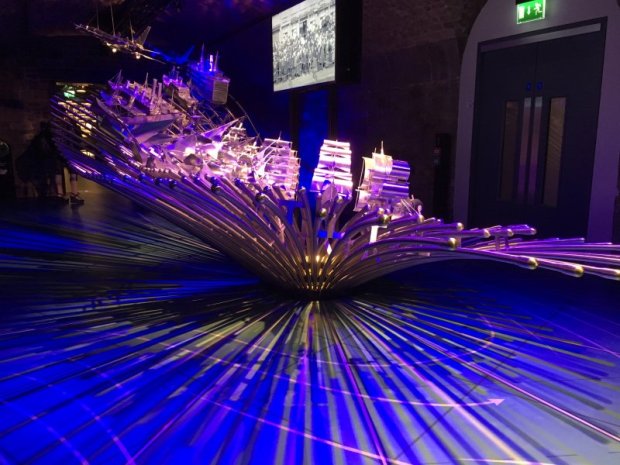
Entrance to EPIC, the Irish Immigration Museum
Self-guided Dublin Walking Tour: North of the Liffey

Dublin’s Custom House
Walking north of the Liffey there is this large building. It is called Custom House but it is a government office. The Irish built this huge custom house but after a while custom business moved to London. Neither is a custom house needed in today’s EU.

These photos show O’Connell Street that is the main street between north and south in Dublin. There is the Old Post Office, in fact it’s only the facade of it. The rest was destroyed in an uprising in 1916 that finally led to Irish independence.

Dublin self-guided walking tour: the Monument of Light.
This is the Spire. Its real name is the Monument of Light. It is 120 m high and made of stainless steel. It’s three metres wide in the beginning and 10 cm wide at the top.
Ha’penny Bridge
On Ha’penny Bridge
Ha’penny bridge is what most people think about when they hear the word Dublin and you can see the bridge here. The bridge links Temple Bar to the north and 30 000 people cross the bridge each day.
There is no fee but there used to be. That’s what the name comes from. For over a hundred years they took a fee for crossing the bridge, a half penny.

The half penny bridge was made by an English iron worker in 1816. He made the bridge of cast iron and painted it white. He designed nice gates and on the top he put iron lanterns. Ha’penny bridge, the symbol of Dublin.

Crossing the Liffey on Dublin’s Ha’penny Bridge
Ha’penny Bridge takes you back to Temple Bar and beyond it, to the old part of Dublin. There is the Dublin Castle.
Self-Guided Dublin Walking Tour: Dublin Castle

Interior of Dublin Castle
Dublin Castle is located in the place Dublin got its name from. There was a dark pool (Dub Linn) that later on got covered. You don’t see much about the old centre of Dublin. But Dublin Castle is left, rebuilt over centuries and added to.
Originally built in 1204 by King John of England the castle was the headquarters of the English that ruled Ireland for the next 750 years. Since Ireland got independent in 1922 Dublin Castle is the place for Ireland’s big state events.

One of the halls of Dublin Castle

Dublin Castle, Ireland
The present Georgian palace was added in the 18th century and there are the castle’s state apartments that you can visit. The state apartments consist of dining and drawing rooms and a throne room. All rooms are very decorative.

St Patrick’s Hall, Dublin Castle
This is St Patrick’s Hall that used to be the castle’s ballroom. Today it is the most important ceremonial room in Ireland. It is a hall with beautiful ceiling paintings and many banners on sides. They are banners of the knights of St Patrick.
Dublin Castle
Christ Church Cathedral

The 1038 Christ Church Cathedral
Christ Church Cathedral is close to Dublin Castle and it is Dublin’s oldest building. A Norse king and an Irish bishop built the cathedral in 1038 after the Normans took over the city.
Christ Church Cathedral has changed its form since but there is an old leaning wall inside and other old parts remain. And you have to see the interior decoration. You can also see that if you go on a concert in the church.

Christ Church Cathedral, Dublin
Self-guided Dublin Walking Tour Ends

Self-guided Dublin walking tour along Dublin waterways
If you followed my Dublin walking tour you have been walking 8 km in a day which is quite a bit. You deserve a beer in Temple Bar, and Irish live music. Hoping to meet you one day in Dublin and have a great evening!

Have a great Temple Bar evening!
More on Dublin and Ireland
- Maybe you want to make a day trip from Dublin? Check out my post Giants Causeway Day Trip from Dublin
- Or rent a car and head to the Wicklow Mountains? Wicklow Mountains Scenic Drive from Dublin
- We also have a guest post about a road trip around Ireland: Road Trip in Ireland: Dublin to Galway, Moher and Cork

Giants Causeway day trip from Dublin
Read about European Cities
- Amsterdam, Antwerp, Bruges and Gent
- Tallinn Old Town
- Palma de Mallorca
Trinity College has admitted Catholics since the 1870s. It was the Catholic Church itself that forbade it’s members from attending without specific permission until 1970.
Thank you for your lovely walking tour and for your information and photos of Giant’s Causeway. We are planning a trip in the near future to Ireland and your site has been very helpful. We can’t wait!
So glad to hear you find my site helpful. I also recommend you go and see Wicklow mountains, I went there too but didn’t write about it yet. You can rent a car or take a bus tour.
This was very helpful! Thank you! We are visiting in May and spending 2 nights in Dublin. How is parking around town? We plan on staying in outer Dublin as the hotel prices are cheaper, but want to go into the city.
I’m sure you will have great days in Dublin, May is a wonderful time to visit! But I have to say I don’t know about parking. We only rented a car to make a day trip to Glendalough and Wicklow mountains so I don’t have any experience in parking in the city.
Leave a Reply Cancel reply
Your email address will not be published. Required fields are marked *
Save my name, email, and website in this browser for the next time I comment.
This site uses Akismet to reduce spam. Learn how your comment data is processed .

Velvet Escape
go explore. experience. and be inspired.
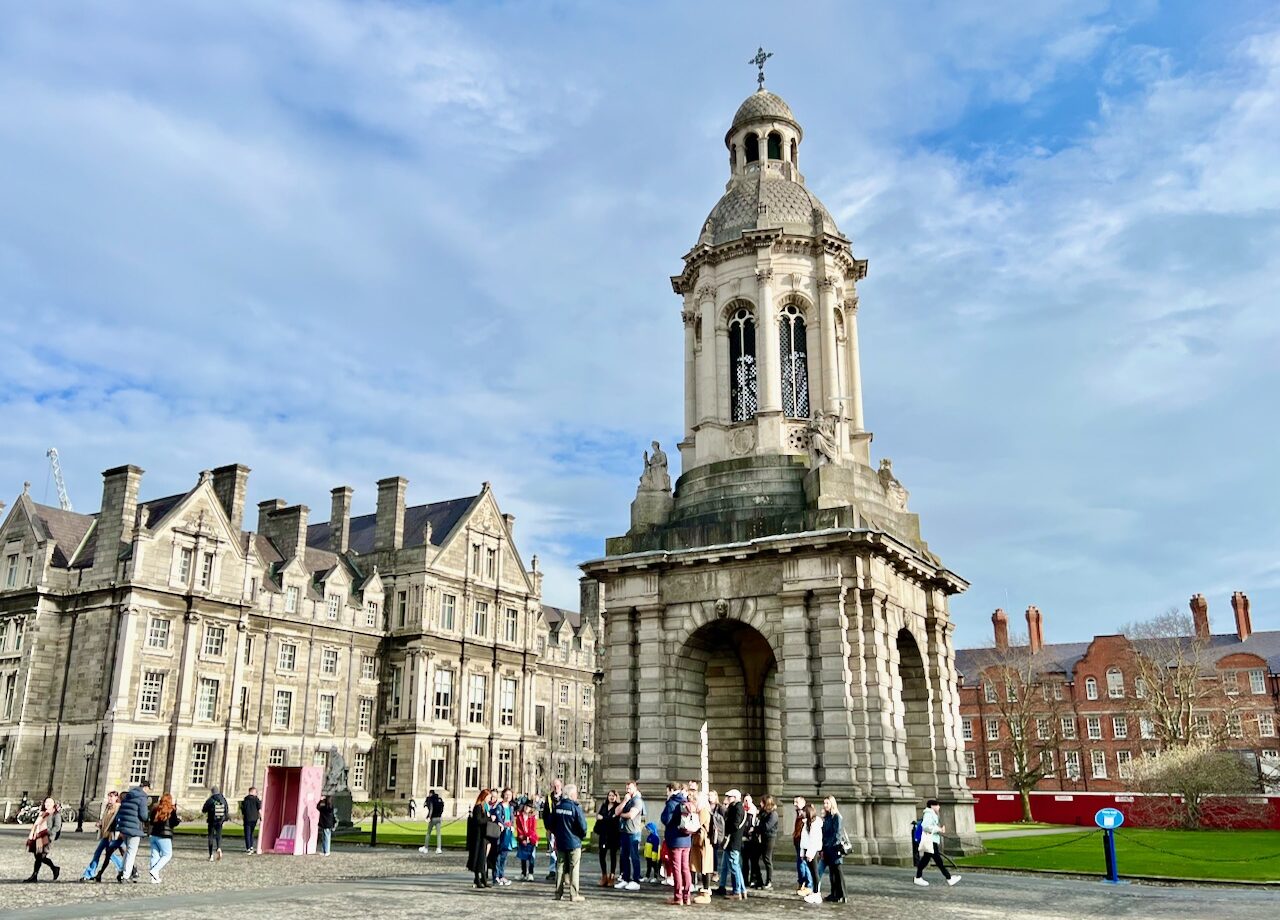
Dublin in a day
Dublin , the captivating capital of the Republic of Ireland, offers a wealth of experiences for visitors. Immerse yourself in the city’s vibrant streets, known for their rich storytelling tradition and lively music scene. As the birthplace of iconic beverages like Guinness and Jameson, exploring Dublin’s pubs is a must. During my recent business trip to Dublin, I set aside an extra day to revisit my favorite spots and embark on a walking adventure through the city center. Join me as I share my self-guided walking tour, highlighting Dublin’s top attractions and the charming pubs I discovered along the way. Whether you’re short on time or seeking a comprehensive day-long exploration, this walking route is an ideal choice.
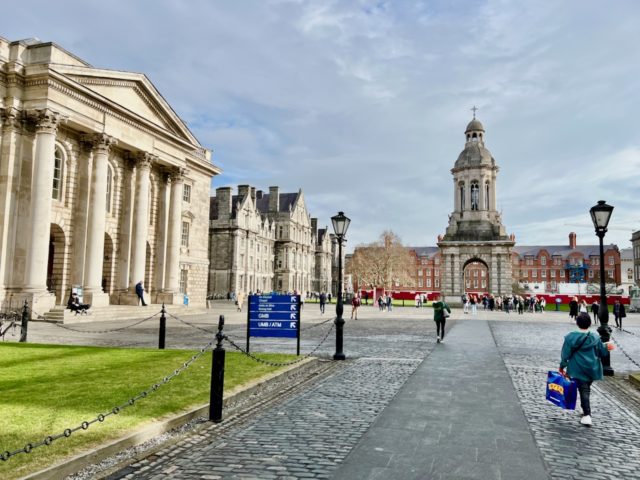
The highlights of Dublin: one day walking tour
This self-guided walking tour of Dublin is approximately 8km (5 miles) long and can easily be covered in a day, including visits to some of the attractions along the way. I ventured off this route many times whenever I spotted something interesting, which resulted in a total walking distance that day of 12+km (7.5 miles). The orange pins in the map represent the top attractions in Dublin covered in the walking route below. The purple pins are Dublin pubs I can recommend.
Dublin Castle
I stayed at the Marlin Hotel , a cool design hotel with a terrific location. From there, it was a short walk to Dublin Castle , my first stop. One of the most important buildings in Irish history, Dublin Castle was constructed in the 13th century on the site of a Viking settlement.
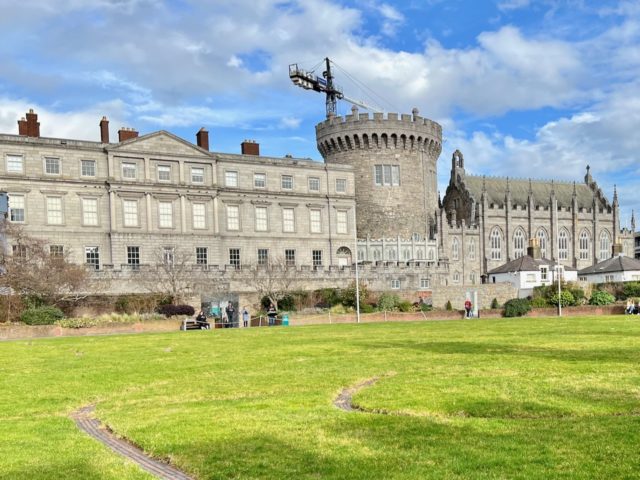
Chester Beatty Library
Within the castle grounds, I visited the Chester Beatty Library , often mentioned as the best museum in Dublin. Formerly the library of Sir Alfred Chester Beatty (a 20th century mining magnate), the museum houses his incredible collection of ancient manuscripts, rare books and miniature paintings. Entrance is free and it’s absolutely worth a visit!
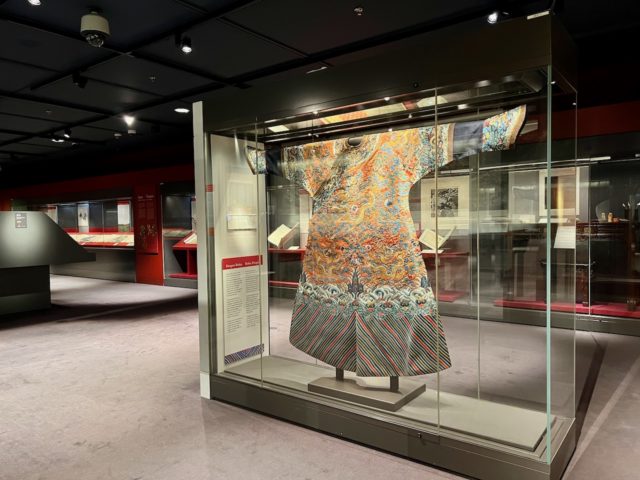
St. Patrick’s Cathedral
From Dublin Castle, I made my way to St. Patrick’s Cathedral and its adjacent park. The national Cathedral of the Church of Ireland, St. Patrick’s Cathedral was built in the 13th century and features a stunning nave and beautiful stained glass windows.
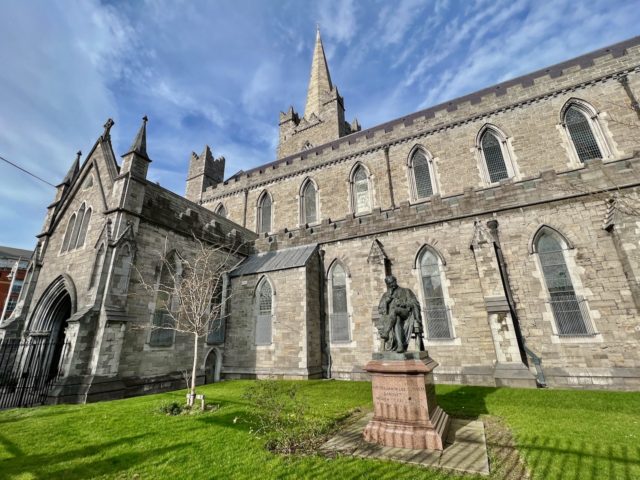
Christ Church Cathedral
I continued my ‘Cathedral Hop’ with a visit to the Christ Church Cathedral (or the Cathedral of the Holy Trinity). Constructed in the 12th century, this medieval Cathedral is even older than St. Patrick’s.
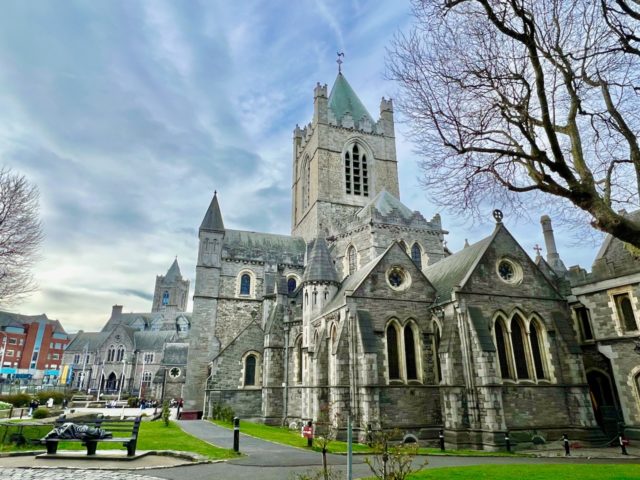
If you have time, continue up Lord Edward Road to the Guinness Storehouse , the famous brewery and museum. There are also panoramic views of Dublin from the Guinness Gravity Bar.
River Liffey
From the Christ Church cathedral, I walked down Lord Edward Street to the Dublin City Hall before turning left towards the River Liffey . The river is lined by beautiful, historic buildings on both banks.
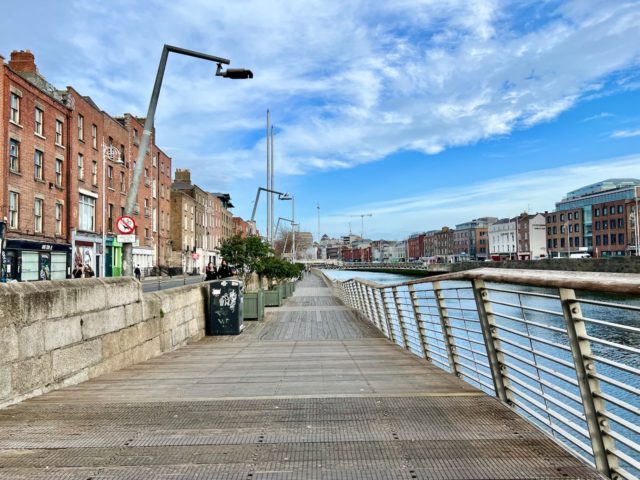
I crossed the river and continued my walk along the promenade to one of Dublin’s most iconic structures, the Ha’penny Bridge . If you’re following this Dublin walking route, consider visiting the Jameson Distillery on Bow Street, not far from the river. You can also buy a combined skip-the-line ticket for Guinness Storehouse and Jameson Distillery.
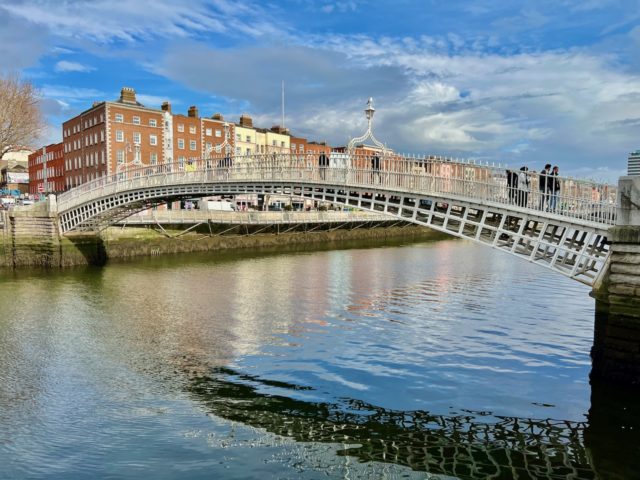
I crossed the Ha’Penny Bridge to the Temple Bar district. It’s one of my favourite areas in Dublin because of its lively pubs, vintage shops and colourful street art. I explored the streets and lanes in Temple Bar, looking for cool street art and simply soaking up the vibes, even if it was early in the afternoon.
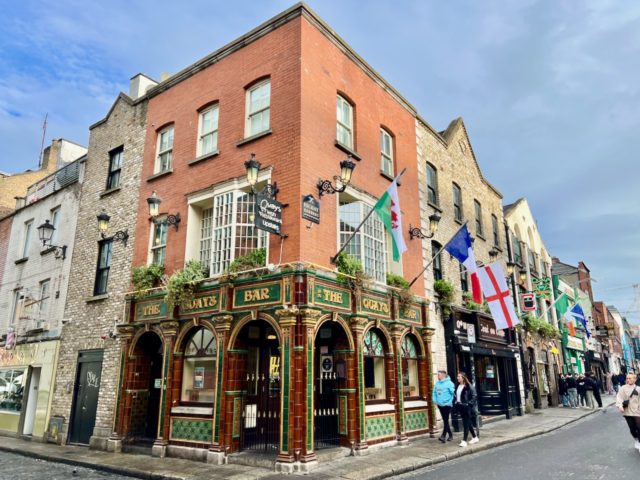
Don’t miss the world famous Temple Bar Pub , where bands often perform. If you have time, check out the Irish Rock ‘n’ Roll Museum in Curved Street. Temple Bar is also the perfect area for a lunch break as there are many restaurants, cafés and pubs serving food. I had a meal at Elephant & Castle .
Molly Malone
From Temple Bar, I walked up Church Lane to St. Andrew’s Street, the location of the Molly Malone statue. Molly Malone is from a song called Cockles and Mussels, the city’s unofficial anthem. A statue representing the character in the song was unveiled in 1988. Over the years, the practice of rubbing her bosom for luck became popular among tourists, resulting in a very polished bosom!
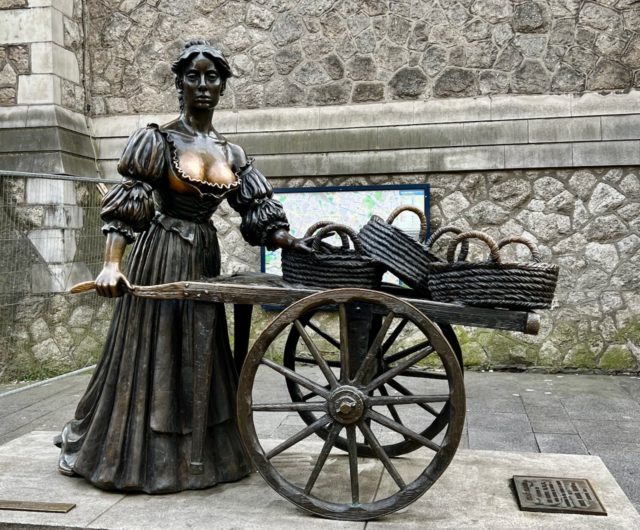
Irish Whiskey Museum
I continued my walk and stopped at the Irish Whiskey Museum . I enjoyed the interactive exhibits that tell the history of whiskey in Ireland, followed by a whiskey tasting.
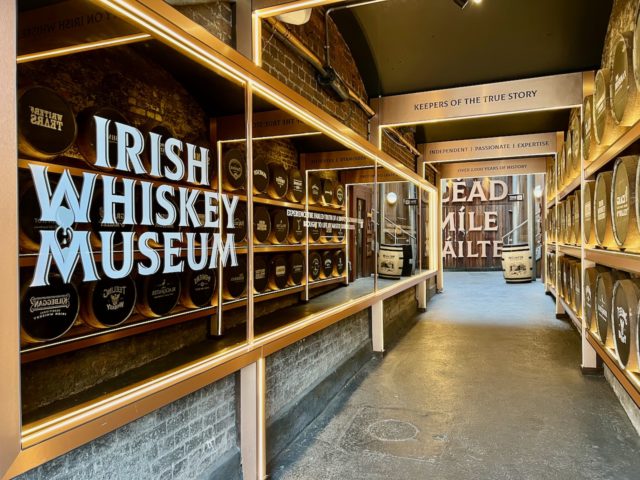
Trinity College
My next stop was Trinity College , across the road from the Irish Whiskey Museum. Established in 1592 by Queen Elizabeth I, Trinity College is another iconic Dublin landmark. One of Europe’s most prestigious academic institutions, the main attraction for tourists is the Library , which houses important artifacts such as the Book of Kells and an ancient wooden harp, the national emblem of Ireland.
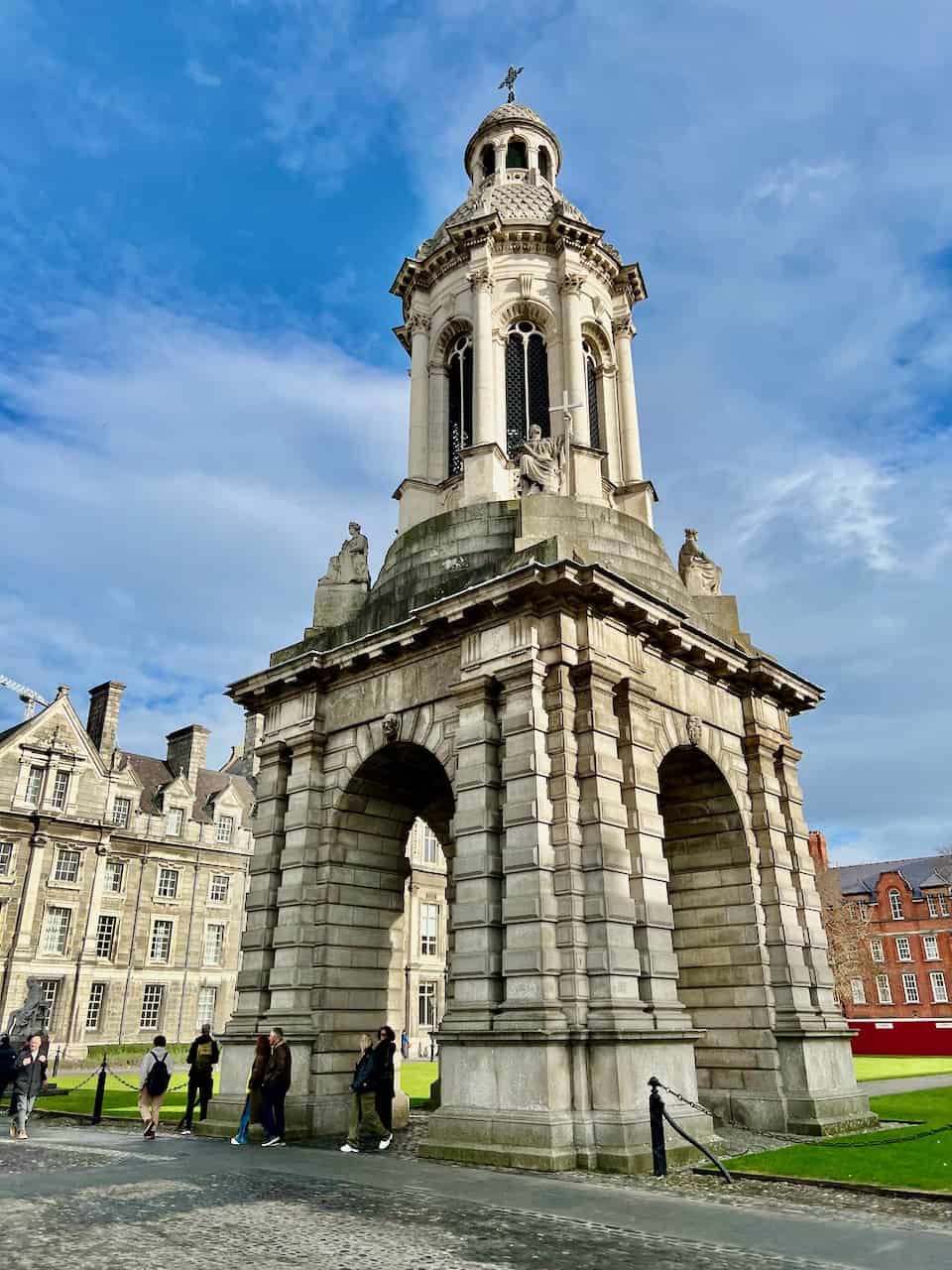
National Museum of Ireland
From Trinity College, I continued my walk along Kildare Street, the location of the Irish Parliament . Surrounding the Parliament are several notable institutions and museums such as the National Library , the National Gallery of Ireland and the National Museum of Ireland . I ventured into the National Museum (free entrance) and found a stunning interior with interesting exhibits and stories of voyages, battles and struggles.

St. Stephen’s Green
After the museum, it was time for another break so I headed to nearby St. Stephen’s Green , one of Dublin’s most popular parks. I found a bench to enjoy the sunshine and beautiful greenery. Instead of the park, if you’d like to visit another nearby museum, I recommend the Little Museum of Dublin opposite the park.
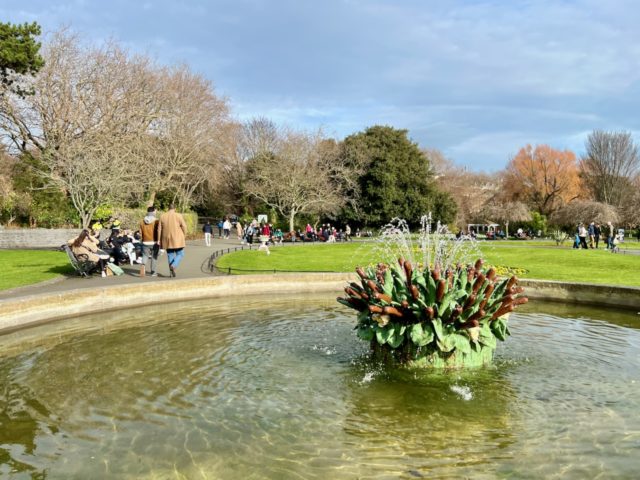
Grafton Street
From the park, I headed for Grafton Street , Dublin’s main shopping street. Near the top of the street, you’ll find Brown Thomas , Ireland’s answer to Harrod’s.
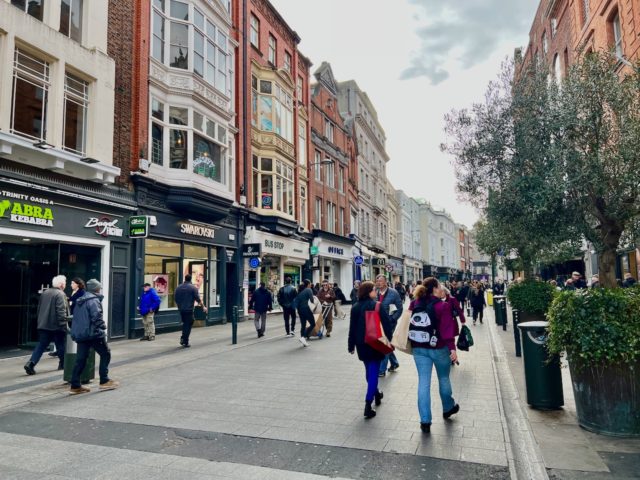
George’s Street Arcade
I turned off Grafton Street into Wicklow Street and explored the surrounding neighbourhood, with its countless restaurants and pubs. On previous trips to Dublin, I visited Mary’s Bar & Hardware (a pub in a ‘hardware’ store!), Grogan’s (a Dublin institution) and the quirky The Hairy Lemon . I ended up at the George’s Street Arcade , a shopping arcade inside a stunning brick building.
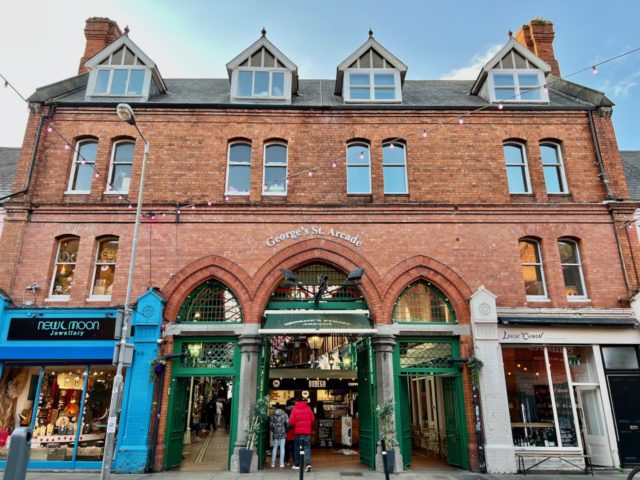
Whitefriar Street Church
I continued up Aungier Street to my final stop: Whitefriar Street Church . A friend of mine mentioned this church to me. One of the most popular churches in central Dublin, Whitefriar Street Church is home to important relics of St. Valentine, a gift from Pope Gregory XVI in the 19th century. Since then, the church has become a popular pilgrimage site especially during Valentine’s Day.
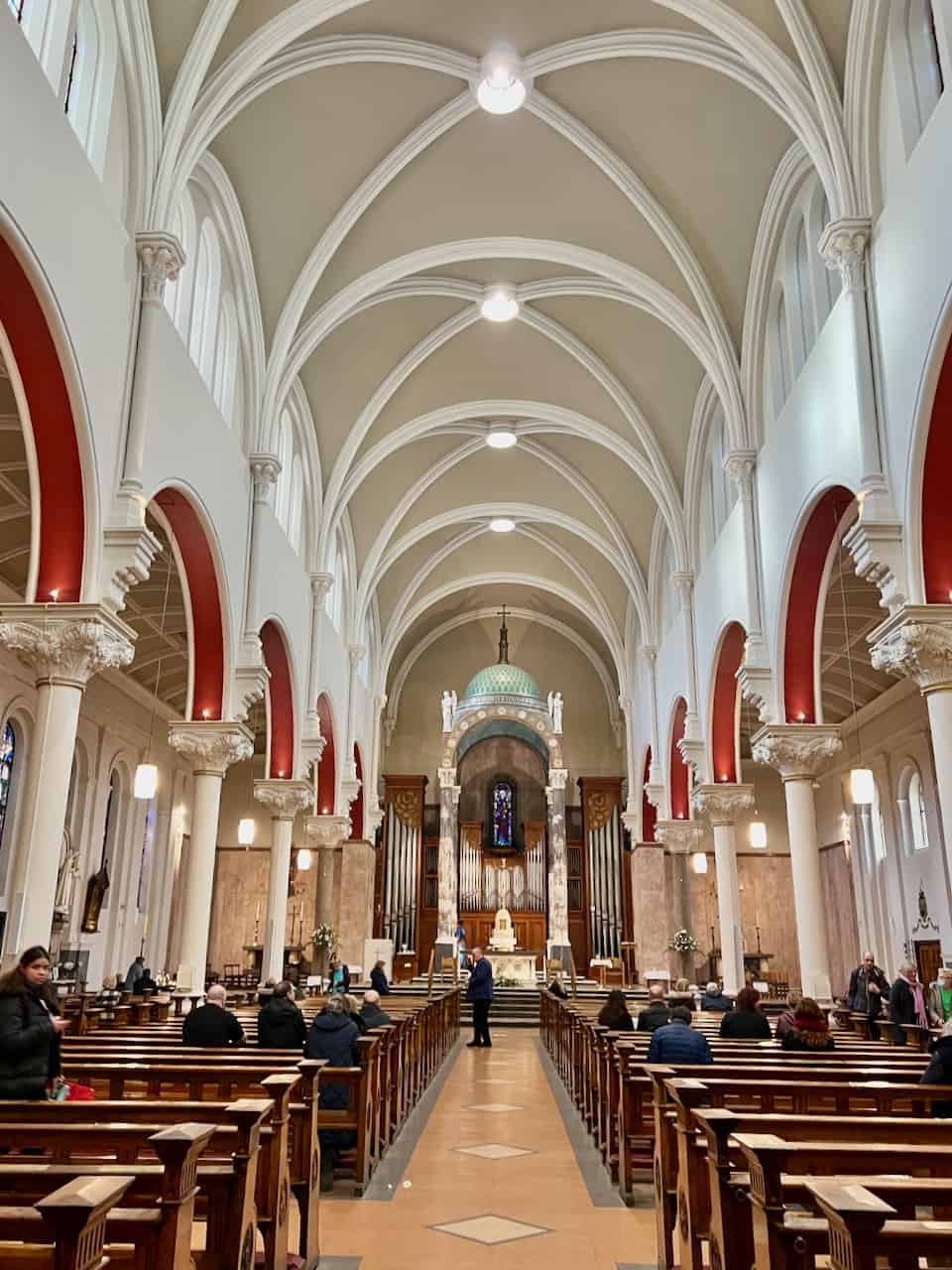
I ended my walk at The Long Hall , just down the road from the Whitefriar Street Church, for a well-deserved Guinness. This historic pub has a striking Victorian interior and a great ambiance.
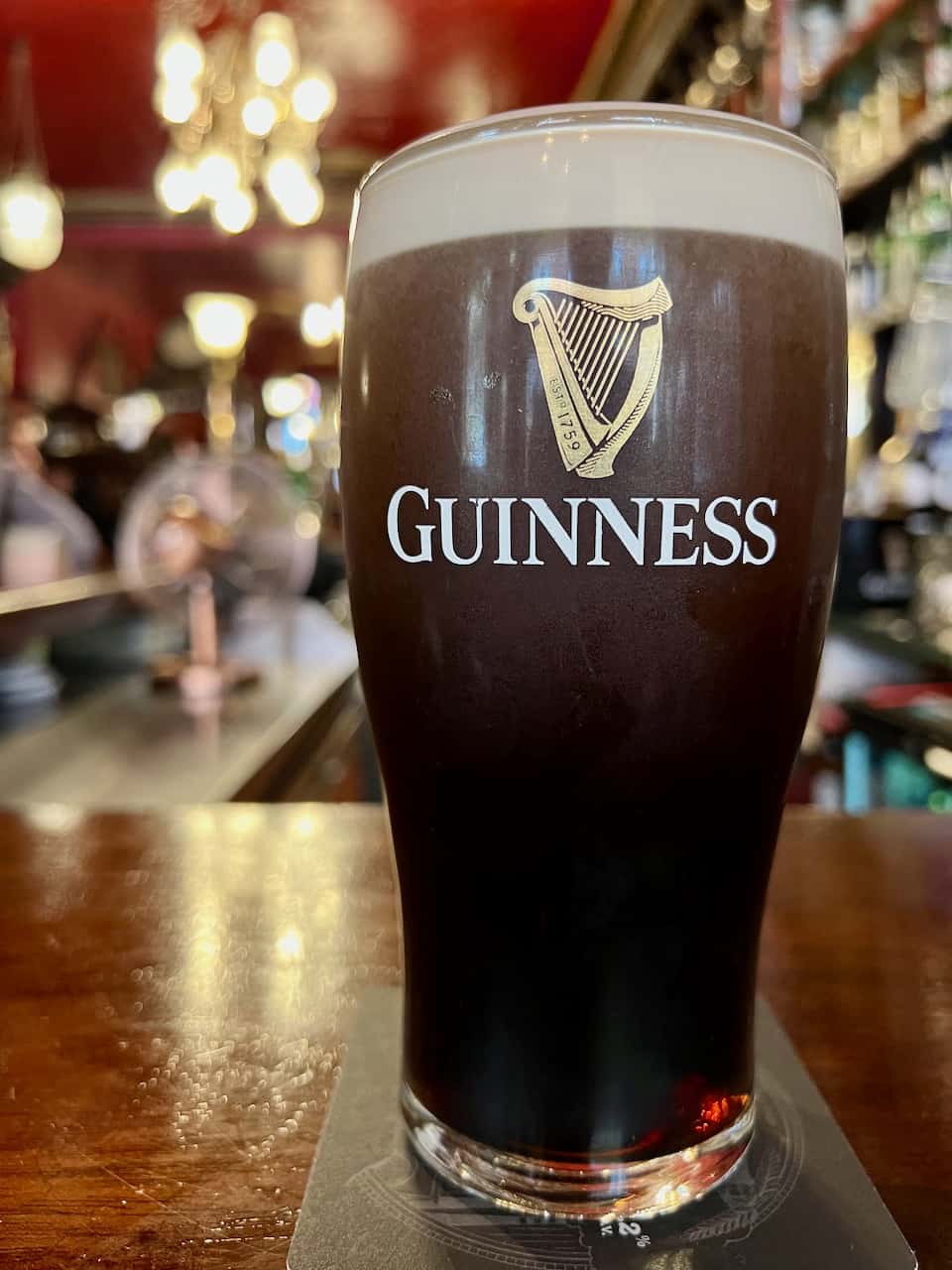
Read bout my drive along the Wild Atlantic Way on Ireland’s rugged west coast and my visit to the stunning Cliffs of Moher .
Related Posts
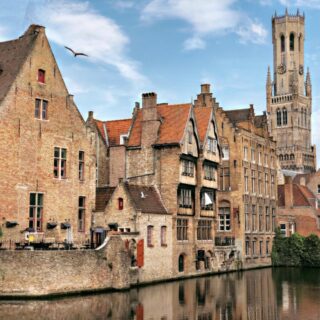
Subscribe to get the Velvet Escape Newsletter in your inbox!
2 Responses
Hello there! I just finished reading your article on the Dublin highlights walking tour, and I must say, it’s a fantastic guide that showcases the vibrant city of Dublin. Your article provides a comprehensive itinerary that allows readers to explore the best of Dublin’s cultural and historical treasures on foot.
I appreciate how you’ve highlighted the must-visit attractions and hidden gems that make Dublin such a captivating destination. From the iconic Trinity College and St. Patrick’s Cathedral to the lively Temple Bar area and the charming streets of Dublin’s Creative Quarter, your walking tour covers a diverse range of experiences. Your descriptions and historical insights add depth to the itinerary, making it even more intriguing.
Furthermore, your practical tips on where to grab a bite to eat and where to enjoy a pint of Guinness along the way are highly appreciated. It’s evident that you have a deep knowledge of Dublin and have curated this walking tour to offer an immersive experience for visitors.
Thank you for sharing this insightful walking tour of Dublin. Your article has sparked my wanderlust and made me eager to explore the city’s rich history and vibrant culture. Keep up the fantastic work, and I’ll be eagerly waiting for more of your travel guides and recommendations.
Awesome walking tour of Dublin! Love this – thanks for this. And yes I love it that you ended the tour with a pint of Guinness!
Leave a reply
Save my name, email, and website in this browser for the next time I comment.
This site uses Akismet to reduce spam. Learn how your comment data is processed .
Appeared In

- Click to open search
- Open the main navigation
- Newsletter Opens in a new window
Walking in Dublin

To explore long piers and rocky shorelines, leafy canal banks and fragrant forests, tranquil harbours and historic neighbourhoods. From solo walks to guided excursions, Dublin is yours to discover.
The journey is just as important as the destination as it provides a chance to soak up the city with time on your side. Linger and sip coffee en route. Pack a picnic and just start walking. Set your sights on the little red lighthouse in Dublin Bay and set off on your South Wall stroll. Book a guided walking tour, themed around history or food or pubs or U2.
Whatever your interest, there's a walk to match it. You can walk with purpose, following a specific itinerary. Or you can do what many a Dubliner considers one of the best ways to enjoy their city and engage in the aimless wander: it has no specific goal but always provides something noteworthy along the way.

Grand Canal Way

Howth Walking Tours

Ticknock - Fairy Castle Loop
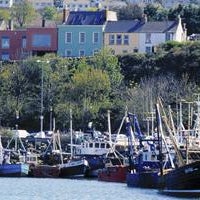
Howth - Tramline Loop
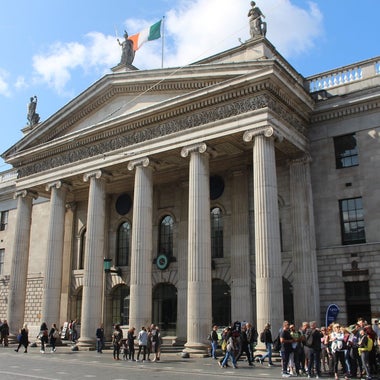
The Best of Dublin - Highlights & Hidden Corners – Pat Liddy’s Walking Tours of Dublin

Barnaslingan - Scalp Lookout Trail (Red)

Howth - Black Linn Loop
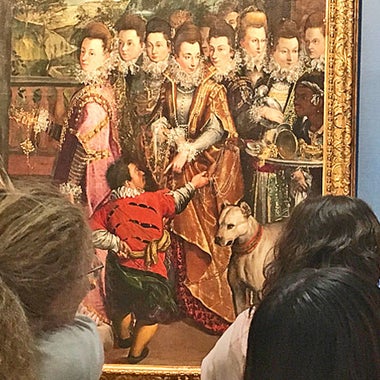
Dublin Decoded Walking Tours

Sidewalk Safari | Part-time Travel Blog
A local's guide to 21 of the best dublin walks.
You might take a self-guided walk in Dublin to one of the city's beautiful university campuses or you can sign up for a guided tour to learn more about Dublin's history.
Stay close to Dublin City or explore the far reaches of County Dublin on well-marked trails. This post covers the best Dublin walks discovered over a period of 10 years living in Ireland.
Whether you are looking for a short stroll or a bracing hike on a rocky trail, I've got you covered with these 21 Dublin walks.
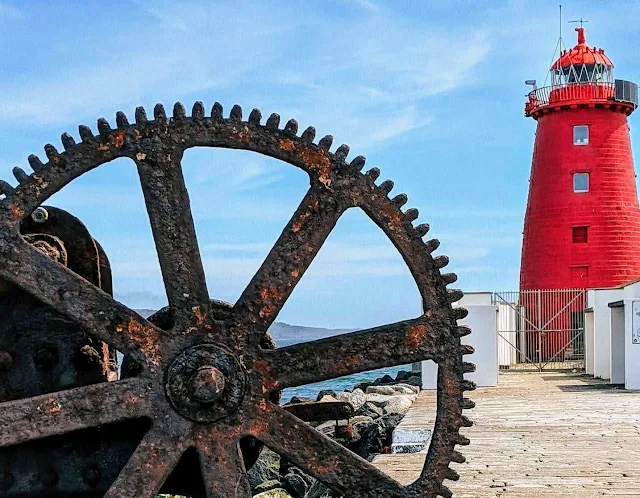
Dublin Walks Map
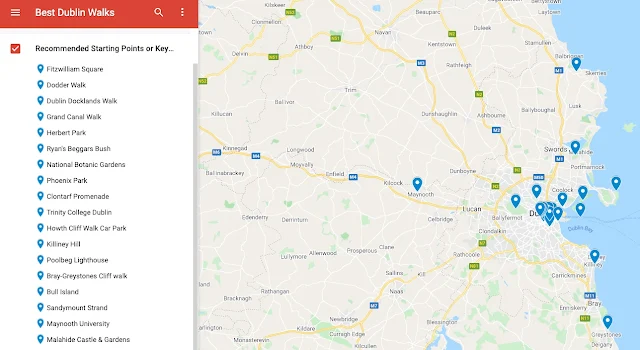
Dublin City Walks
1. walk georgian dublin, estimated time to do this dublin walk: 1 hour.
The spectacular Georgian doors of Dublin are one of the capital’s most beautiful and photographed features.
I’ve lived in Dublin for over a decade and I’ve taken many pictures of Ireland and Dublin’s doors are definitely one of my favorite subjects.
If you know where to look, you’ll find all the colors of the rainbow, textured brickwork, dramatic flowers and landscaping, and fancy fanlights and glass side panels. Some of Dublin’s doors even feature stained glass.
Keep an eye out for vintage boot scrapers (one of my favorite features of a historic door's anatomy ) as you look for the best doors.
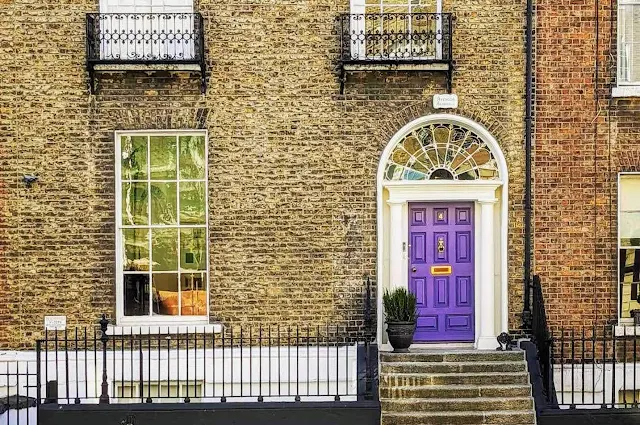
Where can you find the Georgian doors of Dublin? Visitors tend to be drawn to the area around St. Stephen’s Green.
I recommend a walk that includes Fitzwilliam Square which is about 10 minutes on foot from St. Stephen’s Green. Start this Dublin walk at Fitzwilliam Square.
Walk around all four sides of the private park and then head down Leeson Street toward the Grand Canal. Walk across the bridge spanning the Grand Canal and continue on Leeson Street.
You could walk down Leeson Street to Donnybrook or turn on Waterloo Rd. toward Baggot St. and St. Mary’s Road.
Alternatively, you could take this Dublin walk down Appian Wa y and continue to Ranelagh or Rathmines .
No matter which way your turn, this walk will take you on a proper Dublin doors scavenger hunt !
2. Dodder Walk
Estimated time to do this dublin walk: 30 min - 3 hours depending on how far you go.
The River Dodder is a fantastic anchor point to guide a Dublin walk.
The Dodder empties into the Liffey at Grand Canal Dock and snakes all the way through Ringsend, Ballsbridge , Milltown, and on to Rathfarnham before reaching its source in the Wicklow Mountains.
Depending on where you start and how far you go, you’ll discover edgy street art, fantastic views of Aviva Stadium, pleasant waterfalls, and maybe even a rhino wading in the water.
For a longer walk, take a detour into Bushy Park.

3. Grand Canal Walk
Estimated time to do this dublin walk: 30 - 90 minutes.

A stroll along the Grand Canal may make you think of Venice, but it’s also one of the best Dublin walks around. Start this walk on Mount Street bridge.
There is a memorial here commemorating the Battle of Mount Street Bridge. The GPO and Boland’s Mill may be the highest profile locations celebrated in the history of 1916 Easter Rising, but Irish rebels also fought the British here where Mount Street and Northumberland Road come together.
Dublin’s Grand Canal features a path along the water that alternates between a dirt and paved track. Look for herons fishing and moorhens darting among the reeds.
If you’re lucky, you may see a boat traversing the locks. Keep an eye out for writer Patrick Kavanagh’s statue which will forever be relaxing cross-legged along the Grand Canal near Baggot Street.
Continue on and you may find crowds gathered on a sunny day outside the Barge Inn pub. Go as far as Portobello and you might be treated to a bevy of swans gliding across the water looking for generous walkers to give them a treat.
Do the swans a favor and don’t throw them bread. Signs along the Grand Canal advise to only feed swans foods like oats, corn, and defrosted frozen peas.
4. Dublin Docklands Walk
Estimated time to do this dublin walk: 30 - 60 minutes.
Grand Canal Dock is modern Dublin at it’s finest with architecturally interesting buildings home to theatres, apartments, hotels, and headquarters of the various tech companies that call Dublin home.
They don’t call this neighborhood of Dublin ‘Silicon Docks’ for nothing!

Make time for a Dublin walk through the Dublin Docklands for fantastic photo-ops and some creative street art. Don’t miss:
- The Bord Gais Energy Theatre which was designed by renowned architect Daniel Libeskind .
- The red neon forest art installation that adds ambiance to the square just outside the theatre.
- Boland’s Mill which played a central role in the fight for Irish independence. The mill was held by Éamon de Valera (future Taoiseach) during the 1916 Easter Rising.
- The Alliance building, a former gas storage cylinder turned into apartments. Head down Barrow St. or South Lott Road and you can’t miss it.
- South Lotts neighborhood where you'll find quaint cottages with stunning brickwork. These cottages historically housed the workers in the area.
5. Ballsbridge to Donnybrook via Herbert Park
Estimated time to do this dublin walk: 1 - 2 hours.
Ballsbridge to Donnybrook is another Dublin walk that I highly recommend, especially in the Spring.
Explore the beautiful doors in Ballsbridge along Northumberland Road or Shelbourne Road and then slip into Herbert Park in Ballsbridge Village.
In the Spring, Herbert Park is lined with fragrant flowering pink cherry trees that uplift the spirits. Stop for a moment to feed the ducks in the large pond that is a centerpiece of Herbert Park before continuing this Dublin walk in Donnybrook.
Here you’ll get another fix of my favorite Dublin doors. Stop for a coffee in Donnybrook Village before heading for home.
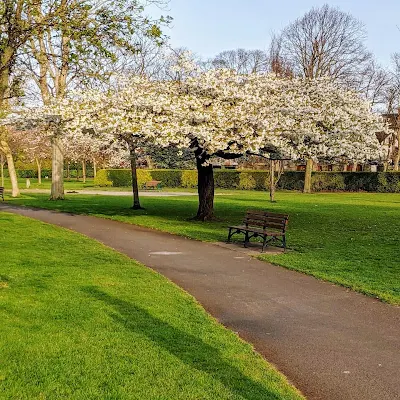
6. Beggars Bush
Estimated time to do this dublin walk: 30 minutes.
I love a good stroll around Beggars Bush. Beggars Bush is a former British Army barracks associated with a darker time in Irish history.
Today Beggars Bush is a mix of quiet apartment buildings and a few offices alongside the National Print Museum, and Press Cafe.
Beggars Bush is a lovely place for a relaxed Dublin walk away from the city crowds rushing by just outside its walls.

7. National Botanic Gardens and Glasnevin
Estimated time to do this dublin walk: 3 - 4 hours.
The National Botanic Garden combined with Glasnevin Cemetery makes the perfect Dublin Northside walk.
Drive or take Dublin Bus Number 4 from Dublin City Centre to the entrance of the National Botanic Gardens of Ireland.
The National Botanic Gardens features 15,000 plant species from around the world and was founded in 1795. The National Botanic Gardens is open to the public and is one of the best free things to do in Dublin .
Explore charming Victorian-era greenhouses. Palm House is hard to miss and is extremely photogenic.
Colorful flower beds, burbling rivers, and an arboretum will keep you occupied for a few hours.
Visit The National Botanic Gardens in the Autumn for Sculpture in Context exhibitions. This is where local artists display their works in situ with the natural surroundings.

Look for the gate connecting the National Botanic Gardens with Glasnevin Cemetery. Glasnevin is the ideal place for a quiet reflective walk and a a crash course on Irish history.
Take a walking tour of Glasnevin Cemetery and you'll find yourself regaled with stories from the time of Daniel O'Connell (aka "The Liberator") through the 20th century and the era of Irish independence.
O'Connell commissioned and funded the cemetery as a non-denominational resting place and you’ll find his tomb beneath a tall tower.
Look for Irish writer Brendan Behan’s grave. On the anniversary of his death, you’ll find his headstone covered with pints of Guinness.
Glasnevin Cemetery Museum is located on the premises along with a cafe and other facilities.
8. Phoenix Park
Another quintessential Dublin walk is Phoenix Park, the largest city park in Europe.
The Wellington Monument is the iconic symbol of the park. You can't miss it.
Have a wander around the park keeping an eye out for the resident herd of deer. Phoenix Park is home to Ireland’s President and the American ambassador.
You’ll also find Dublin Zoo, a walled garden, and a small castle complete with a tiny hedge maze.
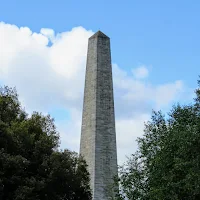
Extend your Dublin walk in Phoenix Park to Farmleigh House, a nearby estate formerly owned by the Guinness family.
Farmleigh House is now used to entertain visiting dignitaries, including American presidents like Barack Obama. We particularly enjoyed exploring the sunken garden which was dramatically placed behind the home.
It was clear that a lot of care and attention was spent on shaping the hedges (into peacocks and spirals!).
No manor house in Ireland is complete without the obligatory walled garden. The walled garden is still in use. If you visit in the Autumn, you may be lucky enough to see seasonal pumpkins growing here.
9. Stroll Clontarf Promenade
Estimated time to do this dublin walk: 1 - 4 hours.
If you enjoy nature, try this Dublin walk centered on Clontarf . Clontarf is located north of the River Liffey along the Irish Sea and you'll only need to travel a couple stops from Dublin City Centre on the DART train to get there.
Clontarf promenade dates back to the 1950s and provides a wide, luxurious and paved path for a walk. On one side, you’ll see elegant homes with colorful doors and on the other, lovely sea views and iconic Poolbeg smokestacks.
If you’re feeling ambitious, walk all the way to Bull Island where you’ll find a beach, a break wall to walk, and plenty of paths among the dunes that are amazing for birdwatching.
Enter Bull Island over the historic single-lane wooden bridge built in the early 19th century. Leave Bull Island at Causeway Road to return via St. Anne Park and Raheny DART station.
It takes about 40 minutes to walk from Clontarf DART station to Dollymount Wooden Bridge. If you decide to add in Bull Island, budget another 2-3 hours.
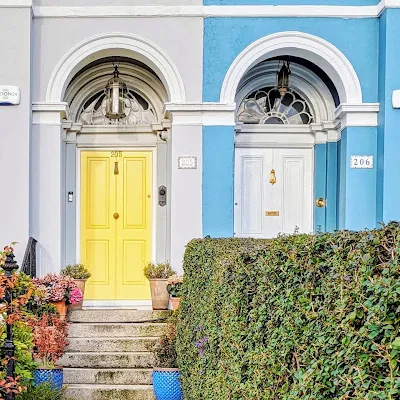
10. Trinity College Dublin
Estimated time to do this dublin walk: 1 hour.
Trinity College Dublin is another idyllic setting for a Dublin walk. You’ll discover photo opportunities galore on the TCD campus with lots of historic architecture and sweeping green spaces.
If the building is open, duck inside the Ballroom Physical Laboratory. We visited during the annual Open House Dublin and were treated to a brief lecture and tour from a retired Professor of Physics dressed in academic regalia.
The historic laboratory is over a century old. The Physical Laboratory building features a fascinating array of historical lab equipment in period cases.
We even got to sit in a historic lecture hall where Erwin Schrödinger gave a lecture titled “What is Life?”
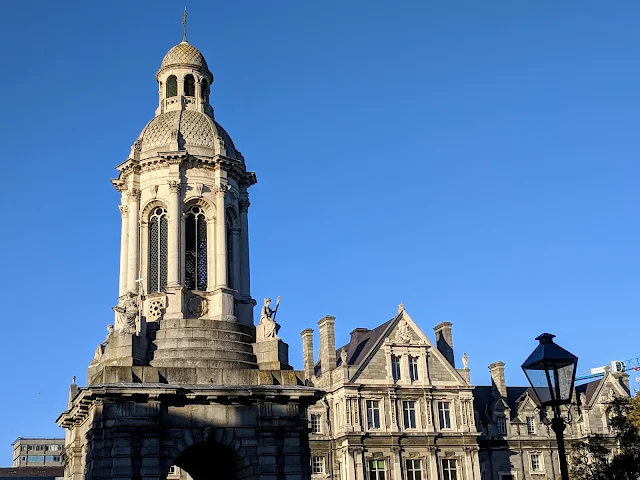
No walk around Trinity College Dublin is complete without a visit to the Book of Kells. The Book of Kells is over 1000 years old and is one of the most popular tourist attractions in Ireland.
Marvel at the intricate illustrations that accompany the text. The Book of Kells tour ends in the Long Room of the Old Library.
Here you’ll find a dark wood paneled hall lined with busts of famous writers and history books from floor to ceiling. Take a moment to break in the history.
Coastal Walks in Dublin
11. howth head cliff walk, estimated time to do this dublin walk: 2-3 hours.
The Howth Cliff Path Loop is an iconic Dublin walk and often features bracing winds alongside gorgeous views of the Irish Sea. Colored arrows mark the trail and help you stay on track.
The Howth Head cliff walk begins as you ascend slowly from Howth Village. Alternatively, you can park at the Summit Car Park and follow the trail out to the Telegraph Cable.
You'll experience sweeping views over the cliffs leading to Baily lighthouse. Cautionary signs warning of dangerous cliffs can be both disconcerting and exhilarating.
Respect the signs, but don’t let them deter you. Look down at the crashing waves but don’t get too close to the cliff’s edge.
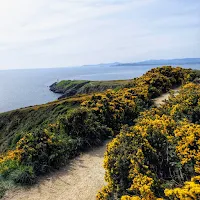
Make sure to wear long trousers for this Dublin walk because the trail is edged with thorny brush. Certain segments of the Howth Cliff Path are quite narrow and you'll have to skirt through the foliage.
When you see the lighthouse in the distance, turn upward toward the apex of the trail. You’ll find a rough set of steps to support you as you climb.
The Howth Cliff Path Loop is approximately 6 km. Budget 2-3 hours for this Dublin walk not including the time it takes to get to the trail head in Howth Village.
12. Killiney Hill Hike
Estimated time to do this dublin walk: 1-2 hours.
Start this South Dublin walk in Sorrento Park, a lovely yet somewhat unkempt green space on a hill outside of Dalkey Village not far from the DART station.
Follow the trail up to Killiney Hill admiring stunning views of the Irish Sea along the way. Your target? The obelisk at the top of Killiney Hill.
It takes less than an hour to walk from Sorrento Park to the apex of Killiney Hill. Fair warning: you may be delayed by the overwhelming urge to take photos of the breathtaking scenery.
Who knows, you might even spot a celebrity or two on this Dublin walk. Bono, Pierce Brosnan, and even Matt Damon live in or have been known to frequent Dalkey.
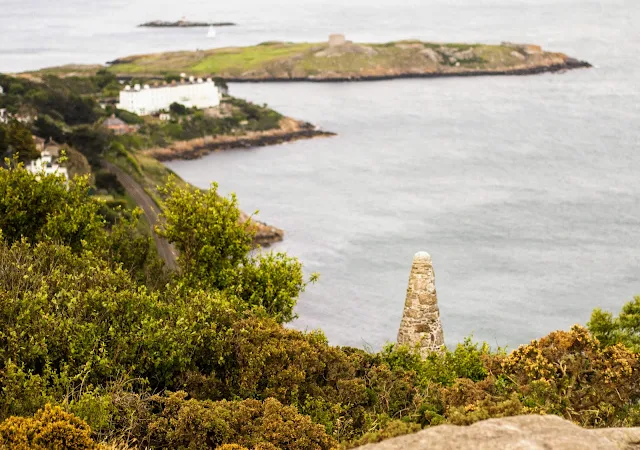
13. Poolbeg Lighthouse
Estimated time to do this dublin walk: 2 hours.
The hike to Poolbeg Lighthouse is a favorite Dublin walk among locals. Make sure to pack a jacket since the wind is often quite brisk as it comes across the Irish Sea.
This South Wall walk is Ireland at its best. The Poolbeg smokestacks are situated on Sandymount Strand on Dublin Bay. Sandymount Strand is walkable from Dublin’s Grand Canal Docks neighborhood.
Take a taxi or the DART train to Sandymount to embark on this walk if you are in Dublin City Centre or further afield.
From Sandymount Strand, embark on the Poolbeg Lighthouse walk. Poolbeg Lighthouse was built in the 18th century and to this day is a bright red beacon standing at the terminus of Dublin’s Great South Wall.
The Great South Wall was one of the longest sea walls in the world at the time of its construction. If you go on this Dublin walk from Sandymount Strand to Poolbeg Lighthouse at low tide, you can consider taking a shortcut across the beach at Sandymount Strand.
Make sure to consult a chart with the timings of the tides before embarking on this walk. The Great South Wall and Poolbeg Lighthouse can be cut off by high tide at certain times of year.
Do your homework so that this Dublin walk doesn’t take longer than you bargained for.
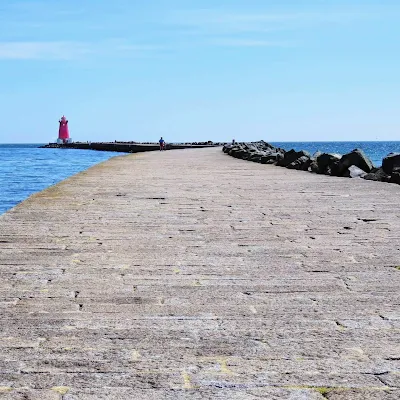
14. North Bull Island
North Bull Island in Clontarf is a fantastic Dublin walk if you enjoy birding and coastal scenery. Traverse the island from south to north venturing among the grass or the dunes along the beach.
Walk to Our Lady, Star of the Sea and be treated to a view of the Poolbeg smokestacks and Poolbeg Lighthouse across the mouth of Dublin port.
After your walk, relax on the beach or take a courageous swim in the sea. Locals go swimming at any time of year. The cold water is bracing and is meant to be good for your health.

15. Sandymount Strand to Sydney Parade
Estimated time to do this dublin walk: .
Strand Road in Sandymount faces the Irish Sea and is lined with posh homes facing the water and Dublin’s iconic Poolbeg towers beyond.
For this Dublin walk, stroll Sandymount Strand and let the sun dancing on the pastel facades and doors lift your spirits.
Near Sydney Parade, you’ll discover a Martello Tower, one of the defensive forts built during the period of British rule over Ireland.
These towers dot the coast of Dublin and are a reminder of a long and contentious period of Irish history. From a purely aesthetic perspective, Martello Towers make a great focal point for photography.
Dublin Walks that are Further Afield
16. maynooth university.
Maynooth is a university town located less than an hour by train from Dublin City. This makes Maynooth one of the best day trips from Dublin.
In fact, Maynooth rates as one of the best places in Ireland to visit by train . Take Irish Rail from Connolly Station to Maynooth.
Walk along the Royal Canal and admire the pretty stone bridges spanning the canal. Mark your progress by counting the fishing places marked off at regular intervals.
Spend some time exploring the ruins of Maynooth Castle (one of the coolest Irish castles we've visited) which is located right in the centre of the village. Enter through the impressive stone archway into a lush courtyard surrounded by the remains of the castle wall.
The highlight of a Dublin walk in Maynooth is definitely Maynooth University. Maynooth University delivers ivy covered buildings and historic facades that offer endless photo-ops.
There are two sides to Maynooth University. My favorite part is the historic South Campus and St. Patrick’s College. If the door is open, step inside the church anchoring St. Patrick's College.
The colorful ceilings and pipe organ will make you reach for your camera. Seek out the beautiful interior courtyard at St. Patrick’s college church.
Make time for a walk in the Bicentenary Garden before catching the train back to Dublin city. This sprawling park is located next to Maynooth University's South Campus and includes an atmospheric walled garden that is a serious highlight of this Dublin walk.
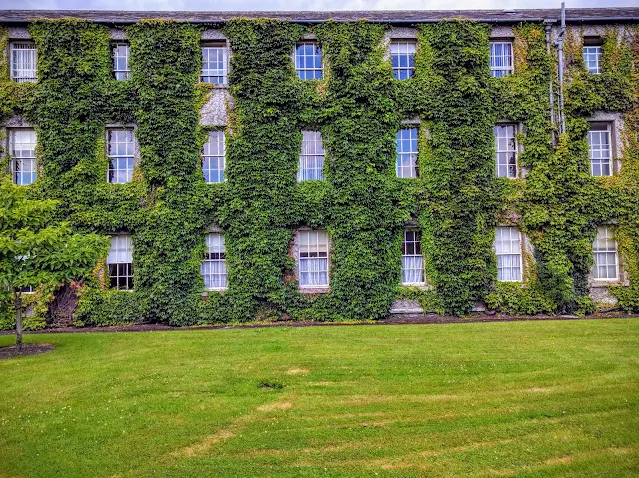
17. Hike Malahide Castle
The demesne and gardens at malahide castle make for another idyllic dublin walk. pay 7.50 eur pp for access to the walled garden, butterfly garden, west lawn, and fairy trail. throughout the walking trails, you’ll find peek-a-boo views of malahide castle. there is nothing finer and more relaxing than watching beautiful butterflies flit here and there before alighting in that perfect spot for a photo. the ivy-covered walled garden is home to an atmospheric victorian-era greenhouse.this dublin walk is a little further afield from dublin city centre, but is accessible by car and the dart train., 18. walk ardgillan castle.
Many of my favorite Dublin walks are located on the grounds of the city and surrounding coast’s castles and manor homes.
Ardgillan Demesne on Dublin’s north coast surrounds the big house and offers the ideal surroundings for a walk. Ardgillan Castle is perched above the Irish Sea.
Listen to the wind whistle across the land and crashing waves below. You may even hear trains passing by along the coast. Ardgillan Castle and Demesne was owned by the Taylor family for over 200 years.
In exchange for rights for the train to pass over their land, the Taylors could hail any passing train and ride for free. Not a bad deal!
Take some time to explore the well-coiffed hedges and flower beds of the Ardgillan Castle walled garden. One of the most enchanting features of the Ardgillan Castle grounds is the Ardgillan Castle Fairy Tree Trail.
Walk the forest trail edging the the Ardgillan demesne and formal gardens. Here you’ll discover tiny houses that legend has it are to home to resident fairies.
19. Hike to the Hellfire Club
Head to the Dublin Mountains for a hike you won’t soon forget. Many locals turn up their nose at the Dublin Mountains in favor of the bigger, and presumably more picturesque Wicklow Mountains.
They are missing out! The trailhead of the Hell Fire Club hike is about a 30 minute drive from Dublin City Centre.
Situated on Montpelier Hill, this hike used to be the site of an ancient passage tomb. In 1735, Richard Parsons, a known practitioner of the black arts, founded a Hunting Lodge on the site.
Rumors abounded about sex, drinking, and gambling that took place at the lodge, not to mention satanic rituals and unexplained phenomena. This is how a quaint stone hunting lodge earned the nickname the Hell Fire Club.
Dublin.ie has a fascinating account of the Hell Fire Club’s supernatural history. Today, you’ll hike through the forest to emerge at the top of the hill at the Hell Fire Club itself.
Wander around the ruins and then sit and enjoy a picnic lunch with spectacular views over Dublin City.
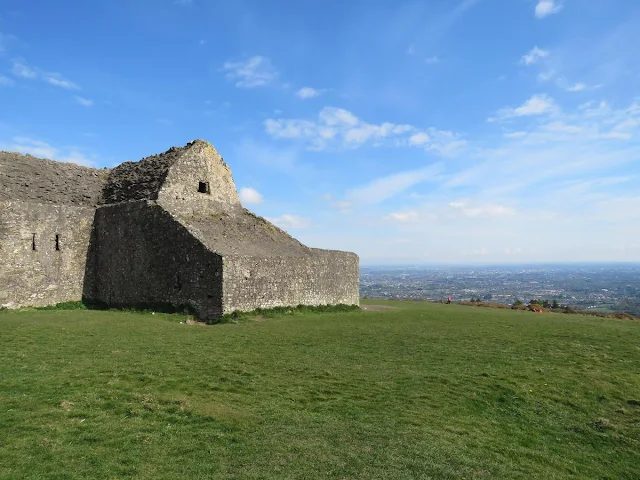
Guided Dublin Walks
Up until this point, I’ve focused on self-guided Dublin walks. For those of you looking for more in-depth commentary and history, there are a couple of specialized Dublin walking tours that I recommend.
20. Dublin Literary Pub Crawl
Dublin’s Literary Pub Crawl is the perfect evening walk. The Literary Pub Crawl convenes at The Duke in Dublin City Centre.
Throughout the evening, you’ll be entertained by readings from some select Irish authors and even a little song and dance.
This guided walk takes you to three different pubs (we visited The Duke, O'Neill's, and The Old Stand) where you can sup on a pint while learning about Ireland’s literary history.
Your guides will ask trivia questions throughout the night. Pay close attention for your chance to win a small prize at the end of the tour.
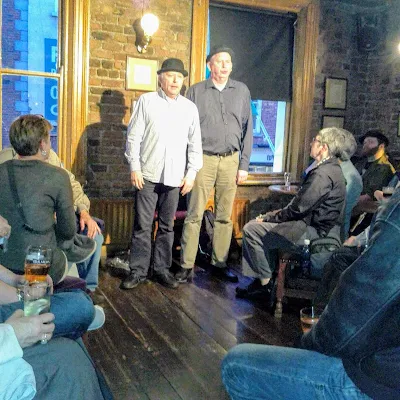
21. 1916 Rebellion Guided Walking Tour
Sign up for the 1916 Rebellion Walking Tour (15 EUR at the time of writing) to take a deep-dive into Dublin history.
At the start of the tour, you'll be armed with a sheet of mug shots showcasing the different personalities that played a role in 1916 Easter Rising.
The tour meets outside the International Bar in Dublin City Centre. Our guide, Lorcan, captured our imaginations with the exciting and volatile history of the 1916 Easter Rising.
Stops included the Bank of Ireland (former Irish Parliament) near Trinity College Dublin. Crossing the River Liffey, we could see Liberty Hall which was Ireland's first skyscraper.
Liberty Hall has 16 stories: one for each leader executed by the British after the 1916 Rebellion.
On O’Connell Street, we encountered the statue of Jim Larkin who founded the Irish Labour Party with James Connolly. We reflected on the siege outside the General Post Office.
Irish Freedom Fighters held the GPO for 6 days intense days. The tour ends at Dublin Castle. While the 1916 Rebellion was ultimately suppressed by the British, it paved the way for an independent Ireland a few years later.
I highly recommend this information-packed tour covering the rich history of a turbulent time in Dublin.
Did you enjoy this post about cool Dublin walks recommended by a local? Sharing is caring...
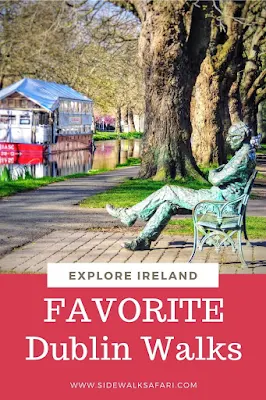
Dublin Walks Post Archive
Bray to greystones cliff walk, note: the bray to greystones cliff walk has been closed to hikers since 2021 due to cliff erosion which has left the trail unstable., estimated time to do this dublin walk: 3 hours.
This Dublin walk starts at the Greystones DART station, the most southernly end of the train line in County Wicklow. Many trains only go as far as Bray so make sure to check the destination on the platform and the train itself before you hop on board.
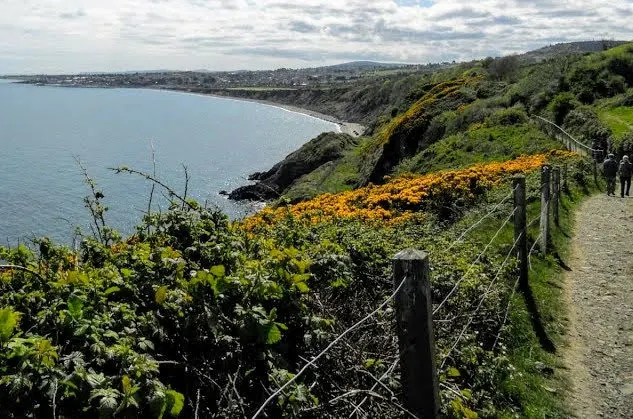
The Greystones to Bray cliff walk is about 8 km and is one of the most popular Dublin hikes on a nice day. You can hike from Greystones to Bray or Bray to Greystones. Take your pick!
You’ll find the trailhead for this Dublin walk past Greystones Harbour. Look over the cliffs at the side of the trail onto the train tracks below and Irish Sea beyond.
On the opposite side, you’ll find open fields. At certain times of year, the trail is lined with colorful yellow gorse.
Be on the lookout for colonies of sea birds nesting in the rocks among the cliffs. Be prepared for any and all weather conditions on the trail. Dubliners like saying: if you don't like the weather, wait 5 minutes.
.jpg)
FOLLOW SIDEWALK SAFARI PART-TIME TRAVEL BLOG$type=social_counter
- twitter|15k|followers|follow
- instagram|10.5k|followers|follow
- pinterest|3.8k|followers|follow
- facebook|819|likes|like

Featured In
Terms and Conditions
Privacy Policy

Original Dublin Walking Tour Includes:
- Dublin Castle;
- Christ Church Cathedral;
- Viking Dublin;
- Temple Bar;
- Medieval Dublin;
- 1916 Easter Rising;
- Irish Revolutionary Period & Independence;
- The River Liffey;
- The Ha’Penny Bridge
- Trinity College
- Old Irish Parliament Buildings;
- Irish Language, Traditions and Customs;
- Irish Literature and culture.
Customer Reviews
Read some of our amazing reviews from visitors just like you.
Keith was very knowledgeable and provided us with a lot of information about Ireland’s history.
Dan was so funny and knowledgeable. He’s also a great storyteller. Wonderful tour. You’ll really learn a lot while enjoying his sense of humor.
Increíble tour! Mucha historia y curiosidades de la ciudad! Gracias a Daniela por todo su conocimiento y por contagiarnos el interés de querer seguir conociendo sobre irlanda!
Muy linda experiencia con Daniela. Explicaciones súper claras y muy apasionada sobre la ciudad y su historia. Lo pase realmente muy bien!
Great experience, many thanks to Keith.
Daniela es fantástica. El tour es muy completo y da mucha información sobre el conector histórico. Totalmente recomendado!
Me ha encantado el tour con Daniela! Muy recomendable el tour y la experiencia inmersiva en Dublin
Daniela ha estado estupenda!!
Excelente el tour con Daniela! Muy entretenida y divertida!
Genial Daniela!
Daniel increible
Dave was absolutely brilliant, very friendly, answered each and every question with enthusiasm and had an abundance of knowledge. Clearly very passionate about what he does and was an excellent guide 10/10. Visited many historic spots and gave many recommendations for places to visit in Dublin.
HELENA'S the best!
Si buscan un tour con buena energía, con buen conocimiento y ultimada mente bien relajado, Daniela lo hace rebién! Estuvo atenta y dispuesta a responder las preguntas con honestidad y realista! Sumamente amable y lo recomiendo!!
Nuestra guía fue Marina, quien supo trasmitir sus conocimientos sobre la historia y la cultura de Dublín de forma muy amena y divertida. Sobre todo me gustó que incluyera anécdotas y consejos sobre qué vale la pena y qué no visitar. Personalmente creo que hizo un trabajo estupendo y recomiendo ir con ella a hacer los tours.
Hemos hecho el free Tour con Marina y ha sido fantástico. Muy amable, muy entretenido y dinámico. Recomendable para todo visitante de Dublín. Mercii!!!!
Un tour muy completo, pasas 3h super entretenidas aprendiendo muchos detalles sobre la cultura irlandesa, mientras visitas los monumentos más emblemáticos (y los diez minutillos para la guiness vienen de lujo). Además, si te toca con Marina, has tenido suerte, de las mejores guias que hemos tenido
dave is the best
Marina es una genia, sabe muchísimo sobre la historia de Irlanda y lo hace super interesante! Recomiendo!
Estupendo tour por Dublín donde Marina nos contó no solo la historia general, si no también las anécdotas de los lugares que visitamos. Tour ameno y muy recomendable!
Marina super amable y simpatica. Explica muy bien todo!
Verry nice guide. Learned a lot about Dublin
Very good experience, they show you a lot of things and stories from the dublin past
Muy bueno el tour con Marina , súper recomendable
Marina una crack!!!
Guida super carismatica, bellissima esperienza, consiglio!!
Super tour! One of the best free walking tours I have done. Ian was an amazing guide 👍🏻
Kieran is a perfect tour guide - straight to the point, sarcastic, dark humour and insightful. I enjoyed the tour a lot. Recommended.
Great tour guide, explaining the history, language and landmarks or Ireland in a fun and engaging way
Fantastic tour with Kieran, who offered a great balance of history, folklore, legend, knowledge, and humour. Highly recommended!
Additional information
Joining the tour.
Please arrive at least 10 minutes before the tour starts and show your booking confirmation to one of our guides. Look for the green umbrellas and lanyards.
Group Bookings
Groups of more than 10 people must contact us and book at least 24 hours in advance.
Getting Here
Our meeting point is at 3 Crown Alley, near Temple Bar Square in the heart of the city centre. It’s a 2 minutes walk from both Dublin Castle and Trinity College. Type Original Dublin into Google Maps or simply click on this map. Either will take you straight to us.
Who are we?
We are Original Dublin – a local Dublin tour guide collective crafting experiences unlike any other in the city to ensure you get the best from your time in the Irish capital.
- [email protected]
- +353876874981
- 3 Crown Alley, Temple Bar, Dublin 2

THE BEST OF DUBLIN - HIGHLIGHTS AND HIDDEN CORNERS
Cost: Adults €25
Seniors/Students €20
Children over 12 years old €15
We highly recommend booking this tour online to avoid disappointment.
Top Highlights
This exceptional and easy-going tour is one of the best introductions to Dublin’s rich history and culture. Enjoy this small-group experience. The maximum number of participants on tour is limited to 16 people per guide, but off season we often have fewer people on each walk. In case we reach 16 bookings, we provide additional guides.
• Explore many of the renowned sites and hidden corners of Dublin with our professional guide
• Learn about Dublin’s 2,000 years of history and the even older cultural Irish influences.
• Discover places you can’t see on a bus tour.
• We only take small groups
Places we'll see or pass by
Please note that all visits are external, but opportunities will be available for such visits after the tour.
- Dublin Castle grounds
- Christ Church Cathedral
- Fishamble Street & Smock Alley
- Meeting House Square, Temple Bar
- Millennium Bridge & River Liffey
- Italian Quarter
- St Mary’s Church (now a famous café/bar)
- Henry & Moore Streets
- O’Connell Street
- General Post Office
- O’Connell Monument
- Former Parliament House (Bank of Ireland)
- Finish outside Trinity College
Take a Closer Look
This exceptional and easy-going tour is one of the best introductions to Dublin’s rich history and culture. Enjoy this small-group experience. Maximum numbers on tour limited to 16 people and is often less. Additional guides are provided where required. (effective from 01 April 2023).The walk takes you to many of Dublin’s icons and also brings you to some wonderful hidden spots too. If you are looking for a comprehensive tour that introduces you to the best of the city centre, on both sides of the River Liffey, then this is the tour for you.
Starting from Dame Street you will wind your way through the former Viking & Medieval Quarter including Dublin Castle and Christ Church Cathedral before wheeling around through Temple Bar and across to the River Liffey to the Northside City and onto the main historic street, O’Connell Street. We will pass by the General Post Office which housed the headquarters of the rebels of the 1916 Rising which resulted in the then destruction of this building and almost the entire street and surrounds. We will finish around Trinity College and the former 18th century Houses of Parliament.
All these places certainly have their interesting histories, but the human stories associated with them often capture more than just their eventful past. Our dedicated guides will share their love for the city with you and make you feel like a true Dubliner.
To crown all this, the tour will also introduce you to many secret gems and surprises that visitors and even Dubliners often miss. Find Dublin’s first but now defunct full-time cinema, a church that’s not a church, a former Lisbon tram now serving as a café. Discover an amusing representation of a da Vinci painting, feel the bounce of a wobbly bridge and enjoy the tale of a post-box that represents Ireland’s transition to independence. And not forgetting a stark-naked representation of a very famous 18th century composer!
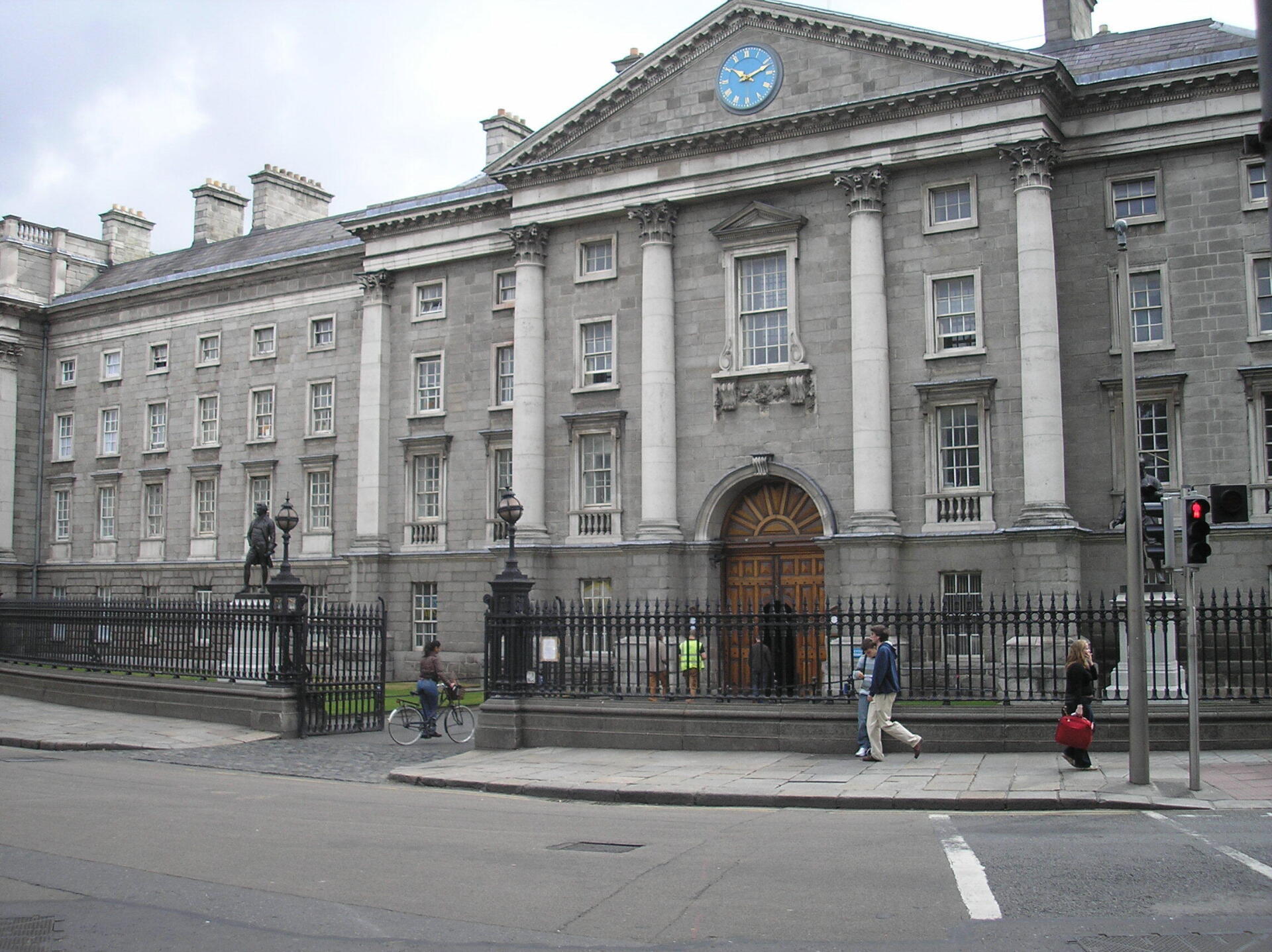
Slide title
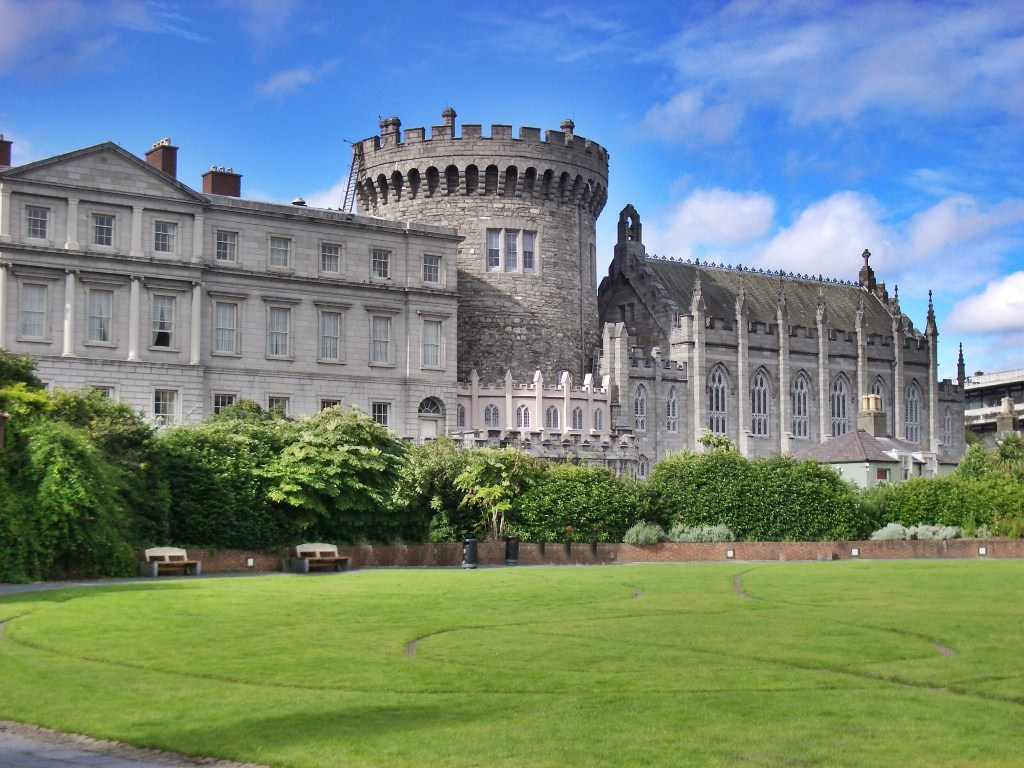
Tour Details
Meeting point, the tree of gold, central plaza, dame street .
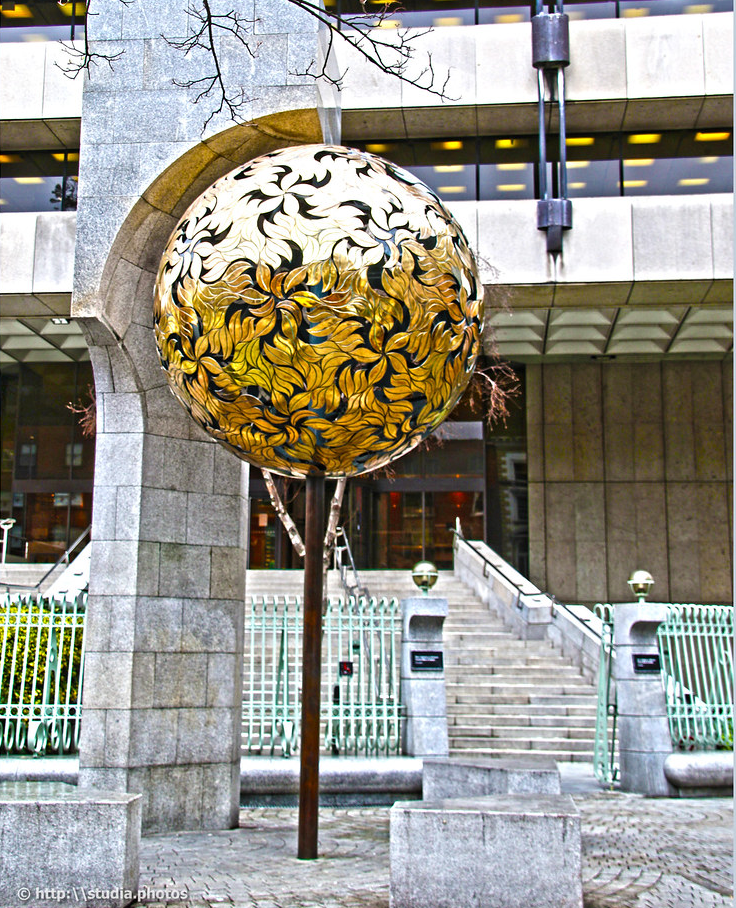
COST
Adult €25
Children €15 (12 to 18 years old)
Children under 12 years old free of change with accompanying adult.
DATE & TIME
Please arrive at least 10 minutes before the tour commences, as the tour needs to leave at the given time and it is not possible to catch up with the guide afterwards.
01 April -30 April
Daily at 10.15 am
01 May – 30 September
Monday through Saturday at 10.15 am and 2.15 pm
Sunday at 10.15 am
01 October – 31 October
01 November – 31 March
Mon, Wed, Fri & Sat at 10.15am
Please arrive 10 minutes before the tour starts. If you miss the starting time, we won’t be able to join you with the tour. However, we can offer a tour at a different time or on a different day (subject to availability).

Office phone:
+353 1 832 9406, emergency phone:, +353 87 905 2480 , [email protected], privacy policy cookie polic y.

+353 83 067 3393
[email protected]

Join Us for the Craic!
Belfast Cork Dublin Galway
We are Yellow Umbrella Tours. We are proud to be local and independent. Join us to experience the best of Dublin.
Best of dublin tour (southside), tips - based, everyday at 10am, 11am & 2pm at the spire (the big needle) on o'connell st..
Join us on this tour to experience the top attractions and get a feel for our charming city.
- Trinity College – Temple Bar – Dublin Castle – Christchurch Cathedral – St. Patrick’s Cathedral
Meet beside the Spire (the big needle) in the middle of O’Connell Street.
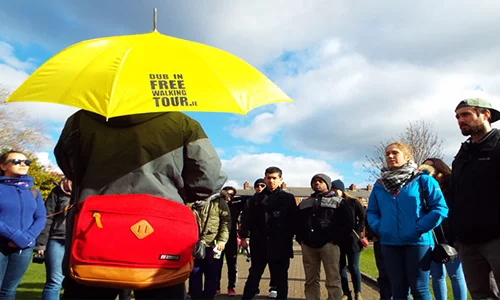
Free Tour Dublin Highlights
Time: 10am, 11am and 2pm every day.
We offer Southside FREE walking tours several times daily. Also check out the Northside FREE walking tour at 3.00pm every...
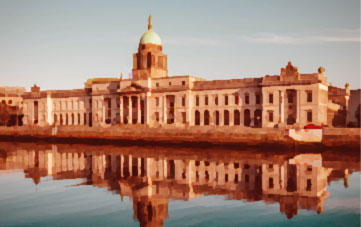
Free Tour Northside
Time : 03.00 pm every day.
On this tour, we will visit famous locations such as The Garden of Remembrance: dedicated to those who gave their...

Tour Gratis Lado Sur
Todos los días a las 11:00.
La calidad de nuestros tours está garantizada porque se basan enteramente en las propinas. Tu guía no recibe dinero de...

Tour Gratis Lado Norte
Todos los días a las 16:00.
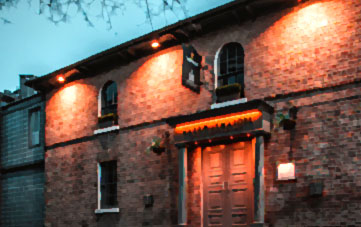
Misterios y Leyendas
Todos los días a las 18:00.
Callejones, leyendas, secretos, misterios… adéntrate con nosotros en el lado oscuro de Dublín para conocer su historia más desconocida.
Explore Our Most Popular Tours
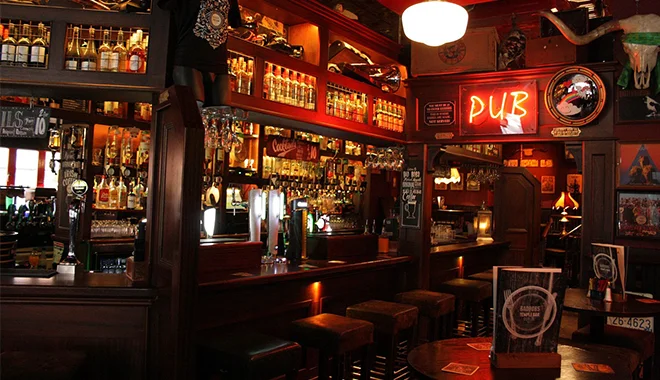
Dublin Traditional Pub Tour
Everyday at 6PM at the Spire (The Big Needle) on O'Connell St.

Private Walking Tours
Want to explore the city on a personal level and from a local perspective?

Testimonials
What people say about us, southside dublin free walking tour.
Southside Tour with Peter was Fantastic. I am all about walking yours in towns and this was one of the best. It lasted about 3 hours, but I could have wandered around with Peter for a couple of more hours and not gotten bored. We got great general history of Ireland and insite to specific sites on the South Doubling tour. Highly recommend.
Absolutely recommend!
During my short trip to Dublin I decided to book a free walking tour with the Dublin Free Walking Tour – South Side. Our guide was Conor (with one ‘n’) who did a great job sharing bits of Ireland’s/Dublin’s history and present in a relatively short amount of time (one can learn a lot in 3 hours) and with some humour. I had lots of fun learning during this tour and I would 200% recommend anyone to book it. I’m sure you won’t regret it!
Great experience
Our tour lasted 2hr45 of the Southside, and was really excellent. Our tour guide gave us lots of information and was happy to answer questions, and was generally very friendly and easy to understand. It’s a contribution at the end as well, but nominally free. Would definitely recommend!
All you need to know within 2 hours
A great mixture between information, fact, cultural insights and first hand tips for pubs and restaurants. Would encourage everyone to go on a tour!
Must-do in Dublin
Had a fantastic South Side tour with Richie on Sunday morning. Very informative and funny, and we learned interesting history about Dublin. It’s three hours but time flies by! Highly recommend to anyone wanting to take a walking tour – best way to get your bearings plus learn about the buildings instead of just looking at them!
Interesting tour!
Very interesting tour about the history of the city of Dublin. Our guide Conor was dynamic and captivating! We recommend to discover the city at the beginning of your stay!
Informative and fun tours with a great guide
We did both the north and south side tours with Peter. He was absolutely fantastic and really knowledgeable, giving an insight into the city we never would have had walking round in our own. He was also really helpful in answering any questions and providing recommendations for the rest of our trip. Great experience and would definitely advise anyone visiting Dublin to book on to both tours.
Educational and fun. Highly recommended!
My hostel recommended this company to me. Incredibly knowledgeable guide for the free morning & afternoon walking tour (tour date 30.11.2021). Did not expect this level of knowledge and presentation skill from a free tour, but will definitely take a closer look at their normal tours next time I am in Dublin. I am sure they are fabulous too. Overall highly recommended!
I agree to the Privacy Policy
+353 87 255 4765

Dublin Strolls
Guided Walking Tours of Dublin City
Daily Tours: 11AM & 230PM

About Dublin Strolls - Guided walking tours of Dublin city
Discover Dublin through the eyes of a local on your guided walking tour. Join your experienced tourist guide, Dermot, to discover Dublin city on foot. We keep our group sizes small to make sure you leave loving Dublin city as much as we do!
Daily Tours at 11:00AM and 2:30PM
Take one of our most popular walking tours; learn about Medieval and Viking Dublin, seek out the grandeur of Georgian Dublin or explore the city's most famous sights on this small group walking tour of Dublin.
We offer customised tours for individuals, families, friends and groups. Have a special interest in literature, history, music? Want to rediscover your city, or your Irish heritage? We will design a bespoke guided walking tour of Dublin city to match your interests, ensuring you have the best day out exploring Ireland's beautiful capital city.

GEORGIAN DUBLIN, SOUTHSIDE
Duration: 2.5 to 3 hours at a leisurely pace
On this guided walking tour discover the delights of Georgian Dublin and delve into its history. Sights include: Georgian Squares, Leinster House, Huguenot Cemetery and much more
Get in touch

- International edition
- Australia edition
- Europe edition
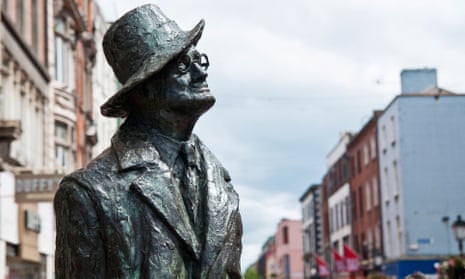
In the footsteps of giants: the ultimate Ulysses walk around Dublin
On the centennial of James Joyce’s modernist masterpiece, we offer a pilgrimage you can fit into a single day
Today marks the 100th anniversary of the publication of Ulysses, by Paris bookshop Shakespeare and Company. It’s also James Joyce’s birthday; he was born on 2 February 1882 – 140 years ago.
Ulysses is contemporary with the Irish Free State, established on 6 December 1922; historians love to pore over its dense, riddling text for clues about the national psyche at the time. The novel and the year have come to be seen as key turning points in Modernism; TS Eliot, whose The Waste Land appeared in December 1922, called Ulysses “a book to which we are all indebted, and from which none of us can escape”.
Joyce signed off his text with the words, “Trieste-Zurich-Paris, 1914-1921”. But it is to Dublin we best go if we want to celebrate Ulysses, which put the Irish capital on the map of premier cities of the imagination – beside the likes of Paris and London – and offered readers a detailed plan of the Irish capital in its perambulating plot, which unfolds over a single day.
Since 1929, Joyce fans have celebrated Bloomsday on 16 June – the fictional date on which the novel’s events take place, in 1904 – with readings, talks, breakfasts, singing, jigs, reels and fancy dress. In 2020 and 2021, the event, forced to go virtual, was dubbed Zoomsday . This year there will no doubt be a bigger than usual Bloomsday – new films and radio productions are already in train and a themed film festival ( bloomsdayfestival.ie ) returns for a third time – but there’s also a lot happening in the build-up.
There are many ways of taking a Joycean tour around the city. Close readers who like a challenge and a wander set off to trace the book’s clues, shadowing the route taken by protagonist Leopold Bloom, despite the fact many buildings and even entire streets have been demolished. Others follow actual maps prepared by others, tag along behind seasoned tour guides or take bus and bike tours. Some have even taken up Bloom’s challenge: “Good puzzle would be cross Dublin without passing a pub”.
There are 14 brass plaques – laid in the pavement in 1988 – marking out the walk taken by Bloom during the course of the novel; there’s a geocache linked to these. But the other central character, Stephen Dedalus – Joyce’s alter ego – also spends much of the book walking, and the suggested stops below contain some of his route.
The Martello Tower, Sandycove
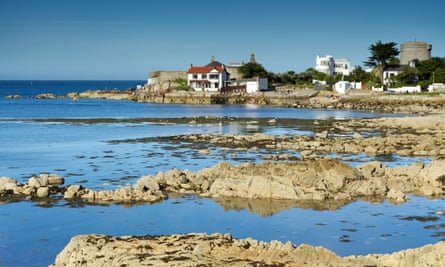
Ireland’s 50 or so Martello towers, likely named after a tower at Cape Martella in Corsica, were built by the British during the Napoleonic wars. This tower, now a Joyce museum , appears on the first page of Ulysses, with Buck Mulligan having a wet shave while testing his banter on Stephen. The opening lines of the novel are repeated over and over in the film Opening Ulysses , created by Ireland’s Department of Foreign Affairs and Museum of Literature Ireland in collaboration with 40 Irish embassies and consulates – a project that perhaps acknowledges many readers don’t get much further than the enigmatic opening.
Sandymount strand

“Am I walking into eternity along Sandymount strand?” wonders Stephen in one of the early stream-of-consciousness sections. Later the same day, Bloom masturbates from the prom while ogling young Gerty MacDowell. This long, broad beach is a place to clear your head before plunging into the labyrinthine novel/city.
James Joyce Centre
In the early 1900s this fine Georgian townhouse at 35 North Great George’s Street gave home to a dance academy run by Prof Denis J Maginni, a character who turns up a few times in Ulysses. The building was saved from the wrecking ball by a Joyce scholar. Leopold Bloom’s fictional house at 7 Eccles Street wasn’t so lucky, but the front door of the property is on display here. Due to Covid-19, the centre is currently closed; reopening date tbc.
No need to choose too carefully; Ulysses allows plenty of scope for “arsing around from one pub to another”. None of the pubs mentioned in the novel looks anything like they would have done back in the day. Davy Byrnes , which Leopold Bloom deems a “moral pub”, is OK for a pint, though the menu doesn’t feature the gorgonzola sandwich he enjoys with a “good glass of burgundy”. Kennedys on Westland Row, formerly Conways, has hosted Bloomsdays, and claims associations with Oscar Wilde and Samuel Beckett, as well as Joyce. The Oval feels kind of time-honoured and lived-in – though the original was destroyed in the 1916 Easter Rising .
O’Connell Bridge
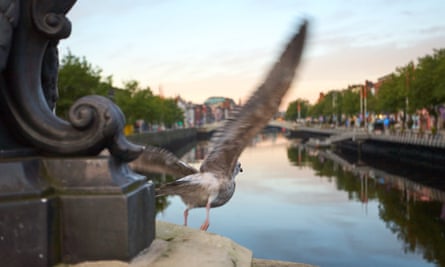
This famous bridge over the River Liffey – built between 1791 and 1794 as Carlisle Bridge and renamed in 1882 after Irish political leader Daniel O’Connell – has a starring role in The Dead, the long, final story in Joyce’s Dubliners. The character Gabriel has an epiphany here, realising he must embrace his country’s quest for independence. In Ulysses, Bloom pauses on the bridge to feed seagulls Banbury cakes (currant-filled pastries similar to Eccles cakes).
National Library of Ireland

This classical building on Kildare Street, designed by Cork-born Thomas Newenham Deane, dates from 1877. In the Scylla and Charybdis episode, Stephen – who has just given some scholars a lecture on his “biographical” theory about Shakespeare’s Hamlet – and Bloom almost meet in the library entrance. The coffered ceiling of the main reading room, stained glass, reliefs and mosaic floor are worth a look.
Museum of Literature Ireland

Branded MoLI for 2022 in homage to Molly Bloom, Joyce’s heroine in Ulysses, and recently reopened to the public, the museum is hosting Love, Says Bloom (2 Feb-3 Jul), an exhibition curated by Nuala O’Connor dedicated to Joyce’s relationship with his wife, Nora Barnacle, their children, Lucia and Giorgio, and grandson Stephen. Until June 2022, the museum is also hosting Suzanne Freeman’s Ulysses, a Treasure Hunt: the episodes of the novel are depicted in a series of small wooden cases dotted around the museum. Copy No. 1 of Ulysses is kept here. Full details of all events can be found at ulysses100.ie .
Booksupstairs
You can’t pay homage to Joyce without popping into a bookseller’s; this independent bookshop at 17 D’Olier Street has itself gone walkabout since opening in 1978, passing from a site above a furrier’s on South King Street, George’s Street Market Arcade and 36 College Green – opposite Trinity College – before settling here. The shop stocks new and secondhand editions of Joyce’s works and has a cafe. Consuming Joyce (Bloomsbury), a new book by John McCourt, analyses, among other things, why we go on pilgrimages instead of reading James Joyce.
Glasnevin cemetery
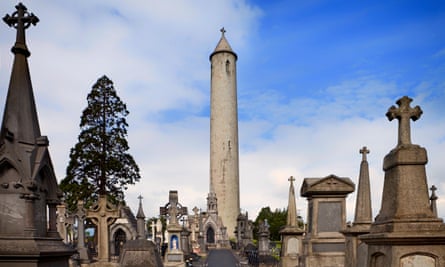
Death is a key motif in Ulysses. Stephen is mourning his mother’s passing. Bloom is on the way to Paddy Dignam’s funeral at this large cemetery north west of the city centre. The tomb of drowning victim Matthew F Kane says he was the “model for Patrick Dignam” and four other people in the novel. While Joyce was writing Ulysses, the great influenza pandemic of 1918-1920 was slaying millions. In the Hades episode of the novel, Bloom muses: “Whooping cough … Only measles … Scarlatina, influenza epidemics. Canvassing for death. Don’t miss this chance”. Thinking as an advertising agent, he imagines the rival plagues as travelling salesmen, bidding for business (ie bodies).
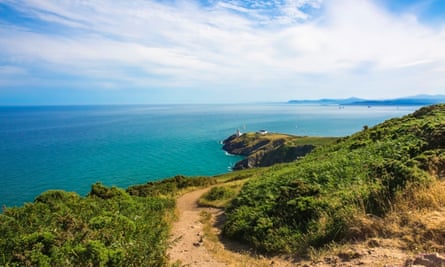
This beautiful peninsula to the north east of Dublin has special significance in Ulysses. Bloom proposed to Molly here. Howth is also a prompt in Molly’s final soliloquy, when she recalls why she loves him (“yes he said I was a flower of the mountain yes”). Dublin is where Bloom is forced to confront the fact he is a cuckold. For hope and faith, you have to leave the metropolis behind, go to the edge, study the sea.
- Dublin holidays
- Ireland holidays
- Cultural trips
- James Joyce
- City breaks
Most viewed

COMMENTS
1. Molly Malone Statue. Day 1 of our self-guided walking tour of Dublin kicks-off at the now-iconic Molly Malone Statue on Suffolk Street in the heart of the city. The bronze statue shows Molly, a famous character from the Irish song 'Molly Malone', who sold 'Cockles and Mussels' on the streets of the capital.
G. Saint Patrick's Cathedral. Located 5-10 minutes down St Patrick's Street, Saint Patrick's is Dublin's second cathedral. Jonathan Swift, best known as the author of Gulliver's Travels, is buried under its floor. He was Dean of the Cathedral from 1713 to 1745. Tickets must be purchased to enter the edifice.
The second attraction on our Dublin, Ireland sightseeing tour is St. Stephen's Green. The 22-acre park in the center of Dublin was created in 1664 and has been open to the public since 1880. St. Stephen's Green features a pond, a bandstand, memorials, statues, several paths and green lawns.
A walking tour of Dublin, self-guided, does it need a lot of preparation and map-work? Actually, it does not, as Ireland's capital is ideal for a leisurely stroll that will take in most of the top attractions too. Most of the best sights of Dublin are situated in a comparatively small area. To get a good impression of this lively and historic ...
Dublin Walking Tour Map Walk 3 - Top 16 attractions, guide to Historic Dublin, ... The Ring of Beara - An 85 mile circular route, similar to Ring of Kerry and Dingle Peninsula, however it is far less travelled. In that sense, it is a better drive as there are far less cars on the road. I found the Ring of Beara far more dramatic than either ...
3. The Cruagh Woods Walk. The Cruagh Woods Walk is one of the more popular forest walks in Dublin, and it's the perfect ramble for a fine Saturday morning. You'll find Cruagh Woods 16km south of Dublin, not far from Rockbrook Village, and around a 5-minute drive from both Tibradden Wood and the Hellfire Club.
7. Temple Bar And The Irish Rock 'N' Roll Museum. Curved St, Temple Bar, Dublin 2. The area you've been walking through is called Temple Bar. For newcomers, the name can be confusing - it's the name of a neighborhood, not a drinking establishment. For the "Bar" part of the name, think sandbar rather than whiskey bar.
Top self guided Dublin walking tour exploring Dublin's popular, not to be missed attractions. Includes 3 walking tour guides and maps for a complete package. ... Dublin Ireland Walking map of three routes: Purple Route (Downtown - Walk 1), Black Route (Temple Bar, Square and Parks - Walk 2), Orange Route (Old Dublin - Walk 3) ...
The rest was destroyed in an uprising in 1916 that finally led to Irish independence. Dublin self-guided walking tour: the Monument of Light. This is the Spire. Its real name is the Monument of Light. It is 120 m high and made of stainless steel. It's three metres wide in the beginning and 10 cm wide at the top.
The highlights of Dublin: one day walking tour. This self-guided walking tour of Dublin is approximately 8km (5 miles) long and can easily be covered in a day, including visits to some of the attractions along the way. I ventured off this route many times whenever I spotted something interesting, which resulted in a total walking distance that ...
Choose from tours that focus on history and hidden gems to food and entertainment, or, if you're feeling especially daring, even tours focused on true crime and haunted places! No matter what your interests are, there's a walking tour to satisfy you. With this guide from Visit Dublin, you'll have no problem finding the best walking tour ...
Sightseeing Walk: A Walk with Famous Irish Writers. Discovery Walk: Temple Bar Area Walking Tour. Discovery Walk: Dublin by Night Walking Tour. Discovery Walk: City Center Shopping. Discovery Walk: Georgian Dublin Walking Tour, North. Discovery Walk: Georgian Dublin Walking Tour, South.
Linger and sip coffee en route. Pack a picnic and just start walking. Set your sights on the little red lighthouse in Dublin Bay and set off on your South Wall stroll. Book a guided walking tour, themed around history or food or pubs or U2. Whatever your interest, there's a walk to match it. You can walk with purpose, following a specific ...
Northern Ireland Highlights Day Trip Including Giant's Causeway from Dublin. 5,078. from $95.57. Dublin, Ireland. Ultimate Day in Dublin (Walking Tour) 17. from $375.71. Price varies by group size. Dublin, Ireland.
Full description. Dublin is a small city with a huge history. You'll explore over 1,000 years of history on a walking tour of the city centre, venturing from Dublins Viking origins, through medieval streets, on to Georgian boulevards and Victorian slums. We'll take you through the ages of Dublin, exploring the stories that have peppered its ...
Estimated Time to do this Dublin Walk: 1 hour. The demesne and gardens at Malahide Castle make for another idyllic Dublin walk. Pay 7.50 EUR pp for access to the Walled Garden, Butterfly Garden, West Lawn, and Fairy Trail. Throughout the walking trails, you'll find peek-a-boo views of Malahide Castle.
Full description. Discover the real Dublin with this highly-rated walking tour of Ireland's capital. Starting at the Tourist shop at 12 Ashton Quay, Dublin, Co. Dublin, D02 TE81, Ireland , journey along the cobbled streets of Dublin's past and present on this fully guided walking excursion. Revel in the fascinating stories, steeped in history ...
This is the definitive walking tour of Dublin. Our beloved city may be small but its stories, its characters and its buildings can take you on a journey. Join us and travel from early Viking settlement to modern European capital city. Witness a thousand years of humour, heartache, turbulence and triumph. ...
01 May - 30 September. Monday through Saturday at 10.15 am and 2.15 pm. Sunday at 10.15 am. 01 October - 31 October. Daily at 10.15 am. 01 November - 31 March. Mon, Wed, Fri & Sat at 10.15am. Explore the best of Dublin with Pat Liddy's Walking Tours. Discover the highlights and hidden corners of the city on this exceptional small-group ...
Everyday at 10am, 11am & 2pm at the Spire (The Big Needle) on O'Connell St. Join us on this tour to experience the top attractions and get a feel for our charming city. - Trinity College. - Temple Bar. - Dublin Castle. - Christchurch Cathedral. - St. Patrick's Cathedral. Meet beside the Spire (the big needle) in the middle of O ...
Daily Tours at 11:00AM and 2:30PM. Take one of our most popular walking tours; learn about Medieval and Viking Dublin, seek out the grandeur of Georgian Dublin or explore the city's most famous sights on this small group walking tour of Dublin. We offer customised tours for individuals, families, friends and groups.
Today marks the 100th anniversary of the publication of Ulysses, by Paris bookshop Shakespeare and Company. It's also James Joyce's birthday; he was born on 2 February 1882 - 140 years ago.